
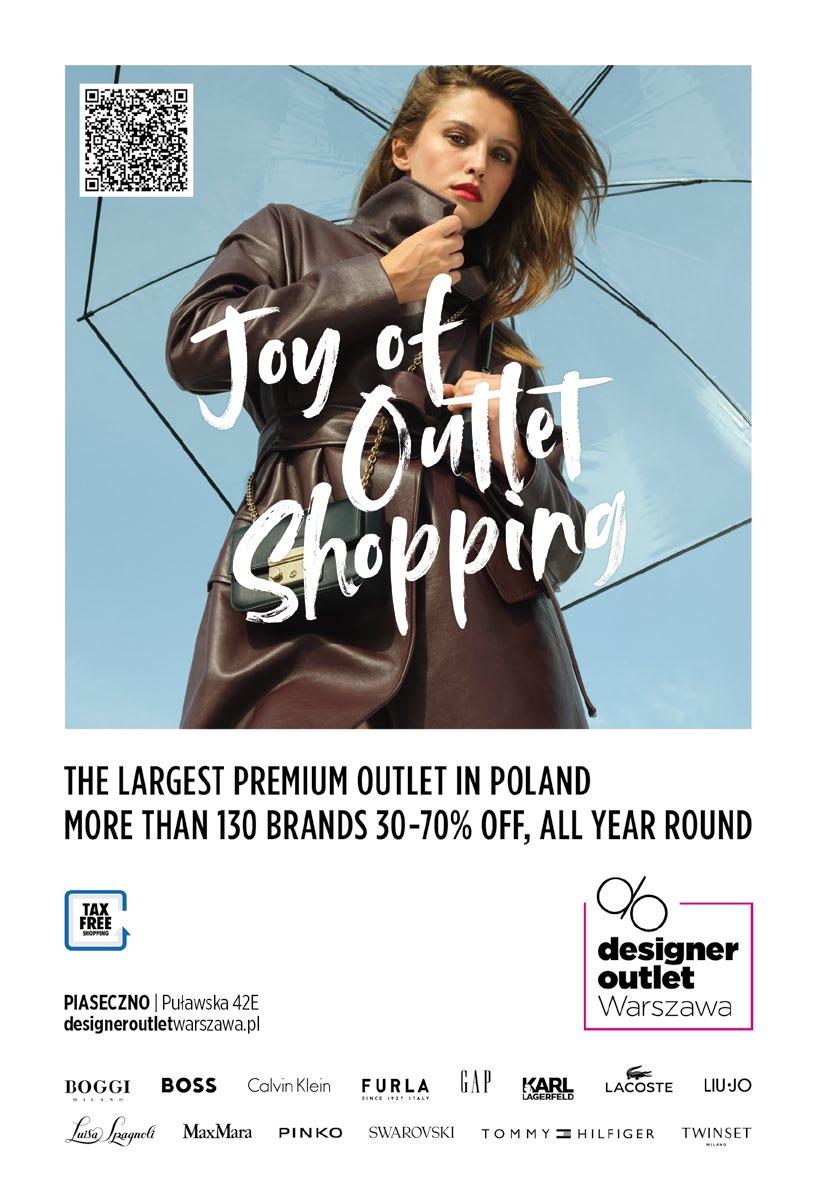
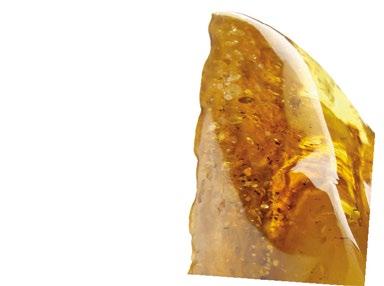
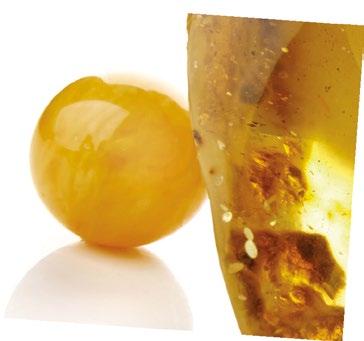

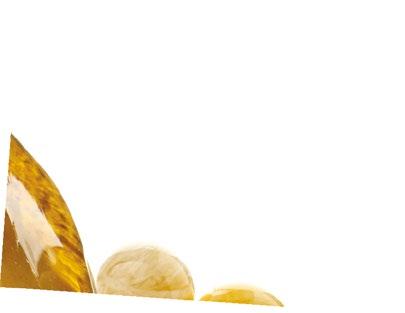

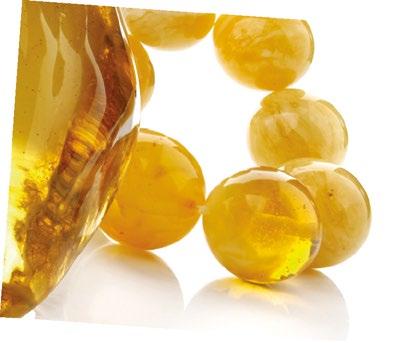


www.amberwarsaw.pl
www.warsawamber.pl

Jazdów
Lennona
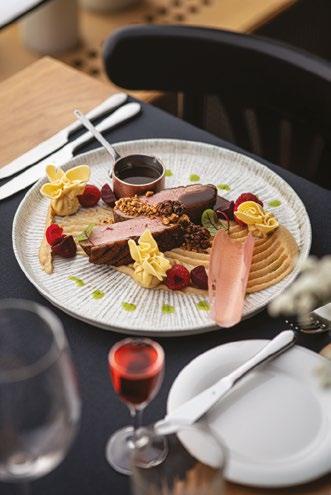

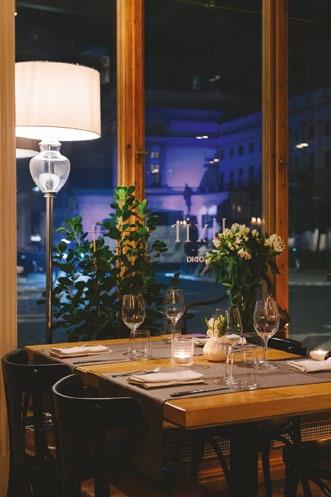











www.amberwarsaw.pl
www.warsawamber.pl

Jazdów
Lennona



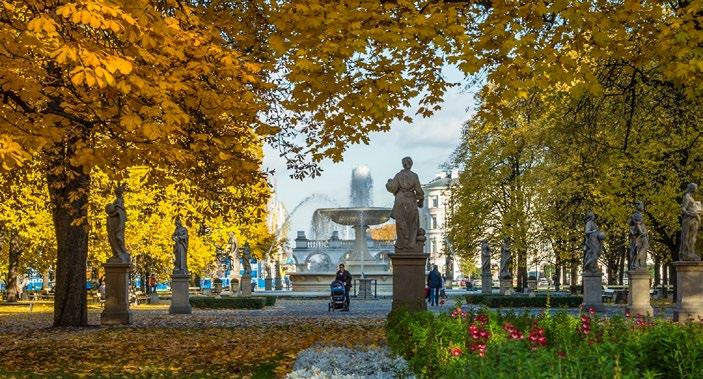

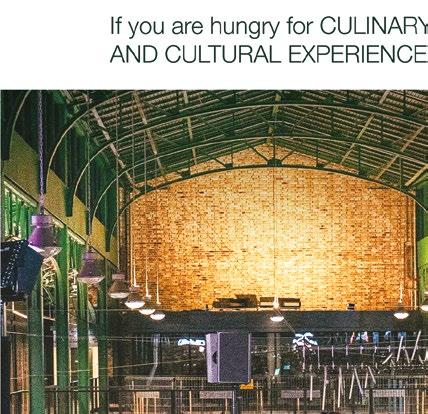
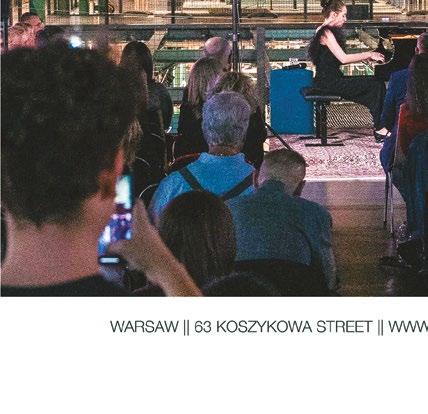


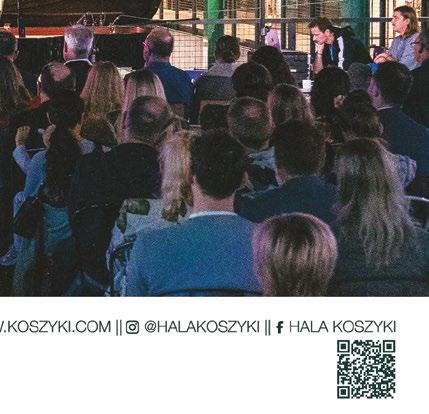
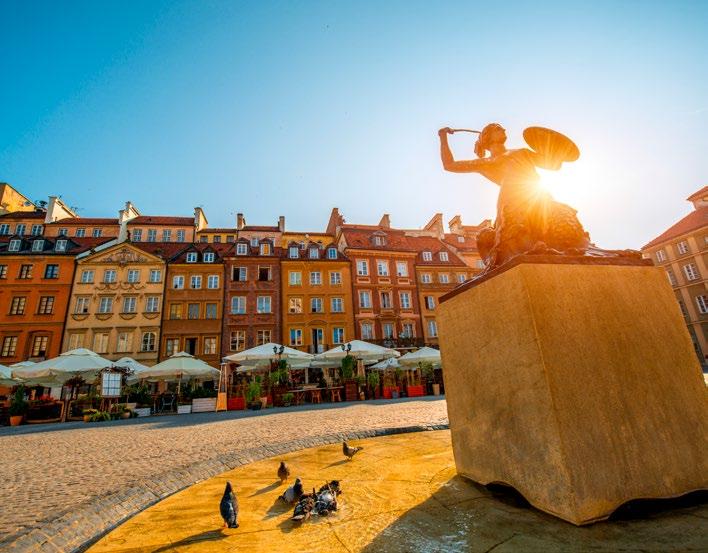
Warsaw’s market square in the Old Town is the epitome of excellent dining, all in a beautiful atmosphere.
Located on the Vistula River at the very crossroads of Central Europe, Warsaw is the 8th most populous city in the European Union (1.8 million people) and a major cultural, political and economic hub.
The city has had a troubled history ever since King Sigismund III Vasa moved his royal court from Kraków, making Warsaw the new Polish capital in 1569. Pillaged by the Swedes in the 17th century, and occupied by Russia for most of the 19th century, Poland was off the map for 123 years before returning in the aftermath of WWI. The interwar period signalled a golden age for Warsaw, as the city developed on par with other great European capitals.
WWII brought new suffering, however. Occupied by Nazi Germany, Warsaw saw its cultural monuments defiled or stolen, and its Jewish population of 350,000 systematically exterminated. With liberation in sight, the Polish population rose up against their German occupiers in August 1944, only for Soviet forces to look on as the Nazis brutally crushed the Uprising and destroyed the city in reprisal. When the fires were extinguished, 150,000 more civilians were dead and German occupation had merely been traded for Soviet oppression, as Poland was pinned under Moscow’s influence for the next four decades, during which Warsaw was rebuilt in communist fashion, earning a reputation as a charmless city of concrete.
But that was then, this is now. A compelling blend of East and West, past and future, today’s Warsaw is a modern metropolis of complex character and rich rewards for those who get to know it. Gone are the gloomy images of yesteryear as the city restlessly evolves, buzzing with energy and optimism. Whether you’re here to explore trendsetting urban culture or UNESCO treasures, world-class dining or luxury boutiques, you’ll hardly be disappointed by all the modern capital has to offer. Enjoy Warsaw!
Warsaw In Your Pocket is designed to provide you with all of the ideas, tools and information you need to explore the city on your own, stay offline as much as possible, and really connect with the city you’re visiting.
Over here at IYP we still believe that the best way to understand the space you’re in is with a map, and the most immersive way to explore it is on foot. As such, our Sightseeing chapter is organised into geographic areas of interest with detailed district maps to help you navigate them. Selfguided district tours include descriptions of all the most important sites, plus local tips on where to eat and drink in each area. There are also intriguing ‘Crossroads’ moments that allow you to be lured towards alternative adventures, either on foot or via public transport.
Throughout the guide, page references are liberally used to lead you to related info on a topic elsewhere in the guide, while QR codes will take you to our website when we feel there’s more to know than can be expressed in print. Each venue listing includes a map coordinate (E-8, for example) that correlates to the city map on p.2-3. If there’s a specific venue you’re searching for, use the Venue Index in the back of the guide to quickly find it, or simply follow our informed suggestions.
From the staggering 230-meter height of Highline Warsaw, you can get incredible views of the city. They also offer some delicious cocktails at the HighGarden Rooftop Lounge (p.107).

IYP City Guides Sp. z o.o. Sp.k. ul. Karmelicka 46/51, 31-128 Kraków iyp.com.pl poland@inyourpocket.com
Circulation
12,000 copies published every 2 months
Of course, space in our print guide is a finite resource, but if you don’t find what you’re searching for here, we’re confident you’ll find it on our website. Visit warsaw.inyourpocket.com for more info about the capital, and poland.inyourpocket.com to see just how much of the country we cover.
Here is some extra content we wish we had room for in print this issue:
Warsaw has tons and tons of green spots: beloved parks that are packed with fields, fountains and quiet strolling areas to meander with a coffee and a book.
From Halloween to the hauntingly beautiful All Saint's Day, Poland is rife with fascinating holidays and traditions this time of year.
Warsaw has seen a lot of impressive women pass through its city streets -- from artists, to activists, from writers to scientists, feminist history in our city is awash with stories of bravery, strength and creativity. Celebrate these amazing women by reading about some of our favorites.
Editor: Anna Merriman
Sales Consultant: Jarek Śliwiński (+48) 606 749 643
Marketing: Monika Boguszewska-Stopka (+48) 728 879 494
Research: Karolina Adamik
Layout & Maps: Tomáš Haman
Copyright Notice
All content copyright IYP City Guides Sp. z o.o Sp.k. and its partners, unless otherwise stated. No part of this publication may be reproduced without written consent from the publisher. The brand name In Your Pocket is used under licence from UAB In Your Pocket.

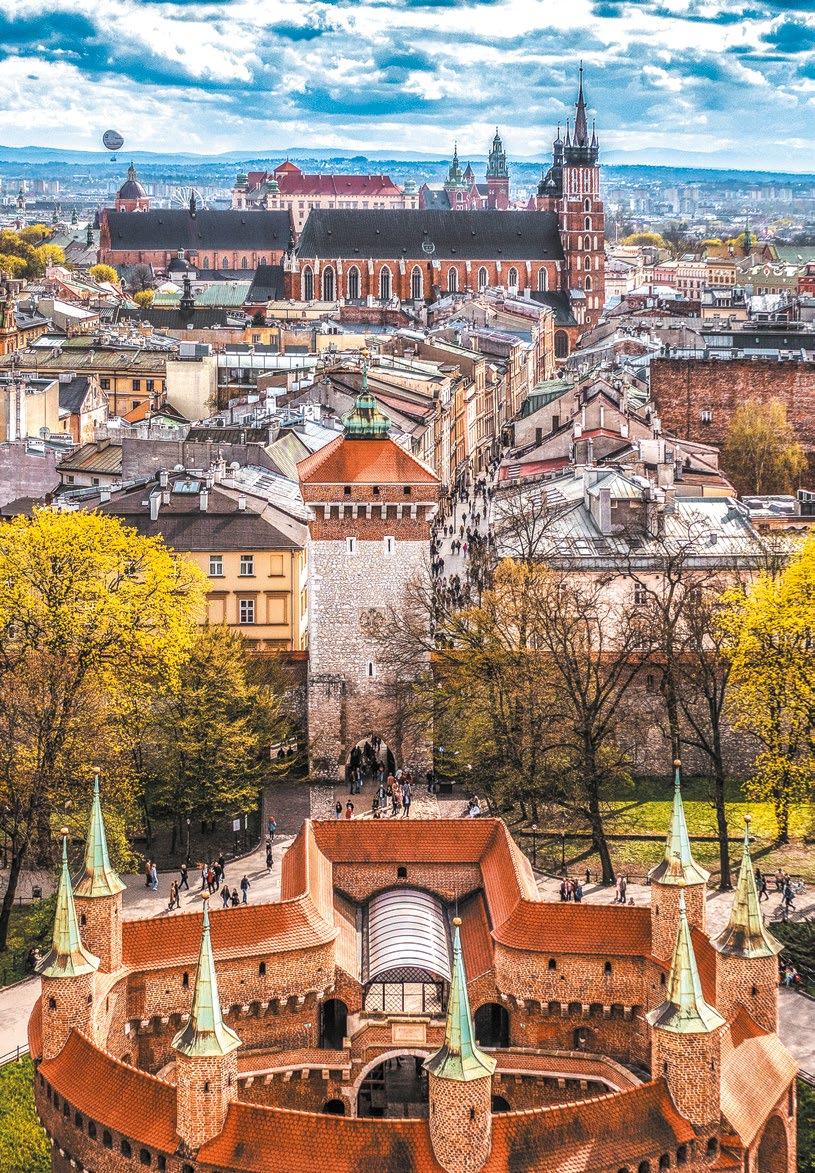


Anyone who has been in Warsaw during the spring or summer is likely to argue that those two seasons are prime visit-Warsaw times. Of course, it makes sense. Cafe culture, blooming flowers, sun, etc. etc. But we’re here to tell you they’ve got it all wrong. The prime time to visit this city is autumn.
This is when the weather takes on a distinct crisp note, when restaurants string up cozy little lights and place pumpkins outside their front doors. This is the time when Polish food really hits the spot -- warming soups, fresh-picked mushroom sauces, slow-cooked duck with warm cranberry sauce. Soon you’ll see the twinkly cafe lights advertising winter tea or wino grzane. You’ll see great fall coats and stylish boots, you’ll smell the bigos and barszcz in the air, you’ll stop by a scary movie festival in the city, or photograph the bright yellow and orange trees in the park...
Autumn is what Warsaw does really well, so let us introduce you to all the best parts of autumn in the city, from ambiance to food, holidays and more.
Poles are proud of what they call the ‘Golden Polish Autumn’ (złota polska jesień) - a period of sunny and warm weather which often coincides with leaves changing colours. Even if the weather isn’t that warm (this year it seems like it’s leaning a little more to the chillier, cloudy side) the nature sights are still well worth a visit. Even on a cloudy, rainy day, the trees in the park are simply stunning.
Of course we recommend trying Łazienki (p.58), with all of its trees, statues, water features, etc etc. Pole Mokotowskie (F-11/12) is also a great bet, especially since it’s been recently revamped with tons of walking paths and more. Skaryszewski Park (p.66) is one of our favorites -- a natural, more wild,
area that still has some of the best walking trails, benches and ponds in the city (you can feed the ducks!) or the sprawling Kampinos Forest National Park on Warsaw outskirts. This one is basically a major national forest and we would recommend blocking out a whole day to explore.
If you want the full city vibe, then this is also a great time to take in the sweeping panoramas offered by Warsaw’s viewpoints. The best one (and newest!) is Highline Warsaw (p.17) atop the Varso Tower, the highest tower in the EU. And the Highline’s observation deck, at 230 meters high, is really something to gawk at (or really, from) because you can get 360-degree views of the center of the city from up here.
Or something free and close to the Old Town, walk on over the oh-so-appealing sounding Dung Hill (p.46) and the surprising city garden atop the University Library (p.56). If you’re willing to shell out a few złoty, the belltower of St. Anne’s Church (p.63) and the viewing terrace on the 30th floor of the Palace of Culture and Science (p.29) will let you see far across the town.
If there’s something Poland does well, it’s warming comfort food. Now, don’t get us wrong, there’s plenty of great light summer food to be had, too. But we’re telling you: this country really shines when it comes to the belly-warming, mushroom-and-potatoes kind of thing.
Let’s start with mushrooms. Fall is mushroom season, period. Now, hunting for wild forest mushrooms is a popular activity across much of central and eastern

Mushrooms are a fall staple in Poland, and a must-try at any restaurant this time of year.
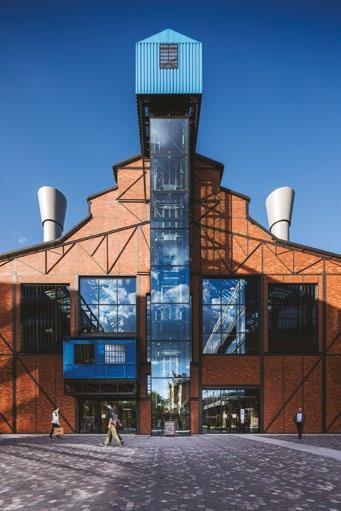
Europe, from Germany to Russia, but it’s difficult to overstate how much Poles like their mushrooms. The country has been the world’s top mushroom exporter since 2007, and come fall, Poles head to forests en masse, baskets in hand, to hunt for their favourite edible fungi. According to the Polish Centre for Public Opinion Research some 77% of Poles have been mushroom picking at least once in their lifetime, and over 40% seem go at least semiregularly. There is a lot to choose from: Polish forests are a treasure trove of mushroom species, with over 1000 edible varieties (and many poisonous ones).
Highly skilled mushroom pickers can usually positively identify some 40 edible species. Favourites include the stately porcini mushrooms, slippery jacks, saffron milk cups, bay boletes and bright yellow chanterelles, which pair nicely with scrambled eggs. Once picked, the mushrooms can be dried, marinated in vinegar or immediately find their way into home-cooked meals. Unsurprisingly, forest mushrooms feature in many traditional Polish dishes (p.22), often paired with cabbage.
If you have a car or are willing to take a long train ride, you could certainly get out of the city and pick your own, but to save time (and for your own safety)

it might just be better to stay in the city and get your mushroom fix at a Polish restaurant where you can try traditional Polish dishes, many of them with mushrooms.
For that, we recommend hitting up a Milk Bar, which is essentially (not a bar at all) a cafeteria with some of the most traditional food you can get in the city. You order at the counter and then grab your tray of food and enjoy it with all locals. Try Bar Bambino (G-9), Bar Mleczny Familijny (G-7) or Bar Prasowy (G-11), all of which serve tasty mushroom dishes (mushroom gravy over dumplings is a must!)
But what are the key warm foods in the chillier months? Well, there’s a few. Here are our favorites:
Bigos—a sour cabbage and mushroom and kiełbasa stew, most prominently found around Christmas time. Also called Hunters’ Stew. Żurek—traditionally an Easter dish, we have to say this sour rye soup is simply incredible in the chilly months.
Placki ziemniaczane—basically potato pancakes. You can have all kinds of toppings but we really recommend a mushroom sauce for that autumn feel. Pierogi—you know it, you love it! And we suggest the meat pierogi for fall, or the spinach and cheese, which is becoming increasingly popular in recent years.
A note on dumplings: Pierogi are the most famous, of course, but Poland actually has many kinds of
dumplings, all of which you should try during the chillier months. Many of them use some combination of flour, potatoes and eggs in various ratios and various shapes. Try Silesian dumplings (Kluski śląskie), which have a little indent in the middle that perfectly holds all manner of sauces. Or Kopytka -- a classic -- which are kind of like Italian gnocchi and excellent little bites to pour sauce over. Try their thicker cousin, Pierogi leniwe, which are hearty and filling and great for a heavier sauce. Of course, there’s Pyzy, which are essentially balls of potato dumpling, stuffed most commonly with meat. Very tasty and very Varsovian!
We could go on. Seriously, there are so many types of potato dumplings, but we recommend starting there and moving your way through the list -- it is mushroom and potato season after all!
More botanically inclined Poles also take advantage of other seasonal offerings, making herbal teas, pickles, jams and strong alcoholic infusions called nalewki, which they insist have medicinal properties.
Nalewki can be made from almost anything, and popular autumnal choices are the vividly-coloured berries of rowan, hawthorn, dogwood and seabuckthorn trees and shrubs. These berries are picked, cleaned, submerged in watered-down rectified alcohol with a good helping of sugar, and left to ferment. While this is mostly a domestic endeavour, you might be able to find nalewki in some Warsaw bars, and we would encourage you to give them a try.
If you’re more into the piwo (Polish for “beer”) we recommend giving grzane piwo a try. Essentially it’s a frothing hot pint spiced with artificial ginger syrup, clove, cinnamon and other mulling spices and no matter how you like the taste, you have to admit it screams autumn. Others may prefer grzane wino – or sweet mulled wine – which is a little more popular and easily found served outside on Nowy Świat and in the Old Town near the end of the season (as the weather turns from crisp to cold).
And if you’re not feeling alcohol, there’s one drink you have to try. You’ll see many people nursing it at cafes and restaurants all over the city in the coming months, their hands wrapped around large clear mugs filled with a reddish liquid. This is Winter Tea and it’s beloved by locals around the country. Every restaurant has their own version, but basically
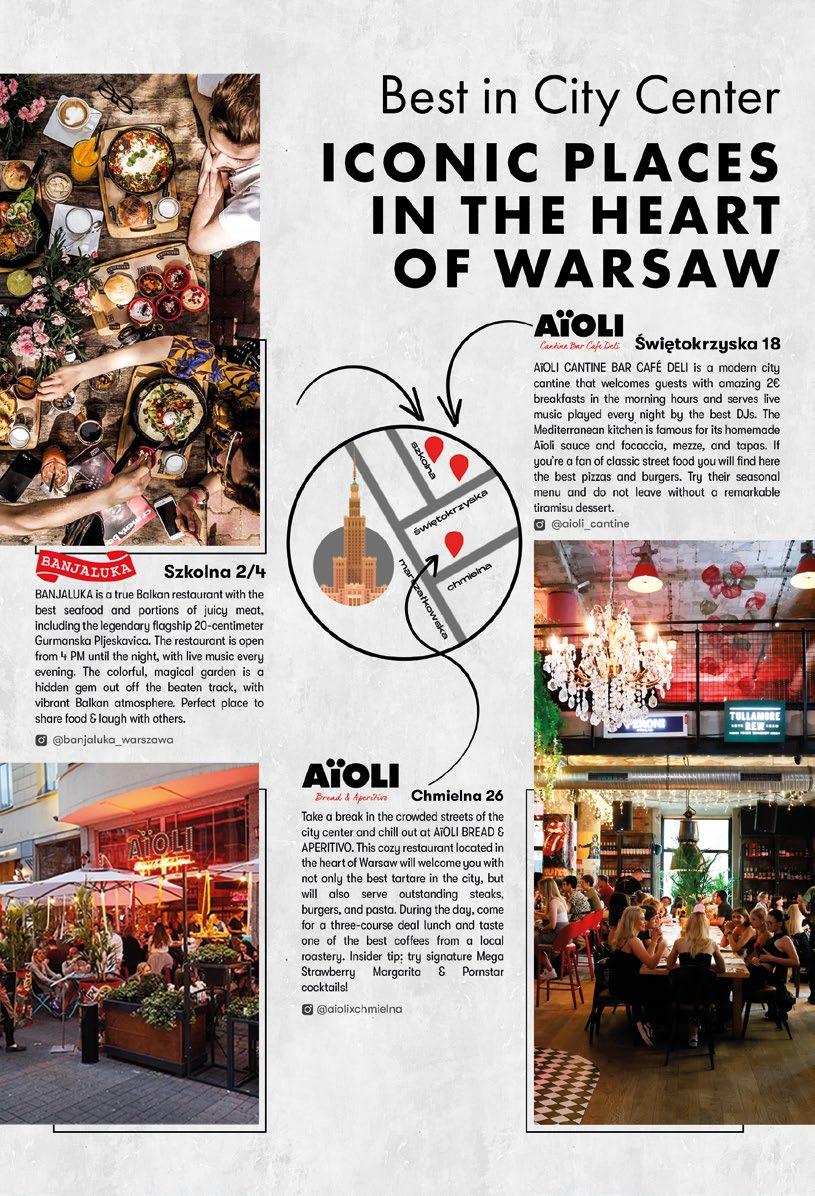

All Saint’s Day (Wszystkich Świętych) sees Poles from around the country gather to clean graves and pay respects to their ancestors on Nov. 1.
it’s fruit stewed in hot water with spices (usually cloves, cardamom and cinnamon). You’ll probably get it and find a slice of orange stuck with cloves floating at the top. Watch out because some places will add alcohol, so if you’re not feeling that, let them know.
October and November have some of the best holidays all year (seriously -- the dark sets in and the country takes on a kind of eerie magical feel). First, a Western import: Halloween. While not celebrated with even a fraction of the gusto and relish of AngloSaxon countries, in large cities this has become a welcome chance to put up a few creepy decorations, switch on a horror flick or party it up at a themed club night. Don’t miss the popular horror movie fest in Kinoteka (the center-of-the-city movie theater) called "Splat!" that runs every year the week before Halloween. More on p.73.
Ironically enough, the next two days after Halloween - November 1st and 2nd - are dedicated to paganroot holidays which almost everyone in Poland can get behind: All Saints’ Day and All Souls Day. These officially Roman Catholic holidays have taken over from the Slavic Dziady (Forefathers or Forefathers’ Eve), an occasion on which the living would prepare an elaborate feast for departed ancestors. Places were set at the table for the ancestors and fires were often lit on the road showing them the way to the house. In this day and age, virtually everyone in Poland heads to the cemeteries to light candles and lay chrysanthemums on graves of relatives
or important members of the community. As night descends, the country’s graveyards and memorial spots are aglow with the warm light of literally thousands of flickering candles, creating an eerie, incredibly evocative atmosphere that should not be missed by anyone with a heart that still beats. If you’re in Warsaw around this time, a stroll around one of the city’s cemeteries - for example Powązki, where many famous Poles have been laid to rest - is an absolute must.
Just over a week later, on November 11th, the somber atmosphere can be continued at Poland’s most important non-religious holiday: Independence Day. No, no hot dogs or fireworks here; this country prefers to celebrate their return to the European stage after 123 of partitions with stony-faced military parades, lofty speeches, and marches, which - sadly - have been largely hijacked by flare-toting nationalists in recent years, particularly in Warsaw. Luckily, there are also more uplifting events to take part in, such as the annual Independence Run and Independence Day concerts.
The month is wrapped up with Andrzejki (Saint Andrew’s Eve), an evening of fortune-telling on Nov. 29. The traditions of this holiday date back to at least 1557, when it was first mentioned in writing. Originally, the fortune-telling was done exclusively by women, and exclusively in order to glimpse their future matrimonial situation - it was also a very serious deal. In the centuries since, it has evolved into lighthearted and ungendered fun, and is now typically done for a laugh with friends or used as another excuse to party, especially among college students.
And you can do the most common Andrzejki tradition at home! It's going to involve a candle, a key (the older and spookier-looking, the better), and a bowl of cold water.
Wait for the wax from the candle to melt and then, whoever wants their fortune told pours the wax through the eye of the key (the hole at the top -- again, old keys are better) into the water. A shape will form.
Take the wax out and turn the lights off: then you can hold the candle up to the wax and see what shape the shadow takes against the wall. Interpret how you will -- the shape will tell your future!




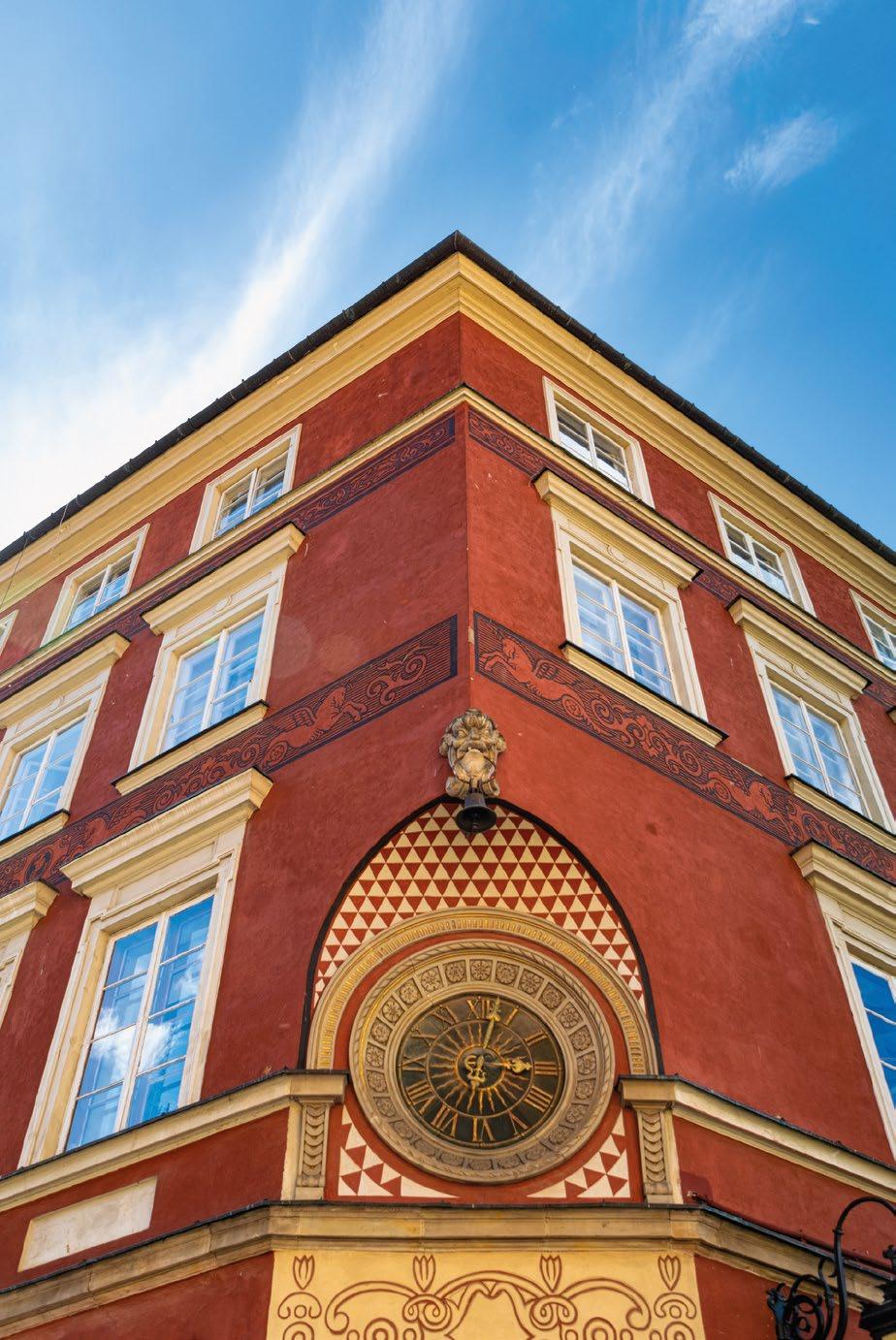




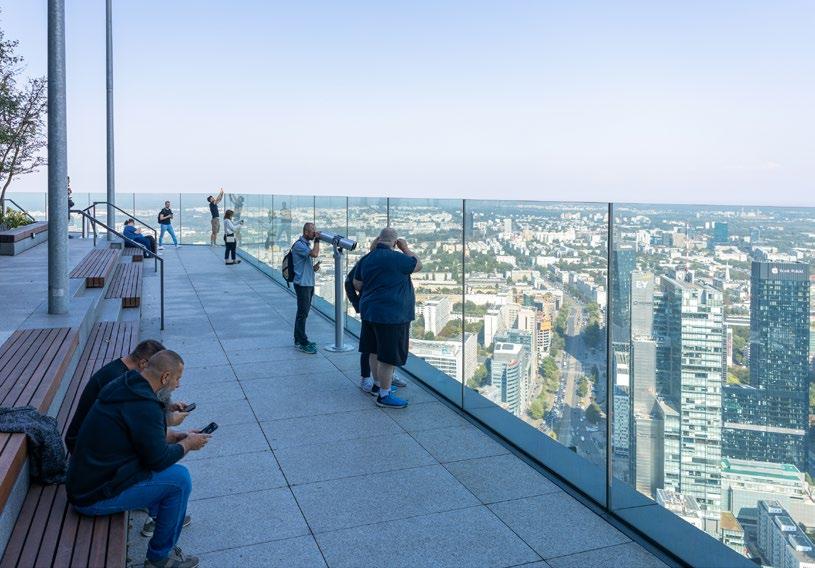
Warsaw’s Old Town, riverside boulevards, and diversity of neighbourhoods give a grounded perspective of the Polish capital. In 2025, however, locals and visitors are now able to experience city from an entirely new perspective—literally above the clouds.
Highline Warsaw, perched atop the iconic Varso Tower (the tallest skyscraper in the European Union at 310 meters) offers the highest observation deck in a building anywhere in the EU at 230 meters. The entity behind the project is Magnacity, whose portfolio includes great urban viewpoints such as Paris Montparnasse Observation Deck, Berliner Fernsehturm, Euromast Rotterdam, and 360 Chicago. Highline Warsaw is their 6th major project - a green oasis among the skies, blending history, technology, and hospitality into an unforgettable experience. The term ‘vantage point’ does not do this space justice.
But first the ascent - Your adventure begins at the base of Varso Tower. Guests step into panoramic elevators, among the fastest in Warsaw, travelling at an impressive 8 metres per second. In just moments, they ascend to the 46th floor, where the immersive journey truly begins.
After exiting the elevators, you pass through a cloud-lit corridor before you enter another hallway where frescoes line the walls, illustrating key moments from the city’s history—its founding in 1339, the grandeur of Warsaw before the devastation of World War II, and the rebirth of today’s modern metropolis.You then enter the Experience Room and view the Reveal Warsaw exhibition, which consists of three films: The Beginnings of Warsaw, Warsaw Before World War II, and Contemporary Warsaw.
Only then do guests ascend further, toward the 53rd floor. The gradual build-up—from history to immersive storytelling to the breathtaking observation deck— creates a layered, emotional journey that ensures the panorama is not just seen, but deeply felt. Then, onwards and upwards to the heart of Highline Warsaw
- the observation deck, where a full 360-degree panorama unfolds. Though the Eiffel Tower in Paris is technically higher, Highline Warsaw claims its crown as the tallest observation deck in a skyscraper in the EU, and it’s a sight to behold. On clear days, you can trace the line of the Vistula River, gaze toward the Kabacki Forest in the south, and even see the horizon beyond Warsaw’s boundaries.
Descending to the 49th floor, visitors find what may be the true soul of the project: the HighGarden Rooftop Lounge. This is not just the highest cocktail bar in the European Union, but also a green retreat floating above the city. Here, trees, shrubs, and flowers transform the terrace into a living garden. Designers have crafted the aesthetic, blending nature with modern elegance.
Guests can sip signature cocktails inspired by local flavors, enjoy small bites, snacks, or desserts, and enjoy the scenery. The atmosphere changes with the hours—bright and serene by day, magical and vibrant by night. It’s a cultural landmark, where nature and nightlife coexist in the clouds.
What makes Highline Warsaw unique is its commitment to storytelling. Rather than being satisfied with a view alone, the space invites visitors to learn about Warsaw through exhibitions, films, and immersive installations. This emphasis on education reflects Magnicity’s broader philosophy. The company, with sites in Paris, Berlin, Chicago, and Rotterdam, believes in responsible urban tourism— showcasing cities not just as skylines but as living, breathing organisms shaped by history, culture, and

people. At Highline Warsaw, guests don’t merely look at the city; they become part of its narrative. They connect past, present, and future, leaving not just with photos but with a deeper understanding of Warsaw’s identity.
Before leaving, visitors pass through the concept store on the 46th floor. Far from being a typical souvenir shop, this boutique emphasizes local products and craftsmanship. From regional delicacies to a dedicated clothing line and creative gadgets, every item carries a piece of Warsaw’s spirit. The AI photo booth allows guests to immortalize their experience in unique digital or printed keepsakes— ensuring memories last long after the visit. It’s a thoughtful conclusion to the journey: taking a tangible part of Warsaw home.
In recent years, Warsaw has become a city of contrasts. Its resilient history coexists with rapid modernization, and its architectural landscape fuses Gothic churches with glass towers. Highline Warsaw crystallizes this spirit.
It’s more than a tourist attraction. It’s a statement of Warsaw’s confidence—a city that has risen from ruins to claim its place on the global stage. By offering both breathtaking views and meaningful cultural experiences, Highline Warsaw positions Warsaw as a destination that is as emotionally resonant as it is visually stunning. Highline Warsaw is, in this sense, not only about Warsaw’s skyline. It’s about Warsaw’s soul. Highline Warsaw redefines what it means to see a city. It elevates tourism—literally and figuratively— by blending height with history, spectacle with substance, and leisure with learning. Whether you come for the unparalleled views, the immersive storytelling, the cocktails in the sky, or simply the thrill of being in the highest bar and observation deck in the European Union, Highline Warsaw delivers an experience unlike any other. So the next time you’re in Warsaw, don’t just walk its streets. Rise above them. From 230 meters in the air, among gardens and clouds, you’ll discover a new perspective on the city— and perhaps even on yourself. Because at Highline Warsaw, the sky is not the limit. It’s the beginning.
QE‑8, Varso Tower, Chmielna 69, MRondo ONZ, www.highlinewarsaw.com. Open 10:00 22:00.
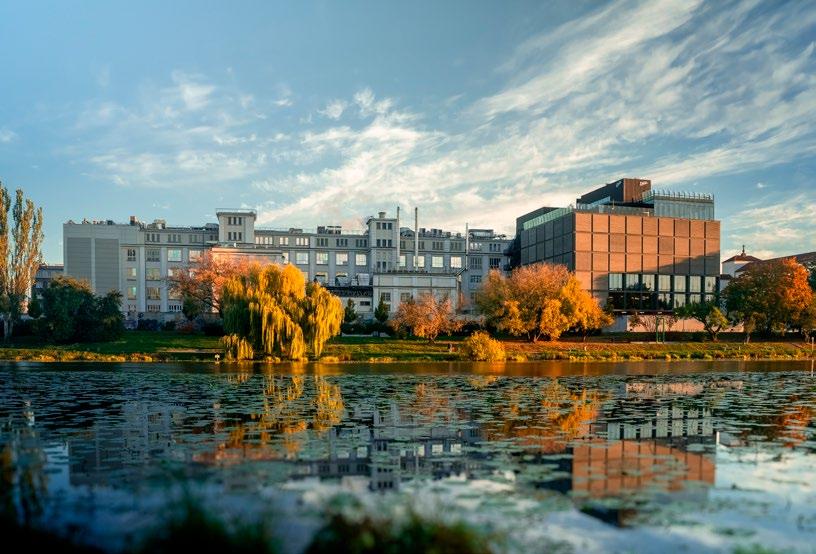
One year has passed since the reimagining of the E. Wedel Chocolate Factory Museum and more than 350,000 visitors have crossed its threshold, making it one of the most popular tourist attractions in the country!
While the Warsaw district of Kamionek is deeply associated with its industrial landscape, there is one ‘sweet spot’ that challenges the gritty image of heavy manufacturing. For decades, the iconic E.Wedel factory has been huffing the unmistakable aroma of chocolate from its rich foundry. Now the space is alive with the laughter of families, friendly chatter, and even the playful sound of a chocolate bar you can literally jump on.
Since its opening last September 4th—International Chocolate Day—the E. Wedel Chocolate Factory Museum has welcomed hundreds of thousands of guests—locals and tourists alike—who arrive eager to experience chocolate not only as a treat but as an entire universe of history, creativity, and joy.
The museum has quickly become a landmark, a multisensory place where the legacy of Poland’s oldest chocolate brand merges seamlessly with modern storytelling and where everything can be touched, tasted and thought-up.
In just a year, the museum has risen to prominence not only in Warsaw but across Poland. The numbers are striking. More than 350,000 visitors in twelve months and around 80,000 workshop participants who rolled up their sleeves, donned aprons, and tried their hand at becoming chocolatiers.
Together they created 20,000 hand-decorated Wedel wafer cakes (called “Torcik Wedlowski”), 73,000 pralines, and 2,200 personalized chocolate bars. Equally important is the social dimension. Through the “Daj Im Szansę” (“Give Them a Chance”) campaign, guests were encouraged to purchase imperfect-looking products that still tasted divine. This initiative not only challenged traditional notions of perfection but also saved 13 tons of chocolate from going to waste.
One of the most remarkable aspects of the E. Wedel Chocolate Factory Museum is how it blends chocolate with disciplines far beyond the culinary world like art, fashion, sport, and community life. Guests can greet the morning with a yoga session on the museum terrace, with Warsaw’s skyline stretching out before you and the scent of cocoa in the air. Or they can step into a temporary exhibition like Paweł Bownik’s Motywy, where photography became part of the museum’s permanent storytelling. But if there is one highlight every guest remembers, it’s the liquid chocolate tastings. Over 10,000 liters have already been consumed. Guests describe the thick, velvety chocolate not as a drink but as an experience—a direct connection to Wedel’s craftsmanship that transcends mere taste.
The museum is not designed as a static collection but as a narrative journey from “bean to bar.” Visitors begin in the Ghanaian Room, where the aroma of freshly roasted cocoa beans sets the stage. The story then leads visitors through the work of chocolatiers and confectioners, offering a behind-the-scenes look at the production process. In the Designer’s Room, creativity takes center stage as everyone is invited to design their own packaging for Ptasie Mleczko®, Wedel’s iconic marshmallow treat. Every visit is unique. Some guests dive deep into the educational aspects, eager to understand every step from cocoa bean harvesting to chocolate molding. Others linger in the creative spaces, while many simply want to relax on the terrace and soak in panoramic views of Warsaw with a cup of hot chocolate in hand.

Chocolate has always been more than food. It is memory, tradition, and emotion wrapped in a sweet shell. For Poles, Wedel is especially significant. Founded in 1851, it is one of the oldest and most cherished chocolate brands in the country. Generations have grown up with Wedel products, from classic bars to the beloved Ptasie Mleczko®.*
The museum takes this shared cultural heritage and reinterprets it for the present. By offering immersive experiences, it reminds visitors that chocolate is not only about taste but also about connection—between people, between past and present, and between cultures. The Ghanaian origins of cocoa beans, the Polish craftsmanship of Wedel chocolatiers, and the global community of chocolate lovers all converge here.
The story of the past twelve months is not just about statistics—though 350,000 visitors and 10,000 liters of liquid chocolate are impressive enough. It is about the laughter of children who design their first Ptasie Mleczko® box, the pride of someone who decorates their own praline, the warmth of families gathered around a shared cup of hot chocolate, and the collective memory being built in Kamionek. In this multisensory space, where everything is touchable and sharable, visitors are invited to experience chocolate in every way imaginable.
Looking ahead, the museum is poised to deepen its role as both a cultural hub and a space for playful discovery. More workshops, more collaborations with artists, and more opportunities for visitors to leave with both sweet souvenirs and unforgettable memories are already on the horizon. The flower meadow will bloom again, new temporary exhibitions will surprise guests, and the creative energy within the factory walls will only grow stronger.
For anyone who has already visited, there will be fresh reasons to return. For those who haven’t yet crossed the threshold, the invitation remains open: step inside, breathe in the aroma of chocolate, and experience how this universal taste continues to bring people together. The first year was only the beginning. The next chapter promises to be even sweeter!
QL-4 aleja Emila Wedla 5, MStadion Narodowy, www.fabrykaczekolady.pl. Open 10:00 20:00.

Warsaw has always been a crossroads of flavours and ideas. For centuries, the city absorbed influences from Jewish pubs, Russian kitchens, French cafés, and Italian trattorias. Even before the Second World War, the capital was developing a culinary mosaic that today we would simply call ‘fusion’.
At the heart of this legacy stands Hala Koszyki, Poland’s first modern food hall and one of the city’s most recognisable landmarks. Built between 1906 and 1909 on Koszykowa Street, the hall was designed by architect Juliusz Dzierżanowski in the secessionist (Art Nouveau) style. Its flowing, organic details, large arched windows, and decorative facade by sculptor Józef Zygmunt Ott gave it both functionality and artistry.
In its early years, Koszyki was the beating heart of the neighbourhood: a market hall where residents of southern Śródmieście came not just to shop for produce but also to connect, exchange gossip, and feel part of the urban fabric. Fast forward more than a century, and the hall has undergone a spectacular rebirth. After a five-year restoration led by Griffin Real Estate and JEMS Architects, the “new” Koszyki opened
in 2016. What visitors see today is a perfect blend of past and present: original bricks carefully reused, historic lattice metalwork painstakingly restored, and modern design features added to create a vibrant, contemporary hub.
Today, Koszyki is far more than a market. It is a 16,000 sqm mixed-use complex with restaurants, bars, retail, and office space, but more importantly, it is a symbol of the new Warsaw—open, bold, and sensory.
Walking up to Hala Koszyki, the first impression is one of timelessness. The stone building with its artistic glass curves feels antique, even nostalgic. Yet step inside and you are greeted by a hyper-contemporary interior—industrial chic steel beams, catwalks, open seating areas, and stalls buzzing with energy.
This duality defines Koszyki. It is a living museum of Warsaw’s architecture and urban life, where tradition meets innovation. More than three million people visit each year, making it one of the most popular cultural and culinary destinations in Poland.
Each stall or restaurant at Hala Koszyki tells a story, often linking Warsaw’s traditions with global flavours. Must-try dishes include: Warsaw-style tripe at Ćma, open 24 hours a day, beloved by night owls and reminiscent of Warsaw’s old “milk bars.” Black pudding on a corn taco at Gringo, where Polish kaszanka finds a surprising Latin American twist. Tom Żur at TukTuk, a Thai interpretation of Polish żurek soup, merging two culinary cultures in one bowl. BAJS, a new restaurant dedicated to Polish cuisine, which will open on October 21st and promises seasonal reinterpretations of classic Warsaw dishes. These offerings show how Hala Koszyki respects Warsaw’s culinary roots while boldly reimagining them. The menu mirrors the city itself: layered, diverse, and unafraid of mixing influences. To eat here is to taste Warsaw’s history, transformed for today’s cosmopolitan palate.
Hala Koszyki is not just about food—it is about culture with flavour. Warsaw sounds just as it tastes, and Hala Koszyki proves it by weaving music into its identity. During the 19th International Fryderyk Chopin Piano Competition, Koszyki transformed

into a dedicated “music fan space.” Instead of sports bar screens, the hall broadcast auditions and recitals. Visitors enjoyed jazz and classical concerts, photography exhibitions, and even DJ sets inspired by Chopin. The result was a shared experience— something between a marathon of music and a festival of community.
By turning cuisine into a backdrop for art and sound, Hala Koszyki reinforced its role as a cultural hub. Here, food, music, and conversation are inseparable, reflecting Warsaw’s belief that culture should be experienced with all the senses.
What makes Hala Koszyki truly essential for visitors is not any single dish, event, or architectural feature. It is the atmosphere—a vibrant energy that makes people want to linger. With its open interior, background music curated to complement the space, and an ever-changing lineup of cultural programming, Hala Koszyki invites visitors to feel part of something bigger. It’s a place where young professionals meet for after-work drinks, families come for Sunday lunches, and travellers discover Warsaw beyond guidebook clichés. Whether you are sipping coffee under restored steelwork or tasting fusion dishes at midnight, you are not just observing Warsaw—you are experiencing it with every sense. Hala Koszyki stands as a symbol of Warsaw’s reinvention: rooted in tradition, yet bold enough to embrace change; deeply local, yet cosmopolitan in spirit. It is Warsaw condensed into one hall—aromatic, flavourful, melodic, and alive.
For anyone visiting the Polish capital, Hala Koszyki is a must. It offers more than a meal or a concert; it offers an immersion into what Warsaw is today: a city that listens, tastes, and creates with confidence. From its historic Art Nouveau facade to its reinvented menus, from Chopin recitals to DJ sets, Koszyki embodies the idea that Warsaw is best understood not through monuments alone, but through experiences that engage the senses. In the end, Hala Koszyki is not just a showcase of Warsaw—it is Warsaw, concentrated and amplified. And like the city itself, it leaves you with the feeling that the story is still unfolding, one bite, one note, and one conversation at a time.
QF‑10, ul. Koszykowa 63, MPolitechnika, www.koszyki.com. Open 08:00 01:00.
Polish food is famous for being simple, rich and very filling. Below we list the most well-known dishes you simply must try while in town, all of which you should be able to order from any Polish restaurant worth its salt. Smacznego!

Barszcz
A nourishing beetroot soup, barszcz may be served with a croquette (‘barszcz z krokietem’), with miniature pierogi floating in it (‘barszcz z uszkami’), or simply as broth in a mug expressly for drinking. A recommended alternative to other beverages, we’d be surprised if you can find a bad cup of barszcz anywhere in Poland, so make sure you return home with barzszcz stains on at least one of your shirts.
Though there’s no standard recipe for this hearty stew, ingredients usually include fresh and pickled cabbage, sausage, onion, mushrooms, garlic, peppercorns, bay leaves, caraway and whatever else is on hand. In fact, metaphorically bigos translates to ‘big mess,’ ‘mish-mash’ or ‘confusion’ in Polish. A Polish restaurant or prospective bride can be fairly measured on the strength of their bigos, so put it to the test.

Golonka

Translating to ‘little pigeons,’ this favourite dish is like a ‘cabbage enchilada'. Consisting of boiled cabbage leaves filled with rice, onion and typically beef, gołąbki are rolled up and baked or steamed, then served with tomato or mushroom sauce. Polish legend claims that King Kazimierz IV fed his army gołąbki before the Battle of Grunwald, and their unlikely victory attributed to the fortifying meal ever since.
This is ‘pork knuckle’ or ‘ham hock,’ as in the part of a pig’s leg between the knee and ankle. Boiled, braised or roasted, this is the closest the Poles come to barbecue, and is a delicacy. The meat should slip right off the bone, be served with horseradish, and washed down with beer. Generally sold by weight, you might end up with more than you bargained for, but it’s certainly an Instagram opportunity. Go caveman.



Typically served with mashed potatoes and pickled cabbage, this is probably the most popular meal in Poland. Essentially a breaded and fried pork chop, ‘kotlet schabowy’ is quite similar to Viennese schnitzel, and a solid bet for a cheap, filling, risk-free meal. If you’re awoken on a weekend by the sound of profuse banging - that’s the sound of the meat being tenderised with a spiky mallet, so best mind your manners.
Poland’s most famous food, you can't leave PL until you’ve had them. These doughy, stuffed dumplings are typically steamed or pan-fried. Traditional fillings include potato, sweet cheese, minced meat, mushrooms and cabbage or seasonal fruits. If you nose around, you’ll find plenty of maverick fillings like chocolate, lentils or even chicken livers; the possibilities are limitless and served literally everywhere.


These greasy, fried potato pancakes are very similar to hashbrowns or Jewish latkes (if that means anything to you), and may be served in a variety of ways. Keep it simple with just sour cream (‘placki solo’), or turn it into a hefty meal by ordering them smothered in mushroom sauce or - our favourite - goulash (‘placki po węgiersku’). Highly caloric, they’re also a tried and true hangover cure.
It doesn’t get any more Polish than żurek – a sour soup made from a thick stock of fermented rye flour. Typically chock full of potatoes, sausage and hard-boiled eggs, żurek is most often thickened with cream, and seasoned with marjoram, garlic, salt and pepper. The result is a tasty grayish gruel that any Polish peasant would be proud to polish off. If you’re lucky, you’ll even get it served in a bread bowl.


The Italians have wine, the Spaniards have wine. The French…. also wine. But what does Poland do best when it comes to alcohol? Vodka and beer.
These are the two most popular alcoholic beverages in Poland, and that means that brewers and distillers alike have spent a lot of time honing their crafts. Here’s a rundown of the history of these two popular drinks.
The name “vodka” (an anglicised version of the Polish “wódka” pronounced “v-ood-kah”) means quite literally “little water.” The origins of the drink date back to the 8th century, when distillation was discovered and the practice began to sweep across Europe. When it comes to vodka itself, the first written record of the drink came out in 1405 in Poland.
Originally, it was used as medicine: it helped treat wounds, numb pain, make perfume. But the consumption of vodka became more popular in the 15th and 16th centuries as it became industrialized across the country, with distilleries opening in Kraków, Gdańsk and Poznań (in fact, the popular Żubrówka vodka dates back to this century).
The popularization of vodka continued at a quick clip in Poland, hitting some bumps along the way
(production slowed during the wars at the beginning of the 20th century). Now, Poland is one of the top three producers of vodka in the world, and produced nearly 100 million liters in 2016 alone.
Poles are proud of their vodka and as a result, there are many traditions surrounding the drink. You may not run into all of them when you visit, but here’s a run-down just in case:
Na zdrowie – say this as you clink glasses and make sure to look your drinking partner in the eye or you’ll have years (some say 7, some say 5) of bad luck.
Christmas vodka – drinking a shot of vodka (sipping, not tossing it back) with some good pickled fish (Śledź) is a classic Christmas tradition. In fact, pickled fish and vodka commonly go together at any time of year.
Wedding shots – After the ceremony, the bride and groom will each get a shot of vodka and they’re supposed to down the shot, toss the glasses behind their backs, and break them. The broken glasses signify good luck in the marriage.
There are many good Polish vodkas but also some classics.
Żubrówka – this is a Polish vodka from the 16th century that is just a classic staple. One popular kind has a sprig of bison grass inside, which makes the drink a little bright and earthy.
Goldwasser – bet you didn’t know this was Polish! This is a classic from the Gdańsk area, and you’ll know it because it has gold flakes floating inside and a slightly cinnamon-y taste.
Chopin – This is just a good vodka. It’s not too sharp, well balanced and it goes great with everything.
Luksusowa – Finally, the people’s vodka. This is good and affordable. This is what people buy to drink with friends on an unassuming Friday night.
Where to get it:
The better question is where not to get vodka in Warsaw? The Polish Vodka Museum (p.65) and the Vodka Museum (p.77) will each take you on a tour through the history of vodka and give you a chance to try some! Klar (G-5) is known for their unique vodka flavors, which are constantly changing as they find new ways to infuse vodka with berries, herbs and spices! Pijalnia wodki i piwa is a chain with plenty of vodka types to sample and enjoy.
Poland also has a long history with beer that dates back to the middle ages. But it wasn’t until the 18th and 19th centuries that beer became mass produced on an industrial scale. The Tychy Brewery, which produces the extremely popular beer Tyskie, has been around since the 17th century.
The initial styles beloved by Poles were porters (dark beers) and then pale ales (much lighter beers) swiftly began to take over. Like vodka, beer production hit some bumps in the early 20th century but picked up again in the late century.
And that brings us to today – almost. While many of those lager-style beers have reigned in popularity for decades, the past 10 years have seen smaller breweries start getting in on the beer game. Many home brewing operations started making craft beer, and by making smaller batches than
industrial brewers, they were able to focus more on experimenting with non-traditional ingredients and techniques, leading to more interesting flavors.
Pinta – around since 2010, this brewery is one of the most popular craft breweries in all of Poland, and regularly makes hazy IPAs, sour beers, pale ales, pilsners – the works!
Funky Fluid – a Warsaw-based brewery, this is another type of craft beer that’s been gaining more and more popularity over the years for its bold flavors of hoppy, wild and sour beers (and more!)
Trzech Kumpli – brewing since the start of the craft beer craze in about 2014, this brewery makes a lot of dark beers (smoked porters, Irish stouts) as well as light lagers and pilsners.
Piwne Podziemie – one of the smaller craft breweries, but that means they can really focus on their flavorand they deliver! For the beer snobs who have tried every type, this is the beer to grab.
Well of course you can buy the large-scale, industrial beers (Tyskie, Lech, Żywiec) pretty much anywhere. But for craft beers, you have to know where to go. Pinta has a bar specializing in their beers on Chimelnia Street. Other bars like Jabeerwocky (G-8), Kufle i Kapsle, will also offer great craft beers, Bierhalle, and Browary Warszawskie (p.32) are very popular, too. Plus, don’t miss the beer festivals held in the spring and fall in Warsaw!


Travelling around Warsaw by bus, metro and tram is fast, efficient and affordable; driving a car through the centre, on the other hand, can be confusing and frustrating. As such, for visitors the city centre is best navigated by bike, scooter, public transport or taxi/ride share - all of which are explained here. For detailed info about Warsaw’s airports and train stations, visit our website.
Warsaw has an extensive bus and tram system, as well as a good metro system with the M1 line running north-south and M2 running east-west. Over 1,900 buses operate in and around the city, and run 05:00-23:00. After that night buses run on most routes twice every hour. All night buses display the letter N. ‘Fast buses’ (marked with red digits) skip the smaller stops.
Standardised tickets are valid for use on the metro, buses and trams, and can be bought from machines with instructions in English at all metro stations, and some bus and tram stops. Tickets can also be purchased from machines on the actual buses and trams, where you can pay by card, or using exact change only.
A standard single fare costs 4.40zł for 75min, or 3.40zł for a 20min ticket. If you’re travelling to the further reaches of Warsaw you’ll need a 7zł ticket
that covers both zones 1 and 2 (note that the airport is still in Zone 1). Tickets valid for 24 hours, 3 days and a special ‘weekend’ ticket might also be worth considering. Those over 70 ride for free, as do children up until the end of September of the year they turn 7, but you must have photo ID (those who ride free still need a ticket/’wejściówka’ to get through the gates of the metro - find wall dispensers next to the gates and hang on to the ticket for multiple rides). Everyone else pays full fare, unless you have an ISIC card which entitles you to a reduced fare (‘ulgowy’ ticket).
Once you’re through the electronic gates of the metro, you’re ready to ride. For buses and trams, however, there’s one extra step - validating your ticket immediately once you’re on board in the small ‘kasownik’ boxes on trams and buses. Plain clothes ticket inspectors stalk the lines, dishing out hefty fines for those without valid tickets. They often don’t look very official and you are within your rights to request identification.Qwww.ztm.waw.pl
WawaBus offers a private transportation service to bring you to and from the airport, your hotel, your dinner reservation an! Not only that, but the sleek, modern cars and well-experienced drivers ensure that your trips will be as hassle-free, comfortable and enjoyable as possible! In addition to being prompt and experienced, the drivers each know at least one foreign language.QG‑8, ul. Dziatwy 14C/12, tel. (+48) 515 00 10 01, www.wawabus.pl/en. Open 24/7.
Download the Traficar app, find an empty vehicle, scan the QR code, and you’re in. You can leave the car in any legal parking space within their service zone, and you don’t have to pay for gas! You can rent a vehicle for as long as you want at only 4.99zł to start and then 2.09 zł per kilometer, or for 24 hours for only 69zł a day and then 1.19zł per kilometer.Qwww.traficar.pl. Prices are calculated as 4.99zł to start a journey, plus 1.69zł/km.
If Warsaw needed proof that it is a major tourist destination surely City Sightseeing is it. 1.5 hour-long tours on familiar red double-decker buses let you take in the major sights. Buy one ticket and hop on/ off the bus of your choice, either blue or red line. Buses depart from ul. E.Plater, across from the Central Station and ul. Podwale near King Zygmunt’s Column. Travel around the Old Town, the National Museum, the Uprising Museum and plenty of other iconic Warsaw spots. Commentary available in various languages. See their site for details, routes and timetables. Buses run 7 days a week.QE‑8, ul. Emilii Plater, MCentrum, tel. (+48) 793 95 79 79, www.city sightseeing.pl. Open 10:00 18:00. Tickets 24hrs 150/120zł, 48hrs 180/150zł, 72hrs 200/170zł.


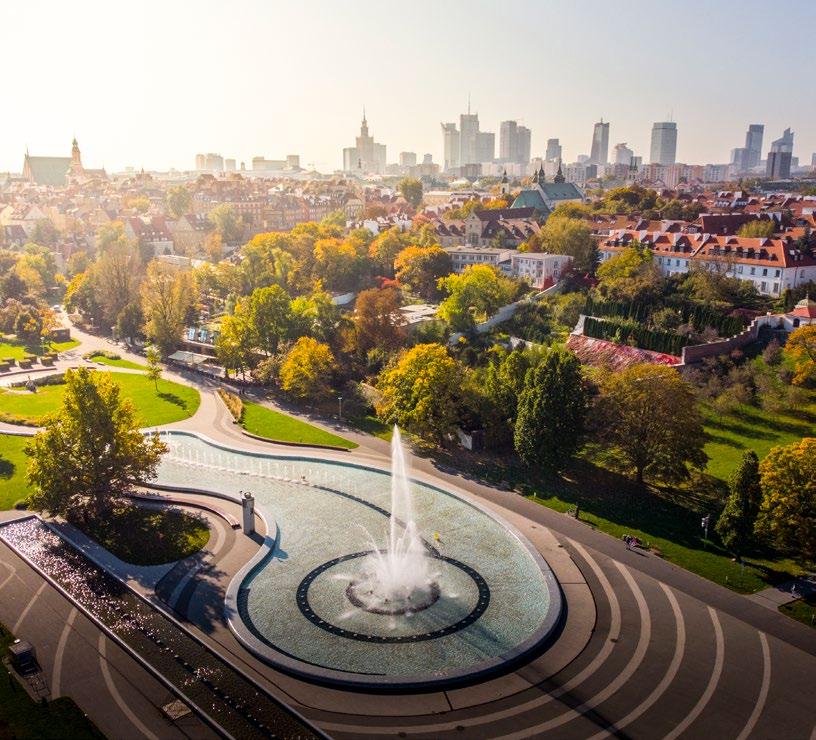
When it comes to Sightseeing, visitors should be sure to experience the dynamic synergy of Warsaw as a modern metropolis that still nurtures its cultural spirit and traditions. To this end, our guide details the capital’s most important districts, walking you through not only the antiquated Old Town (p.40), regal Royal Route (p.48) and the imperial beauty of Łazienki (p.58) and Wilanów (p.63), but also around the soaring, frenetic City Centre (p.31), happening Powiśle (p.55) and scruffy Praga (p.64). If your time is limited, however, here’s a cheat sheet of the city’s most unmissable sights.
More of a triangle than a square, and home to the Royal Castle, this popular plac is where modern Warsaw meets the Old Town.QSee p.41
A window into the ‘once-upon-a-time’ of Warsaw’s golden days, the Old Town is also symbolic of Warsaw’s rise from the ruins of WWII.QSee p.44.
Warsaw’s left-bank boulevards are a favourite haunt of the locals - go and see why - walk, ride, or just chill on the riverside steps. Wow.QSee p.55.
Full of incredible art and architecture this massive park and palace complex offers spectacular opportunities for sightseeing or simply relaxing.QSee p.58
Originally commissioned by Stalin as a ‘gift from the Soviet people’, this 237-metre-high structure was Warsaw’s tallest building until 2021, and takes its inspiration from the capitalist worldnamely the Empire State Building. Working around the clock, it took over 5,000 workers - ferried in from the Soviet states and housed in a purpose-built village - just three years to finish the Palace in 1955 With 3,288 rooms inside, the Palace’s purpose was to serve as not just Communist Party headquarters but also as ‘The People’s Castle.’ Now an iconic part of Warsaw’s landscape, the Palace is celebrated by some, while for others it merely represents Russian hegemony.
At present the building hosts several theatres, a cinema, numerous bars, restaurants and cafes, and a tourist info office, as well as the National Museum of Technology and the Museum of Evolution Tours of the interiors are offered hourly in Polish between 10:00 and 15:00, and in English at 16:00. Book tickets online in advance, or skip the tour and head straight to the outdoor viewing terrace on the 30th floor (via elevator) for thrilling panoramic views; tickets available online.
QE‑8, Pl. Defilad 1, MCentrum, tel. (+48) 22 656 76 00, www.pkin.pl. Open 09:00 18:00. Viewing terrace open 10:00 20:00; terrace admission 28/23zł. U
The ‘Polish Versailles’ is just one of the many fitting monikers applied to this splendid late 17thcentury royal palace 10km to the south.QSee p.62
A stunning view of the entire city is seen here, at the top of the tallest building in the EUQSee p.17.
With tons of art from the 20th century and beyond, plus great exhibits on ancient Greece and rome, this is a must!QSee p. 77
Telling the history of the 1944 Warsaw uprising against the Nazis in increadible detail, with stories from actual people, tons of interactive elements, and history upon history. This will leave an impact. QSee p. 81
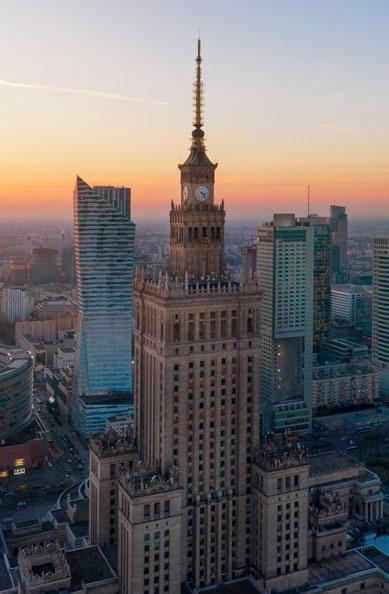
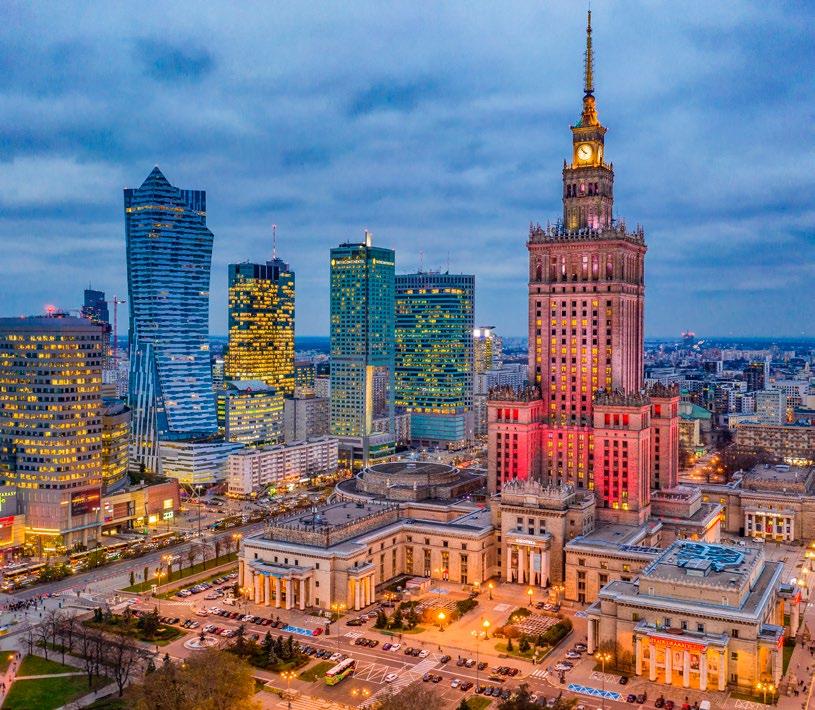
Known locally as ‘Śródmieście,’ Warsaw’s City Centre isn’t exactly a district (it comprises several, actually), but more of a catch-all term for the downtown area. Definitions vary, but generally, you know it when you’re in it - wide streets, monumental buildings, billboards, busy crosswalks and little to stand in the way of progress. It’s the modern, fast-paced, forwardlooking part of the city radiating out from the Palace of Culture & Science, and it’s here that you’ll find the majority of the city’s hotels, restaurants and bars, but also government buildings, skyscrapers and places of commerce - the dynamic heart of the contemporary capital.
In terms of tourism, it’s not exactly inviting, so why start here? Well, chances are you’re staying in the City Centre and probably there right now, so let’s get familiar with what’s around before running off to the Old Town (p.40). Despite not being particularly cosy or nostalgic, there are still many points of interest downtown, and nowhere more conveys the modern character of the Polish capital.
Anielewicza
Pawia
Pawia
Gliniana
Pawia
Dzielna
Smocza
Nowolipki
Chłodna Słupecka
Spi
Nowolipie
Ogrodowa
Grzybowska
Srebrna Dzielna
Platynowa
TarczyńskaDaleka
Nowolipki
Dantyszka Złota
Reja

Used over the centuries for military parades and national celebrations, this is Warsaw’s largest square . Named after legendary inter-war Polish leader, Józef Piłsudski ; you’ll find a statue of the Marshal guarding his naming rights with a stern gaze nearby. The space has undergone quite a few rebrandings thanks to the changing political landscape, including a stint as ‘Adolf Hitler Platz’ under Nazi occupation. During the era of Partitions, the huge orthodox St. Nevsky Cathedral was built here. Considered a symbol of Russian oppression, it was razed after Poland regained its independence. It was here that in 1979, Polish Pope John Paul II gave an open-air holy mass to 500,000 people, instilling hope in the struggle against the repressive communist system. In 2018, two new monuments were added - both relating to the tragic and highly politicised Smoleńsk Air Disaster in which a plane carrying 96 members of a Polish government delegation crashed in the Russian forest in 2010; everyone on board perished, including President Lech Kaczyński , whose monument here gazes upon that of the other victims. At the western end of the square you’ll find
the Tomb of the Unknown Soldier under the broken colonnades of Saxon Palace - the grand structure this square stood in front of until its destruction during WWII. Here, the ashes of unidentified soldiers who died for the Polish cause are interred and an eternal flame is guarded by stone-faced soldiers. If you enjoy a bit of military theatre, you can watch the official changing of the guard every hour, on the hour, 365 days a year.QF‑6, MNowy Świat Uniwersytet.
Plac Piłsudskiego’s Tomb of the Unknown Soldier almost serves as an entrance gate into Saski Park, aka Saxon Garden. This historic 15.5ha park is the oldest in the city, and became one of the first public parks in the world when it opened to all in 1727. At that time it was a Baroque garden with the grandiose Saxon Palace playing a role very similar to the Palace of Versailles in Paris’ famous park. Despite its demise during WWI, Saxon Garden still offers several historical points of interest, in addition to lots of benches, plenty of shade and a much-needed escape from the urban din of the capital. The centrepiece of the gardens is a large fountain created in 1855 by renowned Warsaw architect Henryk Marconi. The alleyways running out from it are lined with blooming flowers, ancient trees and neoclassical sculptures. In the northwestern part of the park, you’ll find the Romanesque Water Tower from 1825 - also designed by Marconi, and modelled on the famous Temple of Vesta in Tivoli.QF‑6, Between ul. Marszałkowska and Plac Piłsudskiego, MŚwiętokrzyska.
Once one of Central Europe’s most famous brewing complexes, this 4.5ha area has been revitalised into a trendy urban culture and gastronomy district, densely packed with dozens of restaurants, cafes, bars, bakeries and shops. Mixing bold new architecture with restored historical buildings,
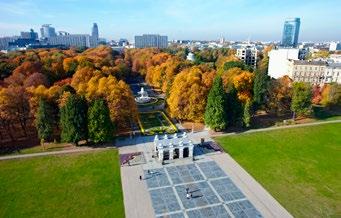
post-industrial design with public green spaces, the heart of this ‘city within the city’ is Food Hall Browary - 13 world cuisines at restaurant stalls in the former cellars. The historic Browar Warszawski (Warsaw Brewery) itself has also been revived and is once again producing craft beers (19 different types!) for local hopheads, while other highlights include a sports bar part-owned by Robert Lewandowski (Nine’s). The food is delicious and so is the atmosphere.QC‑7, ul. Grzybowska 60, MRondo Daszyńskiego, www.browarywarszawskie.com.pl.
One of Warsaw’s newest public spaces, European Square was created by Wirtz International Landscape Architecture as part of the impressive Warsaw Spire - Poland’s 3rd-tallest skyscraper at 220m. Both the square and the office building have won awards for their design. This small square has a lot of features: trees, benches, fountains, reflecting pools, two large murals, an amphitheatre, a unique Art Walk gallery where changing exhibits are displayed, and an iconic 3D Instagram-baiting installation that says ‘Kocham Warszawę’ (I Love Warsaw). Of course there are cafes, bars and food options as well, making this a very unique and worthwhile place to hang out in Warsaw’s business district.QC‑7, MRondo Daszyńskiego.
This former industrial site covering an area of 2ha near Rondo Daszyńskiego was once one of the largest enterprises in the Kingdom of Poland, with a long, complex history that dates back to the 1840s. The Norblin, Buch Brothers and T. Werner Factory (to give its full name) produced a wide range of metal, tin and silver-plated goods - sugar bowls, teapots, cutlery, vases, dishes and more - ranging from the utilitarian to true works of art. Until recently a neglected pearl of post-industrial architecture, massive investment has turned the area into a lively modern urban centre of culture, entertainment, gastronomy and commerce. Now, find over 24,000m of total commercial space open to the public. Visitors will find an impressive museum covering the site’s industrial history, the BioBazar eco (organic) food market and bistro, the KinoGram boutique cinema, an Event Hall with more than 600 square meters of event space, a fitness centre, shops, cafes and more - including a bevy of events. Young families will also find a lot of options here, starting with Smart Kids Planet (p.87), an educational play center for young children to partake in the fun with highly interactive games, activities and more! QC/D‑8, ul. Żelazna 51/53, MRondo Daszyńskiego, www.fabrykanorblina. pl TE6
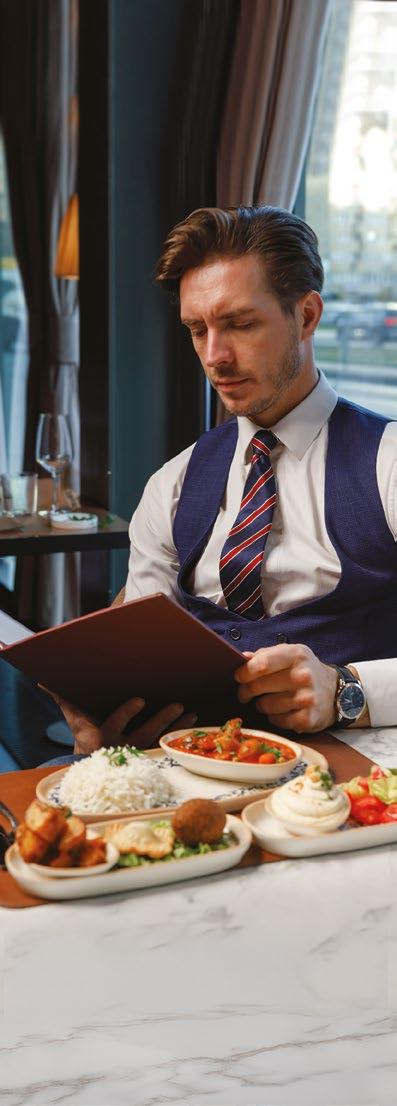
This delightful square connects the city’s past to its present and unites the worlds of commerce, religion, entertainment and art. The main attraction is the 19th century Renaissance All Saints’ Church . From 1941 it was inside the Warsaw Ghetto and Parish Priest Fr. Monsignor Marceli Godlewski helped to house Jews in the rectory and assisted several to escape. Rebuilt after the war, the entire square has been recently renovated and today features dozens of benches, neatly landscaped grassy areas and even a pond with a waterfall . Very well lit, it’s a wonderful place to relax or enjoy the many bars and cafes that surround it, day or night. Joining the square is ul.
Próżna , the only full street that survived the Jewish Ghetto. It is here in the former heart of the Jewish Warsaw (p. 78 ) that the Singer Jewish Culture Festival takes place each year in late August/early September. The Nożyk Synagogue - the city’s only synagogue to survive the war and still in use today - can also be found close by at ul. Twarda 6. Q E‑7, M Świętokrzyska.
Most people arrive to the Polish capital via Warszawa Centralna train station, which, together with the Palace of Culture (p.29), basically comprises Warsaw
City Centre’s ground zero. Plac Defilad is the vast, concrete sprawl around the Palace of Culture, but particularly the east side. As the name ‘Parade Square’ hints, this mostly empty plot was created by communist-era city planners in the 1950s, along with the Palace of Culture. Measuring 24ha, it was until recently the second largest public square in the EU, though no one would have mistaken it for a proper square. For years it’s mostly been parking, but plenty of historical events have taken place here, from PRL propaganda parades, to massive rallies for Pope John Paul II, to Christmas markets, ice rinks and New Year’s Eve concerts. After a long construction period, the new, sleek Museum of Modern Art opened in October 2024, coinciding with the introduction of Plac Centralny (Central Sqaure) - essentially, the central part of Plac Defilad surrounding the museum is being turned into a greener, more pedestrian-friendly space under the new moniker.QF‑8, Plac Defilad, MCentrum.
There is plenty of great shopping to be had in and around Warsaw, and Złote Tarasy, seated next to the central train station, is no exception with great stores like Sephora, Van Graaf and Zara. But many people actually admire the complex for its ultra modern architecture. Even if you’re not in the mood to shop, it’s a good idea to check out the space, which has a 10,000m glass dome fitted
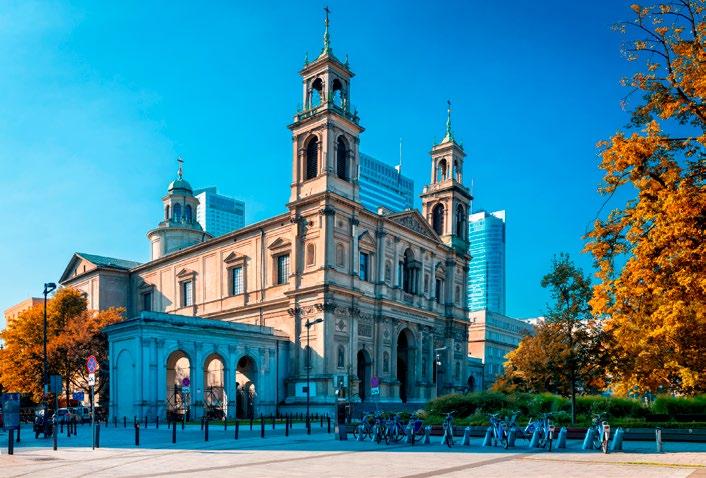
with a special mechanism to both filter sunrays and stop snow from building up. is reminiscent of waves, water, balloons -- basically any form without a straight edge. The 1.5 billion zł project was designed by a California-based firm and construction began in 2002. After it was completed in 2004, the design - sleek, contemporary, eyecatching - won the firm an award by a famous London-based architecture magazine. It’s worth stepping inside to see the multi-level beloved behemouth in person!
ONZ, tel. (+48) 22 222 22 00, Open 09:00
Pasaż Wiecha in the shadow of ‘Eastern Wall
Karpiński
were hailed a work of genius, but soon fell into neglect. Eventually new life was breathed into the complex. Now, find shining glass frontages added to the department stores, and granite floored pedestrian walkways and modern tubular lighting added to the section behind the Jerozolimskie end. Although once entirely dodgy, the long space behind the ‘Eastern Wall’ - is today lined with shops and restaurant gardens on both sides
also increasingly plays host to events like food fairs. Ironically, the centrepiece of the city’s big 1960s redevelopment plan is now a focal point in the ‘Nowe Centrum Warszawy’ plan, which will see this immediate area redeveloped once again in the near future. Start a wander east down the latter from here to see how far the city has progressed so far.
This lovely public square opened in July 2022 at the intersection of Chmielna
Square.’ Although the new design still features lot of concrete, 22 maple trees have been added to the space, as well as numerous benches with almost 40 sitting places. Most significantly, the entire area has been opened up and given over to pedestrians, which is a huge improvement over the urban tangle that previously prevailed here. Plac Pięciu Rog redevelopment works throughout this area which are transforming ul. Chmielna into a for pedestrians plenty of cafes, restaurants, bars and intriguing places for relaxing and refuelling. M Centrum,





11 Plac Konstytucji
A wonderful spectacle of socialist realist architecture, Constitution Square was constructed between 1950-52 to be an ‘expression of creative optimism and peaceful work within the socialist system.’ Its real purpose was to serve as a focal point for the frequent state parades, which would go from here down ul. Marszałkowska to Plac Defilad (Parade Square) in front of The Palace of Culture and Science. Quite an anomaly in the urban fabric of Warsaw, Constitution Square was the crowning glory of the Marszałkowska Housing District - the first housing district to be completed out of the complete devastation of WWII. It was quite an achievement and heralded as a big success at the time. Dominated by three monumental street lamps looking like giant tridents, you’ll still see some socialist mosaics here and there, but things get even better along the tail end of ul. Marszałkowska, leading to Plac Zbawiciela, where socialist reliefs of workers line the street. QG‑10, Pl. Konstytucji, MPolitechnika.
12 Plac Zbawiciela
In the aftermath of WWII, this star-shaped roundabout became dominated by PRL-era buildings from the 1950s, but still harbours a couple of gems. The first is the conspicuous Church of the Holiest Saviour, from which the square takes its name (Saviour Square). Built in neo-Renaissance style in the 1920s, that it stands is a marvel, considering it was dynamited by the Nazis during WWII and then tagged for demolition by the communists. The other pre-war building here is the handsome Jasieńczyk-Jabłoński tenement (Mokotowska 12), erected in 1910. Upon completion, it was not only one of the most modern, but also the tallest residential building in Warsaw (38 m). From 2012–2015, Julita Wójcik's "Rainbow" art installation notably soared over Plac Zbawiciela. A 9m high 26m wide rainbow made of plastic flowers, the piece proved too controversial for PL's anti-LGBT factions, who repeatedly lit it on fire until it was removed. However, there are plans to bring it back!Q G‑10, M Politechnika.
Known locally as Politechnika Warszawska, this is one of the largest universities of technology in Central Europe, with over 36,000 students. The historic main building is a wonder of neo-baroque architecture designed at the turn of the 19th century. Stout, sturdy and with unique rounded corners, the two-story building survived WWII bombing and was quickly retouched after the war. Its facade features an array of architectural embellishments: sculptures, bas-reliefs,
frescoes and sgraffito. If you think the exterior is impressive, head inside to see the pentagonal cloister courtyard with four stories of arcades, staircase and beautiful stained-glass roof.QF‑10, Plac Politechniki 1, MPolitechnika. Open 06:00 22:00.
If you're wondering where all the students are, this might be the answer. This is one of Warsaw's handful of marvelous indoor market halls, with food, shopping, art and more! And this is definitely one to check out because it's photogenic, with a phenomenal ground-floor food hall, with everything form dim sum to gelato, burgers, fries and more! There are plenty of boutique shops and a lot of great events held here. Plus, we can't say enough about the architecture. Built over 100 years ago in the Art Nouveau style, this stunning building originally served as a market hall. It was redeveloped in 2016 to pay homage to its original use (many of the original brick and latticework is still featured prominently here) but with a new, contemporary feel. This is urban revitalisation at its most impressive and photogenic. on p.21 QF‑10, ul. Koszykowa 63, MPolitechnika, www.koszyki.com. Open 08:00 01:00.
Right in the heart of Warsaw sits the highest tower in the EU (seriously!), this place should be your final stop after sightseeing all day. Varso tower consists of three buildings including the main building, which is the tallest in the EU and the 6th tallest in Europe at 310 meters. It was completed in 2022, and surpassed the Palace of Culture and Science as the tallest building in Poland. To get the full experience, find Highline Warsaw, which allows for 360-degree views of the city thanks to their observation deck on the 53rd floor. Everything you just saw by foot, you can now see from the sky! The tour to the top starts with a speedy panoramic elevator (yet more views!) through an immersive corridor among the clouds. There’s an exhibition about Warsaw and an Experience Room with three films from different eras of the city’s history. Before you go to the observation deck (or after), head over to the HighGarden Rooftop Lounge (p.107) on the 49th floor, a lush cocktail bar with a terrace and garden, tons of incredible cocktails and local snacks and, of course, those views of the sunset over Warsaw. Right next door is the HighGarden Event Bar, which is a great place for private events. Plus, there’s a boutique selling souveniers and local products on the 46th floor.QE‑8, Varso Tower, Chmielna 69, MRondo ONZ, www.highlinewarsaw.com. Open 10:00 22:00.

Sk y s c r a p e r s

Warsaw has plainly stated its ambition to have more skyscrapers than any other city in Europe. The city currently has 32 buildings over 100m high, with more approved for construction, and enough pending approval to potentially bring the total up to 65 in the coming years. Beloved by locals and symbolic of the city’s aspiration to be the most modern capital in Europe, here are some of the most notable towers in town.
Varso: This office complex is the tallest building in the EU at 310m (though the last 80m is a spire). At the top find the HighGarden Rooftop Lounge, with drinks and views of the city p.107 QE 8.
Palace of Culture & Science: Buy a ticket, then head up to the 30th floor of Warsaw’s oldest and second tallest skyscraper (237m) for amazing panoramic views from an actual open-air terrace More on p.29 QE 9.
Warsaw UNIT: Warsaw’s 5th tallest tower (202m) was completed in 2021. Included is the wild new adrenaline attraction Skyfall Warsaw - a vertigo-inducing glass box that dangles outside the building (available to companies and special events)QC 8.
Złota 44: Designed by Daniel Libeskind, this luxury residential tower is one of Wawa’s most beautiful and distinctive skyscrapers, and its 7th tallest (192m).QE 8.
InterContinental Hotel: At 165m, Warsaw’s InterContinental Hotel is one of the tallest 5-star hotels in the world, and features the highest swimming pool in Europe at 150m. Open to non-guests, go have a swim in the clouds.QE 8.
Centrum LIM/Warsaw Presidential Hotel: The Panorama Sky Bar on the 40th floor of this veteran skyscraper (completed 1989) offers a liquid view to the city. Although the drinks are among Wawa’s most expensive, this is one of the city’s most accessible views.QE 9.
Warsaw - THE HUB: Completed in 2020, this complex consists of two 130m buildings and an 86m building. For great views, head up to the bar on the 21st floor - The Roof (p.108).QC 8.
Atlas Tower: 119m tall and completed way back in 1999, the locals think this one looks like a porta-loo, but the 27th floor features one of the best luxury roof clubs in the world, Level 27. The building is also home to the Invisible Exhibition (p.76). QE 9.

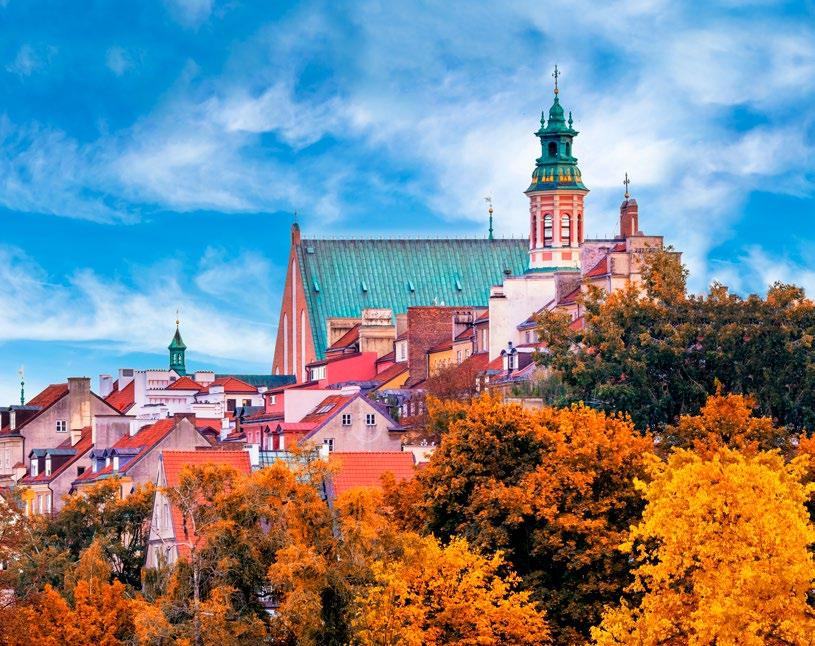
Warsaw’s
A labyrinth of winding cobblestone streets, ornate tenement facades and picturesque plazas, it’s easy to understand why the Old Town is Warsaw’s top tourist area. A window into the ‘once-upon-a-time’ when Warsaw was a pearl of European architecture, the Old Town was actually entirely rebuilt after WWII. Today it stands as a stunning testament of Varsovians’ great pride in their city, and its rise from the ruins. If you have only one day in Warsaw, you should spend part of it here.
In the devastating aftermath of the Warsaw Uprising (p.80), 85% of the city’s left bank lay in ruin, half of its population had perished, and the Old Town was a smouldering wasteland. To their credit the Capital Reconstruction Bureau immediately started rebuilding the historic centre using pre-war sketches, paintings and photographs. The first phase of reconstruction was completed in 1953, but works continued in the following decades, finally concluding with the opening of the Royal Castle (p.42) in 1984. Although what you see today is not strictly ‘original’ per say, its inclusion on the UNESCO World Heritage List speaks volumes of its authenticity and the effort required to recreate it.
Our Old Town Walking Tour leads you around the oldest part of the city, showing you its most important and interesting points, beginning and ending near Plac Zamkowy (Castle Square) - the traditional entrance to the district.
The prescribed route covers only about 1.5km. If you’re only interested in the exercise, it could take less than 30mins, but ‘if done correctly’ - that is, with a couple of short culture, food and coffee/beer breaks - we reckon it will take at most several hours to complete. Make sure you’ve got a full charge on your phone/camera, comfy shoes and off you go.
Most visits to the Old Town begin on Plac Zamkowy (Castle Square), the busy plaza where Warsaw’s medieval centre (to the north), meets the thoroughfare of its Royal Route (to the south), in the shadow of the Royal Castle. More of a triangle than a square, there isn’t a more popular meeting place in the city, with the steps of King Sigismund’s Column typically besieged by couples, schoolkids and skateboarders. A lot happens here, whether it’s political demonstrations, street performers, or the steady flow of locals and tourists out for a stroll. As for the famous column, it honours the man who in 1596 moved the Polish capital from Krak ów to Warsaw - King Sigismund III Vasa. 22 metres tall, it was erected in 1664 by his son, Władysław IV. Local legend asserts that Sigismund rattles his sabre whenever Warsaw is in trouble, an occurrence reported during the 1794 Kościuszko Uprising and again during WWII. With the Warsaw Uprising in full swing the column took a direct hit from a tank shell and came crashing down. Amazingly Sigismund survived and was returned to his perch in 1949.
Also note that there is a tourist info office located here at Plac Zamkowy 1/13 (open 10:00-18:00, Sunday 10:00-16:00). so you'll be able to find all the information you need before you explore further.
QF‑4, MRatusz Arsenał.
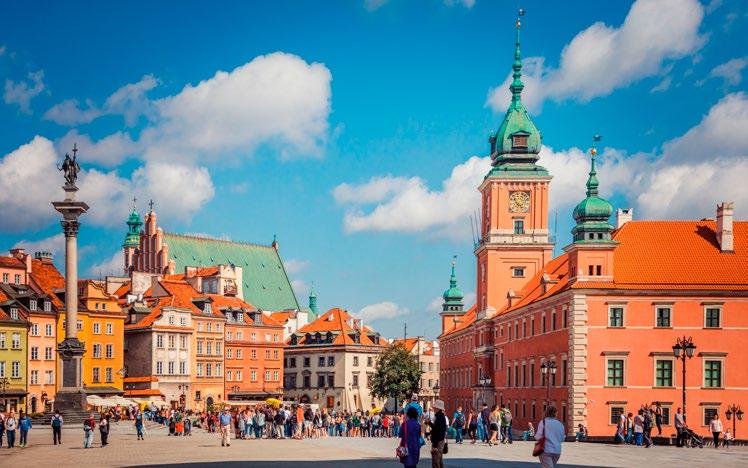
The pride of Warsaw, this palace was reconstructed at incredible cost between 1971 and 1984. Much of the furniture was donated by communist-era cohorts such as the GDR and USSR, and much of the money came via generous donations from exiled Poles. Dating back to the 14th century, the castle has been the residence of Polish kings, presidents and the seat of Parliament. Some of the halls are purported to be haunted by a ‘white lady,’ whose ghostly appearance portends disaster.
Those who plonk down for admission (60zł/45zł) will have plenty to see, including the Kings’ apartments and chambers, the Houses of Parliament and the opulent Great Assembly Hall. Additional tickets are required for the Gallery of Masterpieces and the apartments of Prince Józef Poniatowski - aka the ‘Tin-Roofed Palace’
Luckily for families, children under 7 get in for free, while those 7-16 years old have to pay 1zł! Visiting time: 2hrs.QG‑4, Pl. Zamkowy 4, tel. (+48) 22 355 51 70, www.zamek krolewski.pl. Open 10:00 18:00; closed Mon. Admission 60/45zł. Kids & students with valid ID, 1zł for each exhibit; Wed free for all exhibits. U
When it was rebuilt, Warsaw implemented a vision of its Old Town as a place of culture. Today it harbours a remarkable number of museums!
Museum of Dollhouses Games and Toys: Over 150 detailed historical dollhouses, plus other minature settings, and old toys! The two permanent exhibits show handcrafted models, costumes and toys, while also demonstrating how tastes and fashions have changed over time. More on p. 75 Qul. Podwale 15.
Museum World of Illusion: A nice reward for the kids, the exhibits will fool your eyes and meld your mind just a bit. Colors, lights and illusions! perfect for anyone who wants to learn the extent to which the mind can be easily tricked by the eye. More on p.82 QRynek Starego Miasta 21
Old Town Heritage Interpretation Centre: This small branch of the Warsaw Museum focuses on the architectural history of the Old Town - its destruction during World War II, the rebuilding efforts thereafter, and circumstances of its eventual entry on the UNESCO World Heritage List. More p. 45 Qul. Brzozowa 11/13.
The neighbouring Branicki and Szaniawski Palaces are two stunning noble residences from the last century of the Polish-Lithuanian Commonwealth. The Szaniawski Palace at ul. Miodowa 8, named after the first noble family residents, was built at the beginning of the 18th century, and was later the residence of the famed Ostrowski family. It was first reworked into its current classical style in 1812. Branicki Palace at number 6 came later in 1740, and aimed to capture the magic of French rococo architecture, in addition to having a horseshoeshaped layout with stunning façades and rooftop windows. When Count Jan Klemens Branicki died in 1771, the estate was inherited by his wife, Izabella Poniatowska, the sister of King Stanisław August Poniatowski and an influential figure of the Enlightenment era in Poland. The palace was a congregation point for many Enlightenmentera creatives of whom Izabella was a patron. Both palaces were destroyed in WWII and reconstructed using Renaissance-era paintings as a reference. These romantic buildings from ‘straight out of a painting’ were brought together in 2022, when the Marriott’s Autograph Collection opened their first Polish property here as the Hotel Verte. This exquisite 5-star accommodation option also features KUK Restaurant. (p.89).QF‑4, ul. Miodowa 6 8.
This huge monument honours Jan Kiliński, a Warsaw cobbler who became the unlikely hero of the 1794 Kościuszko Uprising. Despite being wounded twice, Kiliński and his troop of peasants captured the Russian Ambassador’s Warsaw residence - an action that ultimately led to his imprisonment in St. Petersburg.
Said to embody the Polish virtues of bravery and patriotism, his statue was erected in 1936 and originally located on Plac Krasińskich. In reprisal for an attack on the Copernicus Monument, Nazi troops

hid Kiliński inside the vaults of the National Museum. Within days, boy scouts had daubed the museum with the graffiti ‘People of Warsaw! I am here, Jan Kiliński.’ After the war the cobbler was returned to his rightful place, before being relocated here in 1959. Kiliński’s comrade and superior Tadeusz Kościuszko himself once lived nearby at Szeroki Dunaj 5; this wide street was formerly home to Warsaw’s fish market, while the narrow street running at a 90-degree angle, Wąski Dunaj, was the town’s Jewish Quarter during the Middle Ages.QF‑4, ul. Podwale.
The first sections of Warsaw’s defensive walls date back to the late 13th century, and by the end of the 14th century they stretched 1,200 meters, enclosing an area of about 8.5ha, and included 8 towers and 4 city gates. The most famous of these now non-existent structures was the Kraków Gate on Plac Zamkowy, and the Marshall’s Tower. Already in the 15th century these defenses were deemed insufficient and a second, lower line of brick walls was built along today’s ul. Podwale at a distance of just 9-14m from the previous walls; a moat was dug in-between and the Barbican was built in 1548 as the final piece of the defenses. As Varsovians were already settling in numbers beyond the city walls, these fortifications quickly became obsolete and from the 17th century they were being demolished or incorporated into tenement buildings. Ironically it was the total destruction of the Old Town that allowed these walls to be rebuilt after WWII and today the space between the two historical brick ramparts forms a pedestrian promenade parallel to ul. Podwale known as ‘Międzymurzę.’ Apart from all the interesting history, there are some incredible modern experiences to be had here. QF‑4, Międzymurzę Jana Zachwatowicza.
The communist authorities continually thwarted efforts to commemorate the Warsaw Uprising of 1944, though by the early 1980s cracks in their resolve were beginning to show, and this small-butpoignant monument made its debut in 1983. Designed by Jerzy Jarnuszkiewicz and funded by collections undertaken by scouts, the sculpture commemorates the children who had to grow up fast, serving as messengers and frontline troops during the Uprising. With its oversized helmet and rifle, the bronze figure was inspired by the story of 13-year-old corporal Antek, himself killed in action near this spot on August 8, 1944. For history buffs, this is the spot to go, hands (or arms) down.QF‑4, ul. Podwale.


Crowning the set of the medieval defensive walls which once protected the northern entrance to the city, this fearsome rotund structure dates from 1548, built by architect Giovanni Battista Venetian on the site of an earlier gate. Despite its intended use, the Barbican was only ever used in one fighting action when on June 30, 1656, during the Swedish deluge, Polish troops attacked to retake the city. In the 18th century, the Barbican was partially demolished with the remains being incorporated into new apartment buildings. It was during the interwar period that restoration work began to return the Barbican to its former glory, but alas, World War II put a hold to works, with it being completely destroyed. Along with the Old Town reconstruction, the fortified
Continue along the Old Town defensive walls to the Barbican, and on to the Old Town Square?
Or, duck out of the medieval walls and down ul. Kilińskiego, hanging a left on ul. Długa for a short <20min/1.5km walk to the POLIN Museum (D-4, p.79) via the imposing Warsaw Uprising Monument and lovely Krasiński Palace and Gardens (E-4)?
wall and Barbican were restored. Today, it serves as a bridge between the Old and New Town, and is also the hangout of choice for teenage drinkers, buskers and 'artists' selling their wares.QF‑3/4
Measuring 90 by 73 metres, the Old Town Square is prewar Warsaw’s defining highlight, lined with richly decorated tenements - keep an eye out for the ‘House Under the Lion,’ with frescos by Zofia Stryjeńska (our Polish artistic crush - look up her work) at the southwest corner leading onto ul. Świetojańska.
Today the buildings around the Rynek host numerous cafes, restos, shops and museumsMuseum of Warsaw occupies the entire northern side of the square, Museum World of Illusion (p. 82) can be found at number 21, and number 27 is home to Warsaw’s oldest restaurant, U Fukiera (p.101).
Stay on target with a stroll through the Barbican towards the Old Town Square?
Or take a detour down charming pedestrian thoroughfare ul. Freta, past the Maria Skłodowska-Curie Museum (p.74), en route to the New Town Square (350m away)?
During the 15th century the square was home to Warsaw’s Town Hall, though this was pulled down in 1817 and never replaced. Today, it features Warsaw’s best-loved monument and the city’s defining symbol - Syrenka, aka the Warsaw Mermaid Cast in 1855, this busty vixen’s form graces every bus, tram and coat of arms you’ll find in the capital. During the winter months, expect to find an excellent skating rink here and in the summer, great outdoor dining.QF‑4, Rynek Starego Miasta.
Inside 11 conjoined historical tenements on the Old Town Square, this revamped museum’s permanent exhibit, ‘The Things of Warsaw,’ presents the city’s cultural history via 7,000 objects displayed in 22 thematic rooms. Included are portraits, postcards, souvenirs, and other items with representations of the Polish capital. Additionally, a new exhibit Testimonies from the Warsaw Ghetto shines a light on the difficult history of the city's ghetto in the 1940s, told by people who experienced it. Finally, there’s a bookstore, cafe and fabulous viewpoint overlooking the Old Town Square. Well worth a visit! Visiting time: 2-3hrs.QF‑4, Rynek Starego Miasta 28 42, www.muzeumwarszawy.pl. Open 9:00 17:00; Thu 9:00 19:00; Sat, Sun 11:00 18:00; closed Mon. Admission 35/25zł; permanent exhibit only 25/18zł; temp. exhibit only 20/15zł; Thu free. U6
This focuses on the architectural history of the Old Town, and is the best introduction to the history of Warsaw's reconstruction. The permanent exhibition gives an in-depth look into Warsaw's Old town, before, during and after WWII, which decimated 90% of the neighborhood. Following the destruction of WWII, the Old Town was reconstructed in a pioneering way that combined modern techniques and conservation methods. The museum gives a clear reason for why the reconstruction of the Old Town led to its place on the UNESCO World Heritage List. Visiting time: 30-60mins.QF‑4, ul. Brzozowa 11/13, MRatusz Arsenał, tel. (+48) 22 635 34 02, www. ciz.muzeumwarszawy.pl/en/. Open Wed 9.00 17.00; Thu 9.00 18.00; Fri 9.00 17.00; Sat, Sun 11.00 17.00; closed Mon, Tue. Admission 15/10zł; Thu free. Free admission to permanent and temporary exhibitions is available to persons with disabilities (upon presentation of a disability card or certificate) and their accompanying carers. More information about accessibility: https://muzeumwarszawy.pl/lokalizacje/ centrum interpretacji zabytku/ U6


Warsaw’s Old Town is full of restaurants and bars, but, as this is literally the most touristy part of the city, the quality varies. When it’s time to take a break, here are a few places that are worth the money and worth seeking out.
U Fukiera: Adhering to tradition with extravagant flair, this famous restaurant on the Old Town Square offers an exceptional dining experience.Qp.101.
Gospoda pod Zygmuntem:This veteran Polish restaurant is as traditional as it gets, with potato pancakes, pierogi, kotlet, and so, so much more. Make sure to stop here for the authentic stuff.Qp.96.
Ciao Napoli: Authentic Neapolitan pizza (the best in town?), fresh seafood and a lovely space make this affordable franchise deservedly popular. Plus, there's outdoor seating! Qp.94
U Barssa: This classy restaurant brings a refreshing refinement to the Market Square with traditional Polish cuisine. Try their signature ‘Duck a la Barssa’ Qp.97.
KUK Restaurant: Located in the decidedly regal 18th-century Branicki-Szaniawski complex, this restaurant blends the tradition of Polish food with contemporary flair.Qp.89
Demonstrating how every word sounds exotic when you don’t know the language, Gnojna Góra may sound like another charming stop on your tour. And it is for the views over the Vistula River, but not for the name, which literally translates as Shit Hill (Dung Hill, if you wish to be more polite). For centuries, this was the dumping ground for all of the Old Town’s waste. As you can imagine, it grew over time and the distinctive shape can best be seen from the bottom. At one stage it was actually renowned for its healing properties - people with obscene amounts of money would come here to be buried up to their necks in rubbish in a supposed cure for syphilis (doesn’t work, it turns out). From here head back towards the centre via ul. Dawna, whose trademark blue archway is one of the most picturesque sights in the city, then swerve onto ul. Kanonia.QG‑4, ul. Brzozowa.
Once the site of the oldest cemetery in Warsaw, Kanonia Street takes the shape of a small square, at the centre of which is a cracked cathedral bell dating back to 1646. Cast by artisan Daniel Tym (who also made the statue of King Sigismund III atop the famed column), the bell never actually rang at St. John’s Cathedral next to it, but it has developed its own legend: touch the top of the bell while walking its circumference and your wish will come true Across from the bell is one of the world’s most narrow houses at number 20/22. Only 2m across, it was designed to evade property taxes, which in the 18th century (when it was built) were calculated
based on the width of the facade facing the main street. Also note the covered walkway nearby, which links the Cathedral to the Royal Castle and was built after a failed assassination attempt on Sigismund III. The attacker, who succeeded in striking the King twice with a pickaxe before being overpowered, was subsequently dealt with using the most medieval means imaginable: stretched by four horses, he was quartered with an axe; his body was then burned, and the ashes fired from a musket so as to disperse them in the air. This was all done in public, of course, at the city’s execution place, a few blocks away at the end of ul. Piekaska.QG‑4, ul. Kanonia.
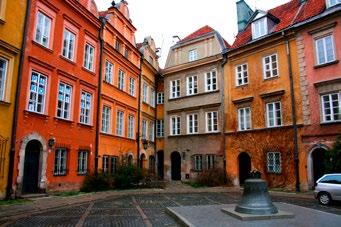
Originally built in the 14th century, St John’s is steeped in history. The last king of Poland, Stanisław August Poniatowski, was crowned and buried here, and in 1791 he also declared the May 3rd Constitution inside the building. The bodies of Henryk Sienkiewicz (writer), Gabriel Narutowicz (Poland’s 1st president) and various Mazovian knights can be seen in the crypt (open Mon-Sat 10:00-17:00, Sun 15:00-17:00, closed during mass; admission 5/3zł). As with most major landmarks, it was left in a heap of ruins during the Warsaw Uprising, before being rebuilt in pseudo-gothic style. On the external wall by the main entrance are fragments of a Borgward IV - a remote-controlled demolition vehicle used by the German army.QF/G‑4, ul. Świętojańska 8, www.katedra.mkw.pl. Open 06:00 20:00; Sun 08:00 22:00.
Circling back to Plac Zamkowy you can either carry on down the Royal Route (turn the page), or circle round the back of the Royal Castle for a walk through the free gardens and down along the riverbank towards Powiśle (p.54).


The fall light always hits the Royal Route just right - perfect for pictures.
Warsaw’s famed ‘Royal Route’ links the city’s three Royal residences, starting from the Royal Castle (p.42) on Plac Zamkowy, via Łazienki Park’s Palace on the Isle (p.60), en route to Wilanów Palace (p.62) in the district of the same name. Officially covering 11km in length, this main artery through the city takes in a great many of Warsaw’s historical buildings, parks and monuments along the way, making a trip down at least part of the ‘path of the kings’ - be it on foot, by bike, or motorised scooter - a fine opportunity to see the heart and soul of the capital.
In lieu of the full 11km traverse, this walking tour picks up at the end of the Old Town Walking Tour (p.40) on Plac Zamkowy and guides you gently down Warsaw’s two main high streets - ul. Krakowskie Przedmieście and ul. Nowy Świat - to the ironic/ iconic Palm Tree fittingly at the intersection of Al. Jerozolimskie (Jerusalem Street). An easy 2km/20mins on foot, along the way or very nearby you’ll find many wonderful restaurants, cafes, bars and shops, so use the rest of our guide to plan your pit stops. Once you've exhausted these options, continue on the Royal Route to Łazienki and Wilanów (while resting your feet) should you choose to, or veer off to the center of the city and see the Palace of Culture or grab a good bite to eat.
We'll start at the iconic column in front of the Royal Castle, which effectively begins the transition between Old Town and Royal Route. Built in honour of the man who moved the Polish capital from Kraków to Warsaw - King Sigismund III Vasa - this 22m column was erected back in 1664 by his son, Władysław IV. Local legend asserts that Sigismund rattles his sabre whenever Warsaw is in trouble, an occurrence first reported during the 1794 Kościuszko Uprising and again during WWII. With the Warsaw Uprising in full swing the column took a direct hit from a tank shell and came crashing down. Amazingly Sigismund survived, losing only his sword, and was returned to his new perch in 1949. The remains of the original column can be seen nearby beside the Royal Castle and has become a kind of meeting point for friends, tourists and everyone in between! QF‑4, Pl. Zamkowy
2 St. Anne’s Church & Tower
St. Anne’s survived the war with a few scratches and a bombed-out roof, but what the Nazis failed to destroy was very nearly demolished in 1949 when the careless construction of the nearby Trasa W-Z tunnel led to landslides and huge cracks in the floor of the church, which threatened to collapse; it took 400 people two weeks to stabilise the foundations. Interestingly, St. Anne’s also found disaster in the 17th century, when it survived the Swedish Deluge only to be the victim of arson two years later. The classical façade dates from 1788 and the interior holds even more classical and rococo details. The real reason to visit, however, are the splendid views from the tower - worth the 147-step climb (church open 7:00-19:00 weekdays; Sat 9:00-19:00; Sun 9:00-22:00. Tower hours below) 10/7zł. Call +48 22 374 94 84).QG‑4, ul. Krakowskie Przedmieście 68, MRatusz Arsenał, tel. (+48) 22 826 89 91, www.swanna.waw.pl. Tower open 10:00 21:00; Sat, Sun 11:00 22:00.
3 Adam Mickiewicz Monument
Patriot and poet Adam Mickiewicz (1798-1855) is Poland’s greatest literary hero. Known as the ‘Father of Polish Romanticism,’ his epic poems and dramas served as inspiration for insurrections against the imperial powers that had partitioned Poland out of existence in the late 18th century. Born to an upper class Polish family in what is today Belarus, Mickiewicz attended university in Vilnius, where he began publishing his poems and became involved in political activities against imperial Russia, which now occupied the former territory of the PolishLithuanian Commonwealth. These activities saw him exiled to Russia in 1824, but Mickiewicz was able

to leverage connections he made in the salons of Moscow and St. Petersburg to escape to the west in 1830, eventually settling in Paris. A champion of freedom, he died during a cholera outbreak in Turkey, while recruiting a Polish legion to fight the Russians in the Crimea in 1855. His body today lies with those of the Polish kings in Kraków’s Wawel Cathedral. To learn more, visit the Adam Mickiewicz Museum of Literature on the Old Town Square (F-4).
This monument was first unveiled in 1898 on the 100th anniversary of Mickiewicz’s birth. Sculpted by Cyprian Godebski, the monument was destroyed by the Nazis, however, after WWII, Polish soldiers recovered Mickiewicz’s head and other demolished parts in Hamburg. Sculptor Jan Szczepkowski was able to produce a copy of the original sculpture, which was unveiled, along with its restored surroundings, in 1950.QG‑5, ul. Krakowskie Przedmieście 21 23, MNowy Świat Uniwersytet.
Krakowskie Przedmieście is easily one of Poland’s most prestigious and well-known streets - the price tag of the rents matches the prestige! The street stretches from the Royal Castle in the Old Town (p.40) until it blends into ul. Nowy Świat. It is along the length of this street, and beyond, that you will easily find our list of things to see along the way - it’s almost impossible to get lost! As you walk along the route, be sure to stop at any of the 15 Chopin Benches. Designed by Professor Jerzy Porębski, they feature a button, when pressed, unleash a 30 second torrent of Chopin. Each bench contains descriptions in EN/PL to the site’s relevance to the composer. This is a delightful walk down one of the prettiest parts of the city. QG‑4, MNowy Świat Uniwersytet.
Guarded by lions and stern-looking soldiers, of all the landmarks that line Krakowskie Przedmieście, none is more important than the Presidential Palace. Construction began in 1643 at the behest of Stanisław Koniecpolski, though was only completed after his death. It then passed into the hands of various aristocratic families, becoming famed for its banquets in the 18th century - the most extravagant of which marked the coronation of Stanisław II August Poniatowski in 1789; over 2 million PLN was spent entertaining the 4,000 guests.
Poniatowski proved to be one of the nation’s most controversial monarchs - and also its last. Among his successes was the Constitution of May 3, 1791 Signed on these very grounds, it was the

2nd such document in the world, after the US Constitution. The large monument in front of the Palace is of the king’s nephew, Józef Poniatowski A Polish general, he defended Warsaw during the Kościuszko Uprising and eventually died in the service of Napoleon.
After 1818 the Palace became the seat of the Viceroy of the Polish Kingdom, entertaining many a visiting Tsar before burning down in 1852. At the beginning of the 20th century an entire wing was demolished to make way for the Hotel Bristol. When Poland regained its independence in 1918, the Palace was commandeered to serve as home for the Prime Minister, and somehow it survived WWII. More momentous events came in 1955 when the Warsaw Pact - the Soviet Union’s answer to NATO - was ratified within its walls. Since 1994 it has served as the official home of the Polish president, which is why you’ll find streams of limos heading in and out.
QG‑5, ul. Krakowskie Przedmieście 46/48, MNowy Świat Uniwersytet.
Carry on down the Royal Route? Or perhaps hang a right after the Hotel Europejski down ul. Tokarzewskiego-Karaszewicza towards Plac Piłsudskiego (p.32)? Choose the latter to see Warsaw’s largest square and escape the urban hub-bub via the lovely Saxon Garden, a stroll through which leads you into the City Centre and on a path to Hala Gwardii (E-6) and Hala Mirowska (D-6) - two massive indoor markets 15-20mins on foot from where you’re standing.
Two of the biggest, most famous landmarks on prestigious ul. Krakowskie Przedmieście are former palaces turned luxury hotels today. The first is Hotel Bristol at number 42/44. First built in 1900, a brass plaque outside boasts of its many famous guests: Picasso, Nixon and Dietrich, to name a few. In 1993 it was restored to its pre-war glory and the re-opening ceremony was such a big deal, it was attended by Ms. Margaret Thatcher. Refreshed repeatedly since, it is certainly among the very top hotels in the capital, boasting an interior by world-renowned designer Anita Rosato that blends secessionist and art deco glamour with modern luxury. If you can’t afford to spend the night, you can still drop in to the wonderfully old school Cafe Bristol - a perfect place for coffee or breakfast.
Across the street is the revamped Raffles Hotel Europejski. The first hotel to reopen after WWII, it entered Varsovian folklore in 1967 when a group of young upstarts calling themselves ‘the Rolling Stones’ stayed here, under the watchful eye of the authorities, and had themselves quite a time tipping back vodkas in the hotel bar. In 2018 the hotel was refurbed for the Raffles brand and today it is a stunning luxury space full of contemporary art and custom furnishings. If you want to have your proverbial socks knocked off, explore the building’s many first-rate dining and drinking venues, Though you might not be able to afford anything, you can still wander through Europejski Boutiques - the most exclusive shopping experience in the country.QG‑5, ul. Krakowskie Przedmieście 42/44, 13, MNowy Świat Uniwersytet.
The good city of Warsaw has devised one more way to bring Chopin to the people, and that’s by way of fifteen musical benches that have been placed at key sites connected with his life since 2019. Made of cast iron and polished black granite, these benches feature a button which, when pressed, unleash a thirty second torrent of Chopin. They also come equipped with a route map as well as brief explanations in Polish and English as to the site’s relevance to Chopin. Each one comes inscribed with a QR code – scan it and download the Chopin App to access audioguides, Chopin melodies, facts, figures and photographs. This is, at the very least, a fun little trick to show your friends as you sit down for a much-needed rest while exploring the Old Town and Royal Route!QG‑6, MNowy Świat Uniwersytet, www.biuro.chopin2010.pl
Everything you need to know about the reconstruction of the Old Town!

Heritage Interpretation Center 11/13 Brzozowa St
www.muzeumwarszawy.pl/en
Cucina Mia (Sheraton Grand Warsaw): Elegant, traditional Italian dishes bursting with flavor from earthy truffles to Amalfi lemons and fresh Sicilian fish. Qp.94
Gościniec Polskie Pierogi: Immense portions of traditional Polish fare and charming service. What's not to like?.Qp.95.
Coctail Bar Max & Dom Whisky: With a massively tall main bar and great cocktails, this is the Friday night spot. Qul. Nowy Świat 32.
Kufle i Kapsle: A delightful, modern interior with some killer craft beers, and great conversation. A good spot to join with friends on a weekend (or weekday!) night.Qul. Nowy Świat 27.
Carry on further and you’re in Warsaw Universityland, the main campus of which lies beyond the grand gateway of number 26/28. Dating from the 17th century the main building, known as ‘Villa Regia,’ was remodelled and renovated several times before Warsaw Uni was established here in 1816. The university had a tough time under Russian rule; closed in retaliation for the 1830-31 Uprising the uni continued to operate underground, though by 1859 the Tsar calmed down enough to rubber stamp the creation of a School of Medicine. Today, with some 48,000 students on the roll call, the university stands out as the largest and
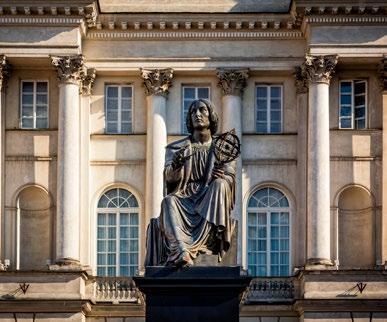
Sciences.
arguably best in Poland. Notable alumni include former Israeli premier Yitzhak Shamir, writer Witold Gombrowicz, award-winning travel writer Ryszard Kapuściński, the late president Lech Kaczyński and the poet Julian Tuwim. Q G‑6, Krakowskie Przedmieście 26/28, M Nowy Świat Uniwersytet, www.en.uw.edu.pl
No self-respecting Chopin fan (is that you?) can leave Warsaw without first visiting the final resting place of his heart. Smuggled out of Paris in a jar of booze by his sister (true story), Chopin’s heart was brought to the church in accordance with his final wishes in 1882 and is sealed in an urn behind a tablet bearing his likeness, specially carved by Leonardo Marconi.
Although Chopin’s ticker serves as the church’s key draw there are several other notable features and funereal remains to tempt you inside this astonishing Baroque creation. These include another urn with the remains of Nobel Prize-winning author Władysław Reymont, and tablets honouring various Polish icons including poet Juliusz Słowacki and WWII hero Władysław Sikorski. The organ, built in Salzburg in 1925, is also the largest in Warsaw.
Throughout a history that dates back to the 15th century, Holy Cross Church has played a role in Warsaw’s glories and calamities. It was here that the last Polish King forged the Order of the Knights of St Stanislaus, and it was directly outside in 1861 that Russian troops brutally suppressed a patriotic protest. It was this bloodbath that lit the touchpaper for the January Uprising of that year. Devastated during the Warsaw Uprising in 1944, the church was painstakingly rebuilt at the end of the war and is today a feast for the heart, eyes and soul. Masses start at 6:00 a.m. and run daily at designated times. Parish hours are below.QG‑6, ul. Krakowskie Przedmieście 3, MNowy Świat Uniwersytet, tel. (+48) 22 826 89 10, www.swkrzyz.pl. Open Tues, Wed 10:00 12:00, 16:00 18:00; Thu, Fri 10:00 12:00.
The founder of modern astronomy. A sheltered academic, Copernicus made his observations alone, a century before the invention of the telescope. His book De Revolutionibus (1543) posited that the earth rotated on its axis once a day, travelled around the sun once a year, and that man’s place in the cosmos was peripheral. Though obvious today, this was an utterly radical idea at the time. Although those who propagated his ideas were burned at the stake and the Catholic church placed De Revolutionibus on its list of banned books (as late as 1835), there was no
turning back progress. The modern cosmological view - that our galaxy is one of billions in a vast universe - is this man’s legacy.
The statue itself was unveiled in 1830 and has seen its share of adventure. During WWII the Nazis placed a new plaque here insinuating that the great man was in fact - gasp! - a German. A boy scout named Alek Dawidowski ducked the guards and removed the plaque. Boiling with fury, the Nazis removed the monument, then dynamited a few others for good measure. The statue was recovered after the war, and Dawidowski entered Polish folklore for his bravery. QG‑6, ul. Krakowskie Przedmieście, MNowy Świat Uniwersytet.
The name of this street means “New World” and it is an apt description; just south of ul. Krakowskie Przedmieście, Nowy Świat has a similar look to the Old Town but instead of museums and history, you’ll find food, beer, live music and a street constantly bursting at the seams with life. Like much of the Old Town, Nowy Swiat was also razed during WWII, but was rebuilt almost immediately following in a neoclassical style, rather than its pre-war Art Nouveau style. Legend (and history) goes that this street was rebuilt based partly on paintings of its pre-war ancestor. Make sure to stop by Karmello for some chocolate nosh and coffee. If it’s nightlife you’re after, there’s plenty of bars: Dom Whisky Cocktail Bar (open until 4 a.m. all week) will serve all the bright colored drinks you want; across the street, Kufle i Kapsle has a craft beer menu that will make even the snobbiest beer snob happy. We could go on, but there is a lot in the way of eating and drinking and fun. Finish your journey by taking in the towering palm tree 12 at the intersection between Nowy Świat and Al. Jerozolimskie, an art installation that’s a beloved little touch of the tropics in the middle of town. QH‑8.
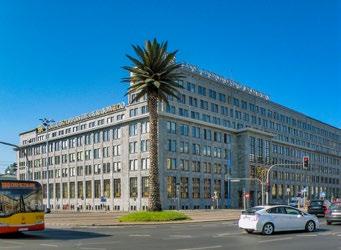

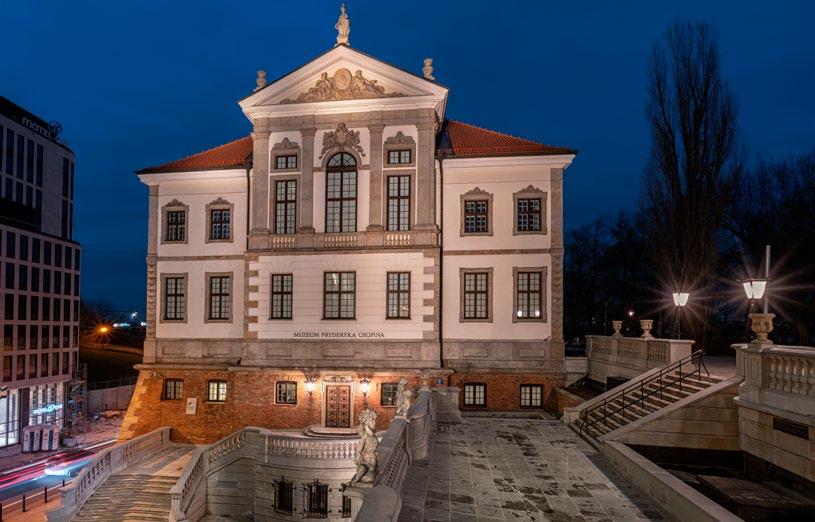
Once a mundane area of apartment blocks and industrial decay, over the past two decades Powiśle has transformed into one of Warsaw’s most intriguing and eclectic areas to explore.
Considering its plum location along the riverside, it’s hard to believe that this large neighbourhood was essentially a cultural dead zone until skyrocketing rent costs in the centre forced Warsaw to reconsider its potential. Now, Powiśle has become a hotspot for everything cool, young and happening in Warsaw, so much so that the city decided to recently open a gorgeous pedestrian bridge tying the Praga (p.64) area east of the river to Powiśle (you can access it via Ul. Karowa in Powiśle or Ul. Okrzei in Praga.) The history of Powiśle's growth is interesting: Warsaw University was the first to pitch a tent in the area, creating a draw since 2002, and the adjacent opening of the Copernicus Science Centre (p.56) in 2009 invited further cultural investments. Then the Metro (2015) helped make it into a popular place for public recreation. The redevelopment of the former Elektrownia Powiśle (p.56) power plant into a space for events, dining and shopping (2020) typifies the high-powered investment taking place here today. Still, Powiśle maintains an authentic local vibe thanks to its balance of both trendsetting gastro spots and boho dives (like the iconic rotund Warszawa Powiśle bar I-7). Roll yourself downhill towards the river from Warsaw’s Old Town or City Centre to discover what’s good in this hood!
Warsaw’s Chopin Museum is touted as one of the most high-tech in Europe. Three floors of interactive exhibits cover the composer’s life in every aspect, including a recreation of his Paris drawing room, the last letter he wrote to his family, his death mask, and even an intriguing section on his social circle. In addition, there are dozens of touchscreens, audio-visuals, and musical games, making the museum a highly interactive experience that will keep visitors of all ages engaged. Thirty-minute live concerts take place every Sat and Sun at 12:00, 15:00 and 17:00 (available to all museum visitors). Visitor numbers are restricted, so we suggest reserving tickets online in advance. Located in the famous Ostrogski Palace, the building’s catacombs are said to be home to the legendary Golden Duck - a princess charmed by the Devil before being transformed. Visiting time: 1hr. Q H‑7, ul. Okólnik 1, M Nowy Świat Uniwersytet, tel. (+48) 22 441 62 51, www.muzeum.nifc.pl Open 10:00 18:00; closed Mon. Admission 35/25zł.
Warsaw’s ‘Syrenka’ - the iconic freshwater warrior mermaid - has been representing the Polish capital since time immemorial. The monument here is the second-most famous statue of the city’s symbol (the first being on the Old Town Square, (p.44), though this one actually overlooks the river the mythical icon is alleged to have dwelled in.
At 2.75 metres tall, the the bronze monument was created by sculptor Ludwika Nitschowa and unveiled in June 1939, just months before the outbreak of WWII; remarkably it stood unscathed in this exact spot throughout the entire war while the rest of Warsaw's left bank was devastated.r. Q I‑6, Bulwar Bohdana Grzymały Siedleckiego (near Most Świętokrzyski), M Centrum Nauki Kopernik.
Warsaw has modernised and improved its left bank dramatically in the last decade. The Powiśle boulevards flanking the Świętokrzyski Bridge and leading north to the Old Town have seen the most development and are now a popular thoroughfare for walking, running, cycling and skating, as well as bars, cafes and restaurants - particularly in the warmer months - plus parks and leisure spaces.
Even if it's not the depth of summer, this is the perfect place to wander and lounge. Grab a drink or snack at the vendors that line the banks and relax on the steps with all the other cool locals. . It’s fair to say that Warsaw’s river boulevards are now among the best in Europe so don’t miss checking them out while you're here.QI‑6, Generała George’a Smitha Pattona, MCentrum Nauki Kopernik.

When it’s time for a rest or a feed, there are many worthy venues on and around ul. Solec - one of the main streets in the area, as well as numerous food trucks and barges moored up along the river. Also, Elektrownia Powiśle has an entire food hall inside, so your options are manifold. Here are a few other notable venues in the neighbourhood:
Daebak: . Authentic Korean bento boxes served up in a prime location. Choose your own courses from the regularly changing menu, and enjoy Korean food on the go!Qp.95.
Kumo To Yaki: This is the epitome of Japanese street food, with those fluffy pancakes you've seen all over the internet, delicious matcha and much more!Qp.96.
PaTaThai Powiśle: Authentic Thai dishes from all over Thailand, all bursting with flavor like jucy duck and savory curry. Seafood, chicken and tofu all get their due here and it's famiily-friendly, too!Qp.96.
Once one of the largest electrical power plants in Europe, Elektrownia Powiśle powered the Polish capital from 1904 to 2001 before it was closed and left to crumble. Purchased by a developer in 2016, the historic industrial site was transformed into a multifunctional, mixed-use urban centre. Covering a massive 50,000m2, much of the site has been converted into offices, apartments and a hotel, but a remaining 15,000m2 in the former boiler and engine buildings comprises commercial space for retail, gastronomy and wellness. Reopened in 2020, today Elektrownia offers four levels of shopping, and is a culinary hotspot with 41 restaurants bars and cafes across the complex (see their Food Hall on p.102). Additionally, there is a 1500m2 Beauty Hall offering over 350 cosmetic treatments from 7 beauty concepts. Events are frequently hosted in the courtyards between the buildings, including a regular farmer’s market, yoga lessons and film screenings. There are plenty of reasons to check out one of Warsaw’s most exciting urban renewal projects.QH/I‑6, ul. Dobra 42, MCentrum Nauki Kopernik, tel. (+48) 22 128 56 00, www.elektrowniapowisle.com. Open 11:00 21:00. Food Hall open 12:00 23:00, Fri 12:00 24:00, Sat 11:00 24:00, Sun 11:00 23:00. TU6K
An example of EU funding being used in a genuinely visionary way, the CSC is the very best science centre in Europe, and one of Warsaw’s top tourist attractions. The fun starts as soon as you encounter the museum’s very own ‘Robothespian’an interactive humanoid robot - at the front doors, before exploring several hundred hands-on exhibits across two floors that will have you actively pressing buttons, answering quizzes, and even exerting yourself physically. In addition to temporary exhibits, there are zones specially designed for the youngest visitors up to teens and adults. Visiting time: 3-4hrs.
QI‑6, ul. Wybrzeże Kościuszkowskie 20, MCentrum Nauki Kopernik, tel. (+48) 22 596 41 00, www. kopernik.org.pl Centre Open 09:00 18:00; Fri 09:00 20:00; Sat, Sun 09:00 19:00. Closed 1st Mon of every month. Planetarium open Mon 10:00 15:30; Tues, Wed 10:00 19:30; Thu 10:00 20:00; Fri 10:00 21:00; Sat, Sun 10:00 20:00. Roof Garden: May Aug: 10:00 20:00; Sept Oct: 10:00 17:00 www.kopernik.org.pl/en/ planetarium. Admission 46/32zł; holidays & weekends 48/34zł; planetarium 32/23zł. U
This long-awaited pedestrian footbridge opened in late March, connecting Praga on the east side of the river with Powiśle on the west. You can access it near Karowa Street in Powiśle (around Mariensztat below). The gorgeous bridge is the longest pedestrian bridge in Poland, and it's is meant for walkers and cyclers alike. In the warmer months, you'll likely find plenty of people meandering, some live music, some people selling ice cream and cotton candy. In the chillier months, make sure to bundle warmly as you cross the 502-metre structure, and enjoy some design features like viewing platforms and rest areas. The Polish name, Kładka na Wiśle, means "Footbridge on the Vistula River". If you want to connect from the Old Town to Centrum Praskie Koneser (p. 65 ) this bridge is the way! QH‑5, Karowa 6.
Traditionally speaking, rooftops are the preserve of chimney sweeps, superheroes and Santa, but visit the Warsaw University Library (BUW) building and that opinion will quickly change. Topping off the bizarre oxidised green building is a lovely two-level rooftop garden filled with bridges, streams and sculptures that covers an entire hectare; there’s even a fishpond and a stone fountain mixed in among the oak trees and Japanese spirea. Designed by Irena Bajerska and opened back in 2002, the garden affords panoramic
views of lower left-bank Warsaw and across the river to Praga. A wonderful place to stop and rest in the heart of the city, take a picnic and sit amongst the groups of students taking time out from studying (ahem, napping). While you’re there, we also highly recommend visiting the BUW Gallery to see some fantastic Polish poster art (open 13:00-18:00, Sat 13:00-17:00, closed Sun; admission free). Library open Mon-Sat 09:00-21:00, Sun 15:00-20:00. Admission free.QH‑5, ul. Dobra 56/66, MCentrum Nauki Kopernik, www.buw.uw.edu.pl. Open 08:00 22:00. Library open Mon Sat 09:00 21:00; Sun 15:00 20:00. Rooftop Gardens accessible April 1 - October 31 only. Admission free.
8 Mariensztat
Cut off from the rest of the Old Town, the northernmost part of Powiśle has its origins in the 18th century when a nobleman received the land as part of a dowry. The area was built in 1762 and named after his wife, with the latter part of the name 'stadt' (changed to 'sztat' after World War II) being added to appease the Saxon king of Poland at the time, King Augustus III.
Completely destroyed during the Warsaw Uprising, it was rebuilt after the war using a totally different street plan; the architectural design aimed to evoke a look mixed between 18th century buildings in the Praga district while also incorporating a socialist realist element. the picturesque neighbourhood is full of small parks and winding streets and provides a leafy retreat from the crowds just a short distance away from the heart of the Old Town.
In previous centuries, Mariensztat was notorious for its bordellos and bare-knuckle boxing matches, and its main square was once the home of a bustling market - a role today commemorated by a statue of a woman with a chicken and basket of goods, found on ul. Sowa 4. Today, though it looks a little sleepy, Mariensztat ranks as one of Warsaw's most engaging district.QG‑4/5, ul. Mariensztat.
From Powiśle it’s exceedingly easy to get to Praga (p.64) or the City Centre (p.30) through a lovely (albeit a little long) walk along the river toward the south. Alternatively, head north along the river to return to the Old Town (p.40) or check out New Town’s Multimedia Fountain (F-3), which is a popular attraction for young families; both are about 2km/20mins on foot.


This glorious 17th century park, spread over 74 hectares, is one of Warsaw’s unparalleled highlights, adored year-round by locals and visitors alike. Although it seems as if half of Warsaw spends its fall Sundays here, the park is so vast that it never feels crowded and offers an enchanting opportunity to escape the capital’s modern-day gloom and get lost in its nostalgic past. Don’t mistake Łazienki for a simple city park; it is also a museum complex full of wonderful art and architecture. Don’t miss it.
The full/proper name of today’s park is ‘Łazienki Królewskie,’ which means ‘Royal Baths’ and is derived from the park’s centrepiece, the Palace on the Isle
The palace was originally built in the 17th century as a private bathhouse for Stanisław Herakliusz Lubomirski, owner of the nearby Ujazdowski Castle and much of the surrounding land (and much of Poland, come to mention it). The bathhouse was bought by the last king of Poland, Stanisław August Poniatowski, in 1772 and converted into a private residence.
It was at this time that the grounds were formally laid out as a private garden. Perfect for romantic strolls, family picnics and cultural outings, today the park is packed with gorgeous sculptures and monuments, palatial architecture and priceless art, lovely landscapes of bridges and ponds, plus cafes, restaurants and more. The whole park is a must when visiting the city -- don't miss it!
While the park is free, the indoor exhibits require a ticket
Ticket 1: Includes just sites: the Palace on the Isle, the Old Orangery, Myslewski Palace, White Pavilion, Water Tower, Stables, Barracks, and Podchorążówka: 60/30zł.
Ticket 2: Includes just the Cantonal Barracks and the Kubicki Stables, 30/15zł
Ticket 3: All places listed above, plus temporary exhibit, "Royal Garden Life": 90/45zł.
For all exhibits, kids under 7 & students under 26 1zł for all three tickets. Buy tickets from cash desks or machines at the Museum of Hunting & Horsemanship.Q H‑12, M Politechnika, tel. (+48) 22 50 60 024, www.lazienki krolewskie.pl. Park open daily 06:00 22:00. Indoor exhibitions open from October through April, Tues Wed 9:00 16:00; Thu Sat 10:00 18:00; Sun 10:00 16:00. Closed Mon and holidays.
The Belvedere Palace was the residence of Polish presidents from 1918 to 1995 and then again during the presidency of Bronisław Komorowski from 2010-2015 (Presidents Aleksander Kwaśniewski, Lech Kaczyński and current president Andrzej Duda opted to live in the Presidential Palace on ul. Krakowskie Przedmieście) Built in 1694 and thoroughly remodelled in 1818, the building is essentially offlimits to visitors, but an eyeful to behold. A wonder of Neo-Classical design, complete with tympanium and oversized Corinthian columns, the best views and photo ops are fetched from outside the park on Al. Ujazdowskie.QH‑12, ul. Belwederska 56.
Don’t miss this famous art nouveau sculpture of Warsaw’s favourite son, Fryderyk Chopin. Depicting the composer right here in Łazienki beneath a willow tree, the work by Wacław Szymankowski was erected in 1926. As part of the Nazi campaign against Polish culture it was dynamited by the Germans on May 31, 1940; as the story goes, the following day an unknown patriot placed a placard on the wreckage declaring: ‘I don’t know who destroyed me, but I know why; so I don’t play the funeral march for your leader.’ An original plaster-cast allowed the statue to be revived and this reconstruction was unveiled in 1958. QH‑12.

Warsaw’s
Any number of buses stop in front of the park’s three main entrances on ‘Al. Ujazdowskie’, including numbers 116 (from Old Town/Nowy Świat) and 180 (from Al. Jerozolimskie, bus stop ‘PKP Powiązki’); get off at the ‘Łazienki Królewskie’ bus stop. Accurate times and routes can be checked online at warsaw.jakdojade.pl
A good place to start a visit to Łazienki, the Old Orangery is one of two ticket offices and tourist info points in the park. Originally erected in 1785-88 to house exotic trees through the once-harsh Polish winter, the sunny structure also harbours King Stanisław August’s Royal Theatre - one of the few surviving 18th century court theatres in Europe. Constructed out of wood and covered in marblised polychromes, the ground floor is rather modest with simple benches on risers, while the upper level features nine boxes with eight female figures gripping candleholders in between. Interestingly, the space above the boxes has been painted to create the illusion of yet another level, complete with an 18th-century court audience. The theatre is still used today to host chamber concerts. The other important aspect of the Old Orangery is the Royal Sculpture Gallery. Stanisław August collected hundreds of marble and plaster copies of the most famous sculptures from antiquity. Now, 120 of the most important of these casts are uniquely displayed inside the Orangery. Visiting time: 30mins.QI‑11.
The Palace on the Island is Łazienki’s raison d’etre and therefore, a true must-visit when you're going to the park. Built as a Baroque bathhouse in 1683, the structure was converted into a Neoclassical residential palace in the late 1700s by King Stanisław August. Located on an island in the middle of a narrow lake, and connected by colonnaded bridges on each side, the façades are unified by giant Corinthian pilasters that link its two floors. Today, almost all of the palace can be visited, including the King’s private rooms. The main reception room, Solomon’s Hall, is decorated in the most extravagant of Baroque styles with a series of paintings depicting the History of Solomon. In 1793, King August converted the palace into the first modern public museum, displaying the most important paintings from his collection. Visiting time: 45-60mins.QI‑11.
Built in the 1770s and 80s, this elegant semi-circular palace was originally conceived as King Stanisław August's primary residence, though it gradually shifted to more diplomatic functions, hosting official state soirees and accommodating foreign ministers. Designed in Early Classicist style, the unique recessed entrance is decorated with mythological sculptures. After a thorough renovation, the building again appears very much as it would have in the late 18th century, and a walk through the interiors - replete with original murals, furniture and art - is worth the short amount of time it takes to see them. Visiting time: 30mins.QJ‑11.


Very much as advertised, this museum will appeal to avid hunters and horse lovers, though the latter may have some trouble with all the mounted trophies. If the trophies are too much, you can skip the former Cantonists’ Barracks - built in 1826–1828 and full of hunting arms and taxidermied animals - and head straight to the Kubicki Stables, built 1825–1826 and home to an exhibit of horse-drawn carriages, saddles, harnesses and riding accessories. Visiting time: 1hrQJ‑12, ul. Szwoleżerów 9. Admission 30/15zł; kids under 7 free; students under 26, 1zł. Fri free.
Part of the University of Warsaw, these separate gardens at Łazienki have several greenhouses stuffed with exotic, weird and wonderful species from all over the world, but what brings in the crowds are the stunning rose gardens just behind the main entrance. A riot of colour when in full bloom, the gardens are the preferred subject matter of art students, who set up their easels early and paint until the guards kick them out at sunset. Open in October.
QH‑11, Al. Ujazdowskie 4, MPolitechnika, tel. (+48) 22 553 05 11, www.ogrod.uw.edu.pl. Open 10:00 17:00. Ticket office closes at 16:00. The last day of the garden for the season is Oct. 31. Greenhouses open from Tuesday to Sunday. Admission 20/10zł (park and greenhouses), kids under 7 free.
Łazienki has several cafes and restaurants, though most of them are very pricey. Head out of the main gates to Plac Unii Lubelskiej (H-12) for more casual options.
Belvedere: Located in the park’s New Orangery, this is one of Warsaw’s most prestigious restaurants and worth the money, but not for families after a day in the park.QI 12.
Być Może: This hip cafe/bistro bakes its own bread, offers all-day breakfast and daily lunch specials, and is perfect whether you’re craving coffee or wine. QH 12, ul. Bagatela 14.
DZiK (Dom Zabawy i Kultury): This old residence offers European cuisine and hosts a wide range of evening events, getting wild on weekends.QI‑13, ul. Belwederska 44 A.
Viet's Baguette: This deli offers 21 varieties of banh mi, known as a 'Vietnamese hoagie.' A great place to stop in before you head to the park.
QG/H 12, ul. Puławska 7/9.
Klonn: Centrally located for perfect post-park bites, this stylish parkside resto is worth it for modern cuisine and excellent wine. QH-11, ul. Jazdów 1B.

Wilanów is picture-perfect in the fall sun
The ‘Polish Versailles’ is just one of the many fitting monikers applied to this splendid late 17th-century 45ha palace and garden complex 10km south of the centre.
Essential visiting for anyone wishing to understand the former grandeur of the Polish capital, Wilanów is more than just a palace. As one of the few existing remnants of the era when Poland was a vast kingdom stretching from the Baltic to the Black Sea, today it also represents the European splendour and sophistication that was lost and few today associate with Warsaw. The palace, park and surrounding ensemble of buildings also represent the height of Polish Baroque and are collectively one of Poland’s greatest cultural treasures. If the weather’s good and you’ve got time to spare, it’s easy to spend most of a day relaxing and taking in the sites here.
10km south of the centre, Wilanów is best reached by bus or taxi, though the latter costs 35-40zł and essentially takes the same amount of time: 25-35mins. All buses stop directly outside the palace gates at the ‘Wilanów’ stop. From Plac Zamkowy (F-4), Pl. Trzech Krzyży (H-8) or Łazienki Park (H-11) take buses 116 or 180. From Warszawa Centralna train station (E-8) take bus 519. For exact times and routes, check warsaw.jakdojade.pl
The 45 hectares that make up Wilanów Park developed over the centuries. The park’s present form dates from the extensive and mostly faithful renovations made during the 1950s. Comprising a two-level Baroque garden, a Neo-Renaissance rose garden, a classical English landscape park and the so-called English-Chinese landscape park, recent revitalisation works and archaeological digs discovered several arctefats, including ceramics dating from the 12th century. The park opens daily from 9:00-18:00 until Oct. 18, when it's open 9:0016:00. Nov: 9:00-15:00QP‑2, ul. St. Kostki Potockiego 10/16, tel. (+48) 22 544 27 00, www.wilanow palac. pl. Park Admission 10/5zł, Thu free (0zł ticket is still required).
The first museum at Wilanów was opened in 1805 by the palace’s owner at the time, Stanisław Kostka Potocki. The current museum, which takes up a substantial portion of the palace’s interior, comes in two parts. The first is the upstairs Polish Portrait Gallery - comprising room after room of portraits of
the rich and the powerful from the 16-19th century. Next you’ll find yourself downstairs in the Wilanów Palace Residence, featuring residential rooms, suits of armour, Etruscan vases, magnificent frescoes and even a private chapel. Most impressive are the private apartments of King Jan III Sobieski and his wife, while the wings house the apartments of the subsequent owners of the palace. Visit the Wilanów Palace website for info about temporary exhibits and tickets. A ticket also gets you into the park. Visiting time: 2hrs.QP‑2, ul. St. Kostki Potockiego 10/16, tel. (+48) 22 544 27 00, www.wilanow palac.pl. Open 10:00–16:00; Wed 10:00 18:00; closed Tue. Last entrance 1hr before closing. Admission (includes park admission) 50/30zł, kids 7 16 1zł, kids under 7 free; Thu free. U
An extraordinary piece of funerary art, befitting two of Poland’s most powerful, wealthy and influential families, this tomb in Wilanów Park was dedicated to Stanisław Kostka Potocki and his wife Aleksandra (nee Lubomirska) Potocka by their son Aleksander. Designed in 1834 by Henryk Marconi and built between 1834-1836 by Jakub Tatarkiewicz and Konstanty Hegl, the mausoleum is made entirely of sandstone. Consisting of a Neo-Gothic canopy with lions holding shields bearing the crests of the Potocki and Lubomirski families in each corner, on the sarcophagus itself are the figures of the deceased, and around the sides symbols of their virtues and interests are displayed.QO‑2, Wilanów Park.
A church has stood on this site since the 14th century, when the wooden church of St. Leonard was built here, followed by a wooden Gothic version in the 16th century that stood throughout Sobieski’s day. In 1772 the new brick Church of St. Anne was founded by Prince August Adam Czartoryski based on a design by Jan Kotelnicki. From 1857-1870, Aleksandra’s son August and his wife extended the church based on a Neo-Renaissance design by Henri Marconi, including adding the marvellous dome. In the surrounding gardens you will find terracotta shrines marking the Stations of the Cross, while the crypt houses the tombs of the Potocki family. The church suffered damage during both world wars and was used as an internment camp by the Nazis, who looted and damaged it. The bells dating from 1723 and 1777 survived thanks to the bravery of the local people who hid them; today they are housed in the newly built Third Millennium Tower.QO‑2, ul. St. Kostki Potockiego 18, tel. (+48) 22 842 18 01, www.parafiawilanow.pl. Open 08:00 17:00; Fri, Sat 08:00 12:00; Sun 14:00 18:00.
There’s also a natural lake found behind the Palace. Not only is the lake is open, but during the warmer months, you can actually rent a boat to take out on the water (so save this guide for the spring)! Apart from the beautiful scenery, a trip here will reward you with a glimpse of Enrico Marconi’s strange, Gothicinspired pump room, and an adventure to the island at the centre of the lake reveals a monument to the Polish soldier, Captain Ksawery Burski, who served in the army of the Duchy of Warsaw and gave his life at Wilanów fighting the Austrians at the Battle of Raszyn in 1809.QP‑3, ul. S.K. Potockiego 10/16. Hours same as gardens.
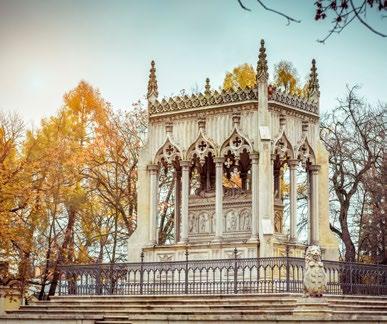

‘Gritty’ and ‘boho’ are just two of the terms tossed around to describe Praga, Warsaw’s east riverside district
Once disregarded due to its criminal underclass and imposing tower blocks, today an urban revival makes Praga worth visiting – especially for those looking to get off the tourist trail and see more of the city’s artsy side. The current standard-bearer for cool, folks here prefer their fun improvised and their bars dark. Filled with murals and hip hangouts, you can easily spend a day checking out the vibes of this alternative district across from the Old Town.
The easiest way to get to Praga is to take the M2 Metro to ‘Dworzec Wileński’ (eastbound to ‘Trocka’), and you’ll be in the heart of the district. From Warszawa Centralna the 160 bus will take you across the river to the ‘Park Praski’ stop. If you’re in the Old Town simply walk down the steps near the Royal Castle to Al. Solidarności and the ‘Stare Miasto’ stop, taking trams 4, 13, 20, 23 and 26 to ‘Park Praski.’
Located in the oldest surviving residential buildings on Warsaw’s right bank, this modern museum boasts interactive exhibits that tell the story of Praga: its people, history, industry, bazaars and more. The cellars include the Residents’ Stories Archive and two pre-war Jewish prayer rooms with original wall paintings, and there’s even an observation terrace. This is not one of the most well-known museums in Warsaw, but is certainly one of the most interesting. Well worth a visit.
Visiting time: 1.5-2hrs.QJ‑3, ul. Targowa 50/52, MDworzec Wileński, tel. (+48) 22 518 34 30, www.muzeumpragi.pl. Open 09:00 17:00; Thu 11:00 20:00; Sat, Sun 10:00 18:00; closed Mon. Admission 20/15zł, permanent exhibit only 15/10zł, temporary exhibits 10/8zł; Thu free. U
2 ul. Ząbkowska
Nowhere is Praga’s revival better illustrated and its artistic vibe more felt than on Ząbkowska. Originally lined with timber frame houses, a fire in 1868 led to their replacement with tall tenements, all but one surviving WWII. Post-war neglect hit the street so hard that wholesale demolition was seriously considered, but somehow it endured and today many of the buildings have been restored and filled with lively galleries and bars. You’ll know you’ve arrived at Praga’s high street when you discover the explosion of murals and street art near ul. Targowa. Don't forget to take photos!QJ‑3, ul. Ząbkowska, MDworzec Wileński.
Locals will tell you that the best part of Praga isn’t the sightseeing, but the nightlife. The area’s main attraction is a vodka museum after all. You’ll find plenty of restaurants, cafes and bars in and around Centrum Praskie Koneser, along ul. Ząbkowska and ul. Okrzei. Here are some of the best hangouts in Praga:
3/4 Koneser Bar: Head straight to this bar hidden on the 3rd floor of the Polish Vodka Museum to try their delicious alcohol infusions and cocktails, and enjoy beautiful views.Qp.106
Setki Powodów: There are 100 reasons why you should swing by, but one of the main ones is its tantalising food menu (international cuisine) and a kicking live music roster!Qp.97
The Barista & Fine Things: This new addition to ul. Francuska offers up incredible specialty coffee (to have or buy in bags), drinks, artisan sandwiches, and a colorful interior that's both fun and sophisticated. Qul. Francuska 26.
Once the Koneser Vodka Factory (1897-2007), this large industrial site lay mostly derelict before getting a major revamp in recent years and becoming Centrum Praskie Koneser. Interesting from an architecture and urban renewal standpoint, the complex includes the Polish Vodka Museum, the Museum of Fantastic Art, art galleries and dozens of restaurants, cafes, bars and shops! In the summer, this is the place to spend a day wandering outside, checking out the gorgeous architecture. QK‑2, Plac Konesera 2, MDworzec Wileński, www.koneser.eu TUE6
Set inside a former vodka factory, this multimedia museum is visited with a live tour guide or audio guide. The experience takes you from the origins of vodka to modern production, showing you plenty of paraphernalia and treating you to a tasting of this strong spirit. This is a must for anyone interested in the history of Poland's national drink (and for anyone who wants to try a sip). Entries are timed so book in advance Visiting time: 1.5hrs.QK‑2, Pl. Konesera 1 (Centrum Praskie Koneser), MDworzec Wileński, tel. (+48) 22 419 31 50, www.muzeumpolskiejwodki.pl Open 12:00 20:00; Fri, Sat 12:00 21:00; closed Mon. 70zł.
Praga is known for many things but locals know that one of its best attributes is its thrifting culture. The neighborhood is a hotbed of thrift stores, charity shops, and second-hand stores. Here’s our suggested starting route. Get off at the Kijowska tram stop, begin on the south end of Ul. Targowa and work your way north!
Jeila Ciucholand: With two stories and tons of men’s and women’s clothing, this is the perfect starting point. Find staple shirts, skirts, etc for around 10-20 Zł. Plus, some cool home items upstairs!QK-4, ul. Targowa 20B.
Z 2 Ręki: Though this mostly has women's clothes it's well worth it: items are chic, modern and totally discredit the stereotype of thrifted clothing as "frumpy." Plus, thrift store prices make this spot a mustQJ-4, Targowa 59.
Kopalnia: There’s more to visit on Targowa, but let’s jump off for a bit and go to Kopalnia - this store is clothing, but also furniture, books, art, ceramics and so much more. It’s a little more expensive but so well-curated and the items are so nice that a visit is a must (say hi to the owner’s pet turtle while you’re there!).QK-2, ul. Białostocka 9.
Opened in 1928, Warsaw Zoo covers an area of 40 hectares and attracts some 500,000 visitors each year. In total there are 13,000 animals here, across 500 species. Conditions have improved dramatically in recent years, though a visit here will do little to change any opinions you have on locking animals in cages. It was bombed at the beginning of the conflict and by 1945 all the animals had either been killed, deported to the Third Reich, eaten by locals or escaped into the wild. Zoo director, Jan Żabiński, became something of a hero; wounded during the 1944 Warsaw Uprising, he helped save countless lives by sheltering Jewish orphans inside the grounds of the zoo. A truly good experience - from both a historic and a sightseeing perspective.QH‑3, ul. Ratuszowa 1/3, MDworzec Wileński, tel. (+48) 22 619 40 41, www.zoo.waw.pl. Open October 9:00 17:00; November 9:00 16:00. Admission 25/20 zł.
A popular beach with both football and volleyball courts, beach chairs and more in the summer. But this spot is not summer-only. In fact, meander down
here in February or March to find some great views of the center of the city, or peel off onto one of the paths that branches out from this beach for a nice long walk along the riverside. This is a lovely spot to explore, ride your bike and be amongst nature.QL‑8, ul. Kryniczna. MStadion Narodowy.
One of the most desirable districts of Warsaw; with property prices staunchly high, the neighbourhood is home to the nouveau riche, the intelligentsia and much of the capital’s art community. Now in the shadow of the National Stadium, the sporting complex plays a major role in bringing visitors to the focal point of the area: ul. Francuska, which hosts trendy bars, cafes, restaurants and mix of boutique and old-school shops - Saska Kępa is as close as Warsaw gets to the ‘Little Village’ areas of London or Paris or Greenwich Village in NYC. As such, it’s a great place to wander around, people watch, take in cafe culture on Francuska, or marvel at the architecture, including majestic 19th century manor houses, superb examples of 1920s and ‘30s modernism, and moreQL‑6/7/8, ul. Francuska, MDworzec Wileński.
Skaryszewski Park is one of the most beautiful in Warsaw - you’ll find a pleasant 55 hectare site filled with wide alleys originally designed for horse-drawn carriages, man-made hills, waterfalls, lakes and landscaped flowerbeds. It’s perfectly acceptable to sprawl out on the grass wherever you like here and have a picnic in the sun. Or, in the winter months, stroll with a coffee or hot chocolate in hand and watch the birds at the pond. This place is always full of activity and relaxation -- the perfect park for new visitors to Warsaw!QL‑5/6, Al. Zieleniecka, MStadion Narodowy.
Opened January, 2012, PGE Narodowy can hold 58,000 fans. The construction was built using hundreds of 45m pillars driven into the ground to stabilise the 25m of war rubble the stadium sits atop Priced at 1.2 billion PLN, history buffs will note the Socialist era ‘Relay’ statue at the entrance has been preserved in a nod to the site’s heritage – it was here that Stadion Dziesięciolecia (10th Anniversary Stadium) stood, built in the 1950s to mark the anniversary of the end of WWII. Today, this is an exceptional place to watch football or mega-concerts. All tour info on their website. Most tours range 37-43zł Q K‑6, Al. Księcia J. Poniatowskiego 1, M Stadion Narodowy, tel. (+48) 22 295 95 95, www.pgenarodowy.pl
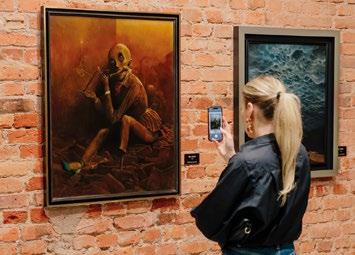



Krakow’s Market Square is worth a visit for its incredible architecture and top-notchin dining
Warsaw is jam-packed with things to do (see, well, all the previous pages in this guide). But sometimes you want a change of scenery. One amazing thing about Warsaw is its access to other areas — being the capital, it’s a kind of hub for travel to major Polish cities and towns. So when you have a day to spare, head on over to Warszawa Centralna and hop on a train! Here are our essential day trips.
First, we recommend going to Kraków. The charming medieval city is like something out of a storybook, with a gorgeous medieval market square that’s lined with restaurants and cafes, a magical castle on a hill (and a fire-breathing dragon!), and architecture that will have you stopping every two seconds to take another picture. Plus, this was the only major city not bombed to rubble during WWII, so much of this architecture is original and old
If you plan to make Kraków a day trip, it's important to know what to see. We have a Poland In Your Pocket guide to Kraków that we highly recommend checking out. But in brief, we'd say visit Wawel Castle (and the dragon we mentioned), head to the rynek for a bite or a drink, and go down to Kazimierz for some excellent Jewish history, good food and a zapienkana (or two or three).
Clearly, there's tons to see in Kraków but one of the best for a day trip, is the Wieliczka Salt Mine —and we really do mean a day trip. Set aside a whole day for this one. There are multiple tours through these incredible, cavernous mines, and along the way you can see mining tools, saline lakes, magestic

chambers and more. This is a once-in-a-lifetime kind of experience. We recommend doing the easiest and most popular way to visit: via the traditional 'Tourist Route.' The Wieliczka Salt Mine Tourist Route takes you through 3.5km of the underground mine over the first 3 of its 9 levels, reaching a maximum depth of 135 metres below ground. The whole tour takes about 2 to 3 hours and you'll see a sailine lake, a chapel and more! Watch out because there's a lot of walking and over 800 stairs. But if you choose to embark on this adventure (dress with smart shoes and warm clothing!) you'll probably be delighted to find an underground restaurant and tons of incredible sights!
How to get there: From Warsaw’s Centralna Station, buy a ticket from PKP Intercity (on their website, intercity.pl or at a ticket window) to Kraków Główny
Train times range from a little over 2 hours to nearly 4 hours depending on the time you go and whether you choose a high-speed train. Prices range: 88 to 260zł per ticket.
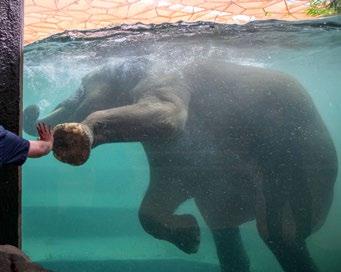
Next, we highly recommend a visit to Łódź — just one hour away by train! This post-industrial city is simply booming, with a lovely main street (ul. Piotrkowska) that’s packed with bars, restaurants, and shops. Plus, there are tons of museums, incredible parks, monuments and events all the time - from live music, to arts shows, food festivals and more. Moreover, Łódź is just overflowing with history and culture.
In addition to just wandering the streets, we recommend a trip to Orientarium Zoo, a massive (and massively popular) zoo with tons of animals from Southeast Asia (35 land species and 180 acquatic species) across three levels. Here, you can
see elephants, orangutans, sun bears, macaques, and more in the land section. In the water section, prepare to see sharks, rays, and a gharial crocodile named Kraken. You can participate in daily feedings and you can even do an overnight stay in a shark tunnel! There are also VIP evenings, and workshops. An absolute must.
Another key spot in Łódź is Aquapark Fala — honestly the best waterpark/spa center in the entire country and one of the largest! With 19 water slides (including some incredibly steep ones) and pools for swimming, it’s great for thrill-seekers and kids. But it’s also great for relaxing.
In fact, its wellness center is simply incredible. They offer a Sauna Zone with Finnish and infrared saunas and steam rooms, as well as a tepidarium (a room that lets you relax on a heated bed in silence). There's also a snow cave where you can sit in a cold, snowy room and immediately cool your body down for great health benefits. Also, a salt graduation tower where you can sit in a salt-infused room and reap the health benefits of iodine exposure.
After all that, you can take a shower with all kinds of scrubs and conditioners offered for purchase, and you can even choose the theme of your shower room (rainforest, storm, etc). The experience will calm and rejuvinate you to your core.
How to get there: Head to Warszawa Centralna and, using PKP Intercity (website or ticket window), get a ticket to Łódź Fabryczna. The ride times are usually a little over an hour, and the cost hovers around the 50 zł range.
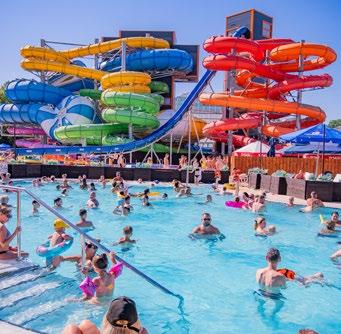
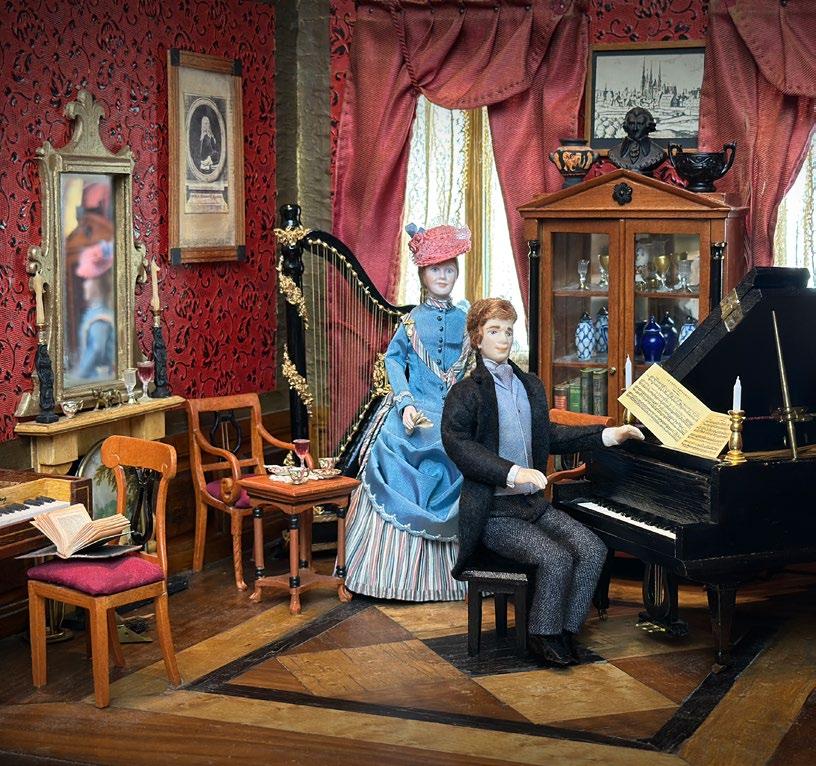
Warsaw’s combination of these three is what makes it so exciting. Whether you’re an art lover, amateur historian, or tracing your roots, Warsaw’s heady brew of imperial grandeur, prewar glamour, 20th century tragedy, socialist austerity and present-day dynamism makes it unique in Europe and offers much to the visitor. Use this chapter of the guide to discover the capital’s art spaces and current exhibitions, find out about museums ranging from niche to national, and learn about sites related to some of the most important events in Warsaw’s modern history.
Warsaw is the centre of Poland’s contemporary art scene and home to countless pieces of priceless art. While Kraków’s collections skew more historical, Warsaw boasts a great variety of exhibits showcasing younger artists as well as the nation’s masters. When it comes to art tourism, temporary exhibits are often as or more important than permanent collections, so check the current exhibitions on p.72.
Located in a beautifully-restored palace, this museum uses incredible interactive multimedia displays to illustrate the life of Poland’s most famous composer, without any details missing! QSee p.54
An incredible museum with some of the best art in the country! Polish painters, international painters and even Ancient Greek and Egyptian Artefacts!QSee p.77.
A spectacle of light, color, and sound, this museum is a must-visit that uses modern technology to take visitors on a journey that awakens the senses. QSee p.75.
What about art in public spaces? Poland has a long, lauded tradition of graphic art, with Polish print advertising and poster design known internationally for their high artistic quality. With such a knack for graphics, it stands to reason that Poles would have a penchant for street art as well. And they do. In Warsaw both graffiti art and large-scale murals are a common sight, with the city and private businesses even inviting international artists to do installations. You’ll find a particularly high volume of murals on buildings in Praga, Wola and around the City Centre, where the urban landscape is changing most rapidly. Although it’s a dynamic situation, as many murals are installed on buildings that later become designated for demolition, at WIYP we keep a close eye on murals and urban art, marking major works on all of our maps; just look for the spray can icon . Not only that, but we’ve meticulously put it all online with exact GPS coordinates, so that your smartphone can do the work of leading you directly to Warsaw’s alternative artistic visions.
The history of Warsaw is fantastically told in this revamped museum based in eleven historic tenement houses. An Old Town must-see for everyone.QSee p.45
One thousand years of Polish Jewish history is chronicled in this incredibly impressive, popular museum. One of the top spots in the city.QSee p.79.
With tons of dolls and toys from around the world and the last century, this museum delights and fascinates -- all with a healthy dose of nostalgia and whimsy.QSee p.75.

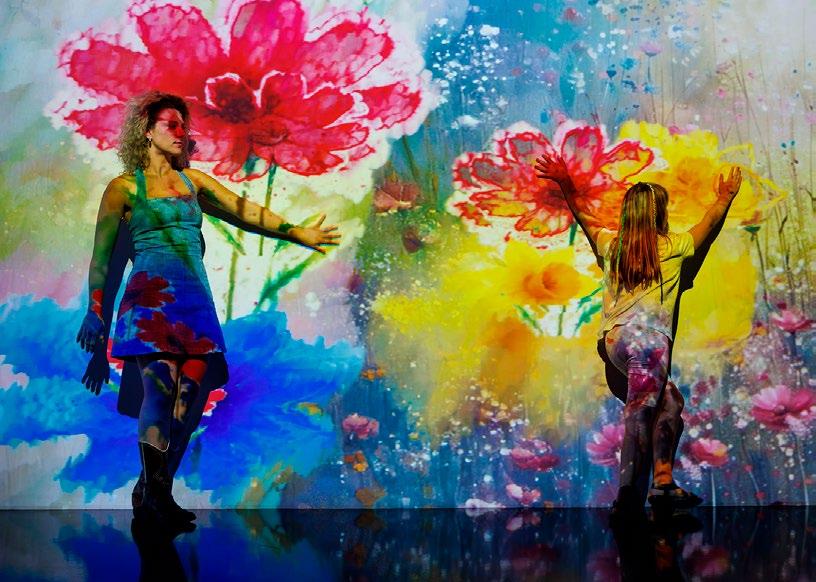
Box Experience is awash in light, color, music and more with its newest immersive exhibition on the life
It’s not uncommon for some temporary exhibits to be major events, even overshadowing the permanent collections of local museums. Of the literal hundreds of art events across Warsaw, here are a few picks for the coming months. For more, as well as other events in the capital, head to our website.
The highly popular melt museum has introduced a new permanent exhibit that highlights the connection between art and technology, specifically AI. The creators of the exhibition call it a “technoutopia meets cyberpunk vision of the future.” The exhibit, Artificial Dreams takes visitors to unknown realms of the relationship between humans and artificial intelligence through an interactive, highly immersive experience that blends art, light, color, technology and sound to awaken your senses.
You’ll see gorgeous projections, stunning (and sometimes mind-bending) lighting effects, interactive installations and much more. Make sure to book your tickets in advance online because this one sells out fast! QG‑7, melt museum, Plac Powstańców 2A, MŚwiętokrzyska, tel. (+48) 534 125 556, 39 59zł, www.meltmuseum.com/en/exhibitions/
See beloved Polish composer Fryderyk Chopin from a totally new perspective! This special temporary exhibition at the Dollhouse, Games and Toys Museum in Warsaw, displays award-winning art doll portraits created by contemporary artists from around the country. In each one, the artist was able to imagine Chopin in the way they wanted to, blending tradition with modern creativity. For viewers of the exhibit, that means you can see the composer through new artistic eyes, garnering not just an understanding of who Chopin was, but how he is remembered by contemporary artists. A mustsee for culture lovers!QF‑4, Museum of Dollhouses, Games and Toys, ul. Podwale 15 (entrance in courtyard), MRatusz Arsenał, tel. (+48) 797 72 30 29, 42/30 zł, family ticket 120 zł, www.muzeumdomkow.pl/chopin
19.09 - 31.12 » Hotel Dracula
Hotel Dracula, the VR technology experience, is coming to Art Box Metaverse, bringing all kinds of spooky haunted house vibes in a virtual reality that’s both immersive and fun. The show allows viewers to experience a scary story from the main characters’ perspectives. In a 330-meter space, up to 25 participants at a time can meander through Dracula’s Hotel and discover hidden secrets behind its doors. Encounter Dracula, Frankenstein, the Yeti and many other creepy, spooky creatures.QD‑8, Art Box Metaverse, ul. Żelazna 51/53 (Fabryka Norblina), tel. (+48) 571 030 480, 55 75zł, www.artboxmetaverse.com.
19.09 - 31.01 » Romantic Chopin—
An Immersive Exhibition
Chopin is celebrated in this exhibition which combines modern techonology with classical music. The exhibit takes visitors through 8 themed spaces, starting with his childhood in Żelazowa Wola, through his time in Warsaw, his life in Vienna and Paris, and more. You'll learn about the world he was surrounded by, and his contemporaries. The main part is a 30-minute, immersive show based on his letters and compositions. QMonday to Friday, 9am 3pm ALL tickets for PLN 40. After 15:00 65/55 zł, www.artboxexperience.com.
17.04 - 31.12 » Testimonies from the Warsaw Ghetto
Opened last year, this exhibit looks at Warsaw through the period of German occupation in the 1940s, presenting viewers with daily life in the ghetto from various perspectives including soldiers and resistance members, women and men, amateurs and professionals. The exhibition includes objects recovered during archaeological digs, making it a truly fascinating journey. Q25/18zł, www.muzeumwarszawy.pl
18.06 - 21.12 » The Summer That Changed Everything. Festival 1955.
This exhibit tells the story of a pivotal 1955 festival called which lasted from July 31 to August 15 and attracted nearly 170 thousand people to Warsaw. The initial goal of the festival was to show the superiority of socialism over capitalism. However, it became a carnival of multiculturalism, anticipating political and social changes and, above all, a generational experience.QF‑4, Museum of Warsaw, Rynek Starego Miasta 28 42, tel. (+48) 22 277 44 02, 20/15zł, Thursday 1zł, www.muzeumwarszawy.pl. Closed Mon.
24.10 - 31.10 » Splat! Film Fest
With tens of excellent horror movies, shown over the course of one week at Kinoteka, this beloved film festival is the perfect way to drum up that spooky

season/Halloween vibe. Viewers are presented with multiple films every day, all under the umbrella of “unsettling.” Some films are classic slasher horror, others are science fiction, some veer more into the magical realism territory, while others are thrillers. It's all here! See their website for the lineup and ticket prices. QF‑8, Kinoteka, PKiN, Pl. Defilad 1, MCentrum, tel. (+48) 22 551 70 70, www.splatfilmfest.com
01.01 - 30.12 » Teatr Sabat
Warsaw has a venue that rivals those in the cities most famous for their theater! Teatr Sabat, the only variety theater in Poland was created on the model of Warsaw musical theaters with cabaret, musicals, and more. Incredibly talented performances from singers, Polish actors and ballet companies all take center stage here. Plus, the classic auditorium concept (a la movie theaters) is gone here -- instead you have elegant tables and chances to grab a drink while you watch the show. All created by Małgorzata Potocka, a successful dancer, choreographer and director who has specialized in promoting Polish culture around the world!Qul. Foksal 16, MNowy Świat Uniwersytet, tel. +48 (22) 826 23 55, www. teatr sabat.pl/en/contact. Open Mon 11:00 16:00*; Tue, Wed 10:00 16:00; Thu, Fri 12:00 20:00; Sat 13:00 20:00; closed Sun. ticket office opening hours.

Warsaw boasts some superior museums, ranging from world-class attractions full of multimedia displays, to small institutions covering niche historical events. It’s more than we have space to cover here, but you’ll find them all listed and up-todate on our website. In this guide, some of the city’s most important museums are listed within the district tours of Sightseeing section, while the rest of the best are here. Descriptions focus on each museum’s permanent collection; for current temporary exhibits, see p.72
Become a chocolate aficionado at the E.Wedel Chocolate Factory Museum in Warsaw. Discover the secrets of chocolate production and delicacies through a thematic exhibition, interactive displays and workshops for adults and children alike. There are also classes that combine learning and fun for organized groups of children and teenagers. The main exhibition at the museum covers three levels and is divided into a few thematic spaces -- the Ghanaian Space, The Chocolatier’s space, the Confectioner’s space, and the Designer’s Space. If you decide to visit the interactive exhibition, get ready for a whole host of exciting opportunities, including a chance to taste liquid chocolate and roasted cocoa beans, the ability to start the chocolate-making machine and touch the exhibits, and more.QL‑4, aleja Emila Wedla 5, MStadion Narodowy, www. fabrykaczekolady.pl. Open 10:00 20:00. 70/55zł.
Born in Warsaw in 1867, local lass Maria Skłodowska would become better known to the world as Madame Marie Curie. Located in the renovated building she was born in, this charming museum pays homage to the life and work of the two-time Nobel Prize-winning physicist and chemist, whose many accomplishments include the discovery of the chemical element polonium (named after the country of her birth). Comprising five rooms, visitors will learn about her family and early life, see a recreation of her Parisian laboratory, plus many personal effects, including her private letters and scientific instruments. Visiting time: 1hr.QF‑3, ul. Freta 16, MRatusz Arsenał, tel. (+48) 22 831 80 92, www.mmsc.waw.pl. Open 12:00 18:00; Sun, Sat 11:00–18:00; closed Mon. Last admission to the exhibition is 30 minutes before closing time. The ticket office is open until 5:30 p.m. Admission 15/10zł, Tue free. U
Melt museum offers a fully sensory experience involving lights, color, interactive exhibits, robot dogs, and so so so much more! The museum takes an audiovisual approach to creativity, using a blend of art and ultra-modern technology to offer vibrant imagery and sounds that are meant to awaken all of your senses. Step inside a mind-bending world of light, color, touch and sound that really highlights what technology can do and how it can affect our perception of our world. Prices range from 39zł to 56zł.Visiting time: 45-60mins. QG‑7, Plac Powstańców 2A, MŚwiętokrzyska, tel. (+48) 534 125 556, www. meltmuseum.com. Open 12:00 21:00. Prices are available after clicking on the selected exhibition. Please book your places online in advance.
A small, charming museum fittingly located right in Warsaw’s Old Town. Showcasing over 150 highlydetailed historical dollhouses, plus various other minature settings, the museum has four permanent exhibitions on display at its headquarters at 15 Podwale Street; “In the World of Old Dolls’ Houses,” “Sacred Toys,” “Dolls of the World,” and “Games and Polish Toys of the 20th Century.” Visiting time: 4560mins.QF‑4, ul. Podwale 15 (entrance in courtyard), MRatusz Arsenał, tel. (+48) 797 72 30 29, www. muzeumdomkow.pl. Open 09:00 19:00. Tickets 42/30zł; kids under 1m tall, free. U
Residing within the grounds of Plac Koneser in Warsaw’s Praga district, the Museum of Fantastic Art has regularly changing exhibitions which have included the works of such popular artists as Zdzisław Beksiński, Jerzy Duda-Gracz, and Wiesław Wałkuski. This unique art space celebrates the successive generation of Polish fantastic artists. Most of the works of art on display have never been presented to the public before, which is yet another reason why this exhibition a must-visit for art lovers in Warsaw! Average visiting time: 40-60 min. QK‑3, ul. Ząbkowska 31 (Centrum Praskie Koneser), MDworzec Wileński, tel. (+48) 798 82 27 65, www. muzeumsztukifantastycznej.pl. Open 11:00 19:00. Admission 40/30zł. U
If Warsaw’s communist history isn’t vivid enough for you on a walk around the capital, immerse yourself in PRL (Polish People’s Republic) vibes at this private museum. Showing what everyday life was like for locals during the years of Poland’s communist


rule, the nostalgic exhibits include a recreation of a typical PRL-era apartment, plus plenty of photos, artefacts and relics that demonstrate the difficulty and absurdity of those times. Bittersweet for older Poles and eye-opening for foreigners. Visiting time: 1hr.QG‑10, ul. Piękna 28/34 (corner of Plac Konstytucji and ul. Piękna), MPolitechnika, tel. (+48) 511 04 48 08, www.mzprl.pl. Open 10:00 18:00; Fri 12:00 20:00. Admission 30/20zł. Audioguides free (after getting an app on https://mzprl.pl/audioguide free of charge/?lang=en ) in EN, FR, IT & ESP.
Inside the boxy white building, you’ll find twisting, geometric stairs (reminiscent of Escher pieces) and large, white gallery spaces. In addition to art from a number of renowned artists around the world, the museum will be home to a cinema, workshops and talks, and much more. Taking up four storeys and 20,000 m2 (including over 4,000 m2 of gallery area), the museum features exhibition spaces, educational areas for lectures and workshops, conservation and restoration workshops, a cinema, an auditorium, a café, and a museum shop. Excellent temporary exhibits all year including upcoming exhibits on women artists, on the modern world and more! Visiting time: 90minQF‑7/8, ul. Marszałkowska 103, MCentrum, tel. (+48) 22 596 40 10, www.artmuseum. pl/en. Open 12:00 20:00; closed Mon. 30/20zł.
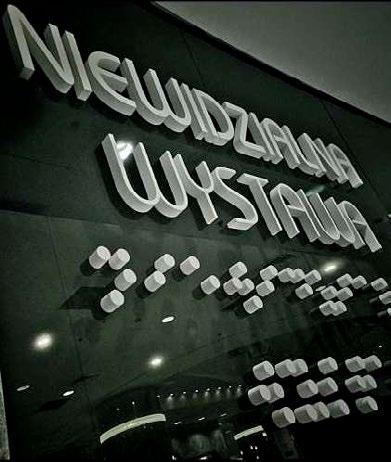
Tragically overlooked by most visitors to Warsaw, this joy of a museum showcases all that’s best about Poland’s cultural heritage - colourful folk costumes, customs and traditions, tools and instruments, outsider art, handicrafts and more - all of it beautifully presented in a superb historical building. Interestingly, there’s also a ‘Korean Gallery’ with a traditional Korean ‘hanok’. One of the city’s most active cultural institutions, they host many events and worskhops, and you can expect multiple temporary exhibits at a time, including the current exhibition, Childhood (p.72) which examines the experiences of children over the last 100 years. Visiting time: 2-3hrs.QF‑6, ul. Kredytowa 1, MNowy Świat Uniwersytet, tel. (+48) 22 827 76 41, www.ethnomuseum.pl. Open 10:00 18:00; Sat, Sun 11:00 18:00; closed Mon. Tickets 19/10zł, Thu free (Including the Museum for Children). U
In this reconstructed interior of an interwar pharmacy, find glass vials and beakers, wooden furnishings, period advertisements and vintage pharmaceutical equipment. learn Stories of medicines, poisons, and narcotics, as well as Japanese Kampo medicine, and learn about one of the world’s first female pharmacists – Antonina Leśniewska. A nice but wonderful space, the
A unique experience where seeing impaired guides lead you into their sightless world. On the tour you’ll understand the challenges blind people face daily as you try to write with a Braille typewriter, use kitchen gadgets designed for the sightless, and solve simple puzzles while blindfolded. Next, enter a series of pitch-black rooms that force you to rely on your other senses. You’ll feel the contours of a sculpture to discern what kind of art it is, listen for cars before crossing the street, and the guide will even serve you a drink in the completely dark bar (bring some cash). Truly a fascinating experience. To visit, book online in advance. Tours in English can be arranged, but you must first email them via info@niewidzialna.pl with ‘TOUR IN ENGLISH’ as the subject line. Visiting time: 1hr.
QC‑9, Al. Jerozolimskie 123A (Atlas Tower), MRondo Daszyńskiego, www.niewidzialna.pl.
Open 10:00 20:00. Admission 45/40zł; Sat, Sun 50/45zł. N
museum also offers workshops on the healing properties of plants, and gives visitors a chance to make their own scented waters from essential oils! Visiting time: 45mins.QF‑4, ul. Piwna 31/33, MRatusz Arsenał, tel. (+48) 22 831 71 79. Open 10:00 18:00; closed Mon, Sun. Last admissino is 30 minutes before closing. Admission 12/8zł. Thu free. U6
Museum
A captivating journey through the more than 500-year history of Poland’s national drink. With the world’s largest collection of over 10,000 exhibits, visitors delve into vodka’s origins, production processes, and more. Independently founded by the owners of the renowned Elixir by Dom Wódki (p.89), the museum seeks to shift the perception of Polish vodka from mere party indulgence to a finely-sipped and respected spirit. A vodka tasting session is available from 35zł all the way up to 199zł for their VIP Package! Prior reservation is essential.QF‑5, ul. Wierzbowa 11 (entrance from ul. Canaletta), MRatusz Arsenał, tel. (+48) 888 600 805, www.muzeumwodki.pl
Open 13:00 19:00; Fri, Sat 13:00 20:00; Sun 13:00 19:00; closed Mon. Last entrance 60 minutes before closing. Admission 30zł. X
Warsaw National Museum
Located inside a huge and decidedly bizarre interwar building, this is Warsaw’s most comprehensive art museum, leading you from the ancient world through the middle ages up to the 19th century. Along the way you’ll see the some of the country’s most priceless works, including 15th century Dutch masters and Botticelli, plus Polish masters like Chełmoński, Matejko and Wyspiański. Visiting time: 3hrs.QH‑8, Al. Jerozolimskie 3, MNowy Świat Uniwersytet, tel. (+48) 22 621 10 31, www.mnw.art. pl. Open 10:00 18:00; Fri 10:00 20:00; closed Mon. Admission 30/15zł for permanent exhibits; kids and students up to 26; 1zł; Tue free. U
One of the leading galleries in Poland, with a focus on the contemporary. In a beautiful Renaissancestyle palace in the centre of Warsaw, just across from the Saxon Garden, the setting itself is worth a visit. What makes Zachęta more of a gallery than museum is that there is no core permenant exhibition on display, but rather top-notch temporary exhibits showcasing the best in Polish and international contemporary art. Visiting time 60-90mins.QF‑6, Pl. Małachowskiego 3, MNowy Świat Uniwersytet, tel. (+48) 22 556 96 00, www.zacheta.art.pl. Open 12:00 20:00; closed Mon. last entry 19:30. Admission 30/20zł, family ticket 40zł, students 5zł. Thu free. U6

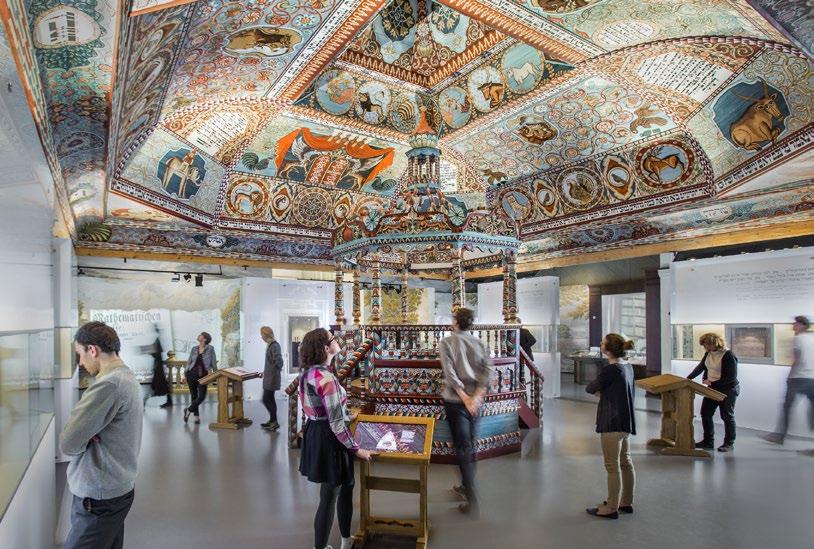
When Nazi Germany invaded Poland in September 1939, Warsaw’s thriving Jewish population numbered approximately 350,000 - only New York City could boast a larger community.
Although anti-Semitism was by no means rare, Poland had been seen as a relative safe haven, and it attracted Jewish settlers forced into flight by more discriminatory regimes elsewhere. By the inter-war years, the Jewish population had made significant contributions to the social, political and cultural fabric of Poland.
As we know, Nazi occupation meant the complete dehumanisation and systematic destruction of Poland’s Jews, who were first forced into ghettos, where they faced violence, starvation and disease, and then deported to Nazi death camps where they were executed. The Warsaw Ghetto was the largest of WWII and occupied much of the City Centre, as you can see by its outline on the maps in this guide. At its height it imprisoned 460,000 Jews in an area of 3.4km2. After more than 254,000 Varsovian Jews were sent to their deaths at Treblinka in the summer of 1942, those remaining began building bunkers and smuggling weapons into the Ghetto in preparation for what would be the war’s largest act of Jewish resistance. Beginning on April 19, 1943, Jewish fighting units engaged German troops in guerilla
warfare within the walls of the Ghetto in a final, doomed act of bravery, defiance and protest against the world’s silence and inaction. When the Warsaw Ghetto Uprising ended 27 days later with the German command’s symbolic detonation of the Great Synagogue, 13,000 Jews had been killed, almost half of them perishing from the fire and smoke as the Nazis burned the Ghetto to the ground, building by building. Of the remaining 50,000 Jews, almost all of them were captured and perished at the Majdanek or Treblinka Nazi death camps.
Following WWII, much of Warsaw’s surviving Jewish population chose to emigrate to the U.S., the British mandate of Palestine (taking an active part in the creation of Israel) and elsewhere. Today Warsaw’s Jewish community is estimated at only about 2,000, but the city’s Jewish heritage remains an essential part of its identity, honoured today by innumerable monuments, memorials, museums and events, foremost among them the POLIN Museum, presenting the history of Polish Jews, and the annual Singer’s Warsaw Festival For a full list of Jewish tourism sites in Warsaw, visit our website
Anielewicz Bunker
Only 350m from POLIN, this small mound and memorial marks the site of the large bunker from which the Warsaw Ghetto Uprising was lead by the Jewish Combat Organisation (ŻOB). Located beneath the tenement at the wartime address of ul. Miła 18 (today Miła 2), the bunker was discovered and surrounded by the Nazis on May 8, 1943, with about 300 people hiding inside. Given the chance to surrender, half of the occupants - mostly civilians - gave themselves up, but the ŻOB insurrectionists chose to stay and fight. When the Nazis used gas to force them out, many of the ŻOB fighters chose suicide. 120 fighters died, including ŻOB commander Mordechai Anielewicz and his girlfriend Mira Fuchrer; only about 15 survived (many of whom perished later). The bodies of the dead were never exhumed and covered over with rubble from the surrounding tenements to make this mound after the war. Today two monuments can be found on/near the memorial with inscriptions commemorating their sacrifice.
QD‑3, ul. Miła 2, MDworzec Gdański.
Jewish Historical Institute
This amazing historical building that stood next to Warsaw’s Great Synagogue houses the Oneg Shabbat Archive, also known as the Ringelblum Archive - a secretly kept collection of documents, reports, essays, letters and other materials recording exactly what life was like in the Warsaw Ghetto, by those who were experiencing it, as it happened. As the Ghetto came under siege in 1943, the vast archive was secretly buried in three containers in three separate locations. Sadly, only the first two have been recovered, but they represent such extraordinary witness testimony that they were inscribed on UNESCO’s Memory of the World List
In the permanent exhibit you will see the original documents of the archive, the authentic containers and more. If you don’t have the time for POLIN, this is a great alternative. There are also temporary exhibits and an excellent bookshop. Visiting time: 90mins.
QE‑5, ul. Tłomackie 3/5, MRatusz Arsenał, tel. (+48) 22 827 92 21, www.jhi.pl. Open 10:00 18:00; Fri 10:00 16:00; closed Sat. Last entrance 1h before closing. Admission 15/10zł. Mon free. Guided tour of permanent exhibit (Tue Fri): 40 zł.
A beautiful and poignant place to visit, this is Warsaw’s only active Jewish cemetery. Established in 1806 beyond the city trenches (‘okopy,’ where today’s Okopowa Street runs), the cemetery houses some 200,000 tombs and is the final resting place of many generations of Varsovian Jews, including Ludwik Zamenhof, inventor of the international language Esperanto.QB‑5, ul. Okopowa 49/51, tel. (+48) 22 838 26 22, www.cemetery.jewish.org.pl. Open 10:00 17:00; Fri 10:00 15:00; closed Sat. Admission 20zł. N
One of the best museums in Poland, POLIN explains a millennium of Polish Jewish history and relations through multimedia displays that earned the 2016 European Museum of the Year award. Located within the former Warsaw Ghetto, the modern building itself is a stunning structure of copper and glass. Inside, each gallery addresses a different era in the history of the Jewish people in PL. Learn about kings, inventors, thinkers and industrialists; about Jewish holidays, customs, religion and culture. While the Holocaust is described in detail, the permanent exhibit is primarily a celebration of 1,000 years of Jewish life in PL. It takes the better part of a day to explore. One combined ticket gets you into permanent and temporary exhibits. The museum is also home to a cafe and an excellent restaurant serving traditional Jewish cuisine (kosher dishes available). In the middle of a green public square, outside, visitors will also see several monuments, including a massive memorial the heroes of the Warsaw Ghetto. Plan ahead because the last entrance to the core exhibit is 2 hours before closing time. Visiting time: 3hrs.QD‑4, ul. Anielewicza 6, MRatusz Arsenał, tel. (+48) 22 471 03 01, www.polin.pl. Open 10:00 18:00; Sat 10:00 20:00; closed Tue. Admission with audio guide 45/35zł, Thu free. TU

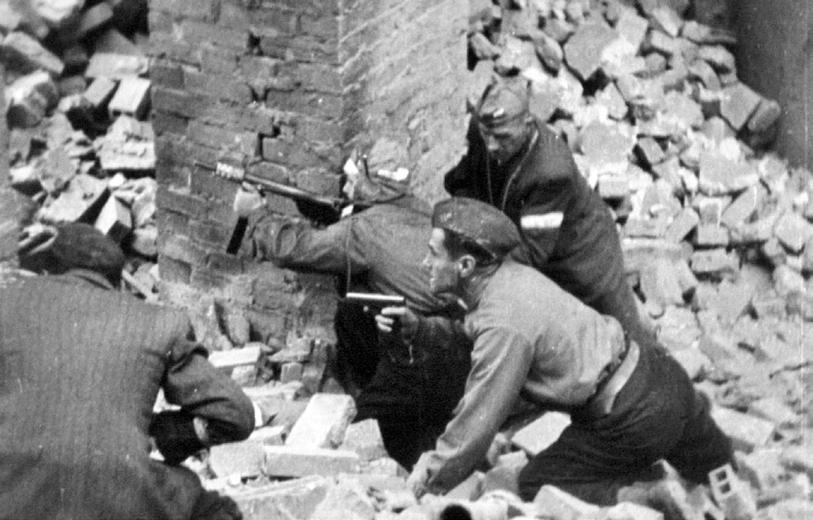
August 1, 1944 . Warsaw, subject to five years of fascist hegemony, rose up in rebellion in what would be the largest uprising in the German occupied territories.
With German morale in ribbons, a retreat from Warsaw in full swing, and the Red Army on the east bank of the Vistula, no time seemed better than the present. Following close contact with the Polish government-in-exile, and assurances of Allied aid, the Home Army (Poland’s wartime military movement a.k.a the ‘Armia Krajowa’ or AK) launched a military strike with the aim of liberating Warsaw and installing an independent government. What ensued was an epic 63-day struggle during which the Home Army faced the full wrath of Hitler’s forces.
On orders from General Tadeusz ‘Bor’ Komorowski, 17:00 signalled W-Hour (‘Wybuch’ standing for outbreak), the time when some 40,000 members of the Home Army would simultaneously attack key German positions. Warsaw at the time was held by a garrison of 15,000 Germans, though any numerical supremacy the Poles had was offset by a lack of weaponry. Nonetheless the Germans were caught off guard, and the Poles captured a string of strategic targets, including the Old Town, Prudential Tower and the post office. The first day cost the lives of 2,000 Poles, yet for the first time since occupation the Polish flag fluttered once more over the capital.
Within days German reinforcements poured in, and on August 5th and 6th Nazi troops rampaged through the western Wola district, massacring over 40,000 men, women and children in what would become one of the most savage episodes of the Uprising. It was to prove a mixed first week for the Poles. In liberated areas, cultural life thrived. Better still, the first allied airdrops hinted at the support of the west. As it turned out, this was just papering over the cracks. The Germans, under the command of Erich von dem Bach, replied with heavy artillery, aerial attacks, armoured trains and tanks.
Fantastically ill-equipped, the one thing on the insurgents' side was an almost suicidal fanaticism and belief. Casualties were almost 20 times as high as those inflicted on the Germans, yet the Poles carried on the fight with stoic self-assurance. Airdrops were vital if the uprising was to succeed, though hopes were scuppered with Stalin’s refusal to allow Allied planes landing rights in Soviet-held airports. Instead the RAF set up a new route running from the Italian town of Brindisi to Warsaw, though casualty rates proved high with over 16% of aircraft lost, and the drops often inaccurate. All hopes rested on the Russians.
After six weeks of inaction Red Army Marshal Rokossovsky finally gave the go-ahead for a Polish force under General Berling to cross the river. The operation was a debacle, with heavy casualties and no headway made. This single attempt at crossing the Wisla was enough; Warsaw was on its own. Already by this time the situation in Warsaw’s Old Town had become untenable, and a daring escape route was hatched through the sewers running under the city. The Germans were now free to focus on wiping out the remaining outposts of resistance, a task undertaken with glee. Abandoned by her allies the Poles were forced to capitulate, some 63 days after they had taken on the Reich.
Having deposited their weaponry, 11,668 Polish soldiers marched into German captivity. The battle had cost up to 200,000 civilian lives, while military casualties between Germans and Poles would add a further 40,000 to the figure. Remaining inhabitants were exiled (though around 2,000 are believed to have seen the liberation by hiding in the ruins), and the Germans set about obliterating what was left of the city. ‘No stone can remain standing,’ warned Himmler, and what happened next can only be described as the methodical and calculated murder of a city. Buildings of importance to Polish culture were dynamited by teams of engineers, while less historic areas were simply burned to the ground. Modern studies estimate the cost of damage at around $54bn. In human terms Poland lost much more. With the Uprising died a golden generation, the very foundation a new post-war Poland could build on.

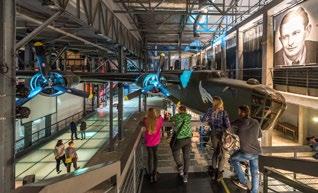
Opened in 2004, this remains one of Poland’s best museums. Packed with interactive, multimedia displays, period artefacts, photos, video footage and plenty of sounds effects, this museum is guaranteed to leave a mark on all visitors. Occupying a former tram power station, the 2,000m2 space is split over several levels, leading visitors through the chronological story of the 1944 Uprising - provided they don’t make any wrong turns; it’s a common mistake, and, as such, an audioguide (10zł) is handy. You can also get a guided tour in Polish (150zł) or in another language (200zł). Set aside several hours for the experience. Visitors start by learning about life under Nazi rule, with immersive displays including a clandestine radio station and covert printing press. The mezzanine level features a film detailing the first month of battle, including the opportunity to clamber through a mock sewer. There is also an exact replica of the B24 Allied planes used to make supply drops over the besieged city. The final sections are devoted to the creation of a Soviet puppet state, a hall of remembrance, and a particularly poignant display about the city’s destruction; take time to watch the black and white ‘before and after’ shots of important Warsaw landmarks being systematically obliterated by the Nazis.Near the exit check out the film City of Ruins, a silence-inducing 5min 3D aerial ‘film’ that uses old photos and new tech to recreate the desolation of ‘liberated’ Warsaw in March 1945. A viewing platform and ‘peace garden’ wrap up this experience. Expect 35zł or 40 zł for a group in Polish. Other language tours cost more. Book in advance on the web. Visiting time: 3hrs.QB‑7, ul. Grzybowska 79, MRondo Daszyńskiego, tel. (+48) 22 539 79 05, www.1944.pl. Open 8:00 18:00; Sat, Sun 10:00 18:00; closed Tue. Admission 35/30zł (kids under 7 free), Mon free. Audioguides in 8 languages 13zł/person. U
Hey, it doesn’t all have to be exhausting museums and knee-lifts as you explore Poland’s largest city. Check out the local activities below if you’re looking for fun alternatives to traditional sightseeing, ready to try something new, or simply want some rest and relaxation.
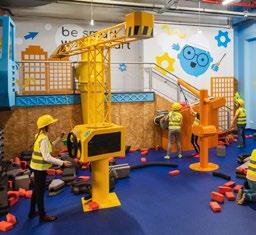
Smart Kids Planet is one of the best spots for kids and families in Poland! With 9 thematic zones and with over 50 engaging activities throughout, kids can play and learn as they do different tasks like building construction, shopping for food and fresh produce, learning about sports, and the magic of machinery and production lines, and much more! They'll develop cognitive function and cooperation skills all while having fun (plus there's a rest area for parents!)QD‑8, ul. Żelazna 51/53, MRondo ONZ, tel. (+48) 727 77 08 80, www.smartkidsplanet.pl. Open 9:00 20:00.
Stacja Grawitacja
Gravity getting you down? Get the bounce back in your step at this huge trampoline park that also features 3D virtual reality gaming by Hologate, a ropes course, obstacle course, basketball and volleyball courts and even a climbing wall with routes for all ages and abilities. Put on anti-slip socks and join the fun. Children ages 3-6 must be accompanied by adults; older kids can be let loose while their parents hang out at the well-stocked cafe.
Qal. Bohaterów Września 12, tel. (+48) 726 13 06 66, www. stacjagrawitacja.pl. Open 10:00 22:00; Sat, Sun 10:00 21:00.


A strict break from the stuffiness of the Old Town, this fun, colourful museum is exciting and educational for all ages. Enter the Matrix, a mirror room, a vortex, the room of shadows, and an upsidedown room - each and every one out-of-this world! Pefect for groups and pairs -- go discover the extent to which the mind can be tricked by the eye (don't forget to whip out your phone for pics!).QF‑4, Rynek Starego Miasta 21, MRatusz Arsenał, tel. (+48) 501 80 80 06, www.swiatiluzji.pl. Open 09:00 20:00; Sat, Sun 10:00 21:00. Admission 42/32zł.

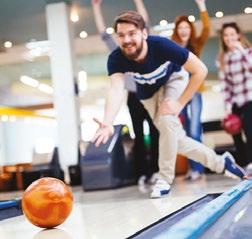
Found inside Galeria Młociny in the northern district of Bielany, this modern entertainment centre is just 2 mins away from the final stop of the M1. Once you’re there, you have the choice of 18 bowling lanes, 9 billiards tables, 4 shuffleboard tables, and 2 electronic dart boads, plus a kitchen that dishes out sandwiches, beer, snacks and more!Call in advance to reserve.Qul. Zgrupowania AK Kampinos 15 (Galeria Młociny, 2nd floor), MMłociny, tel. (+48) 600 80 05 56, www.mkbowling.pl/start warszawa. Open 12:00 22:00; Fri 12:00 24:00; Sat 10:00 24:00; Sun 10:00 22:00.
Using high-tech screens and playing with light and darkness, movement and stillness, the creative experts at Art Box present a number of highly immersive exhibitions through moving paintings and photographs projected across the walls of the 800 sqm space. And the space can be used for events, too! From corporate meetings, to birthdays and much more!QC‑7, ul. Żelazna 51/53 (Fabryka Norblina), tel. (+48) 571 03 04 80, www. artboxexperience.com/. Open 10:00 20:00; Fri 09:00 21:00; Sat 10:00 21:00. Weekdays 65/55zł; weekends 75/65zł.

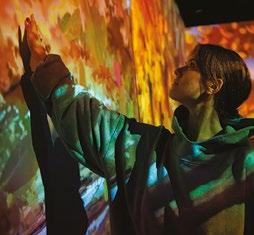
This is one for nostalgia and fun-lovers alike! This interactive museum of video games is like a time machine back to the 80s and 90s, with tons of classic video games available to everyone, 120 vintage arcade machines and even the history of arcade games and their revolution over the years. Find arcade classics like Pac Man, Mario, Donkey Kong and much much more. Perfect for kids and adults!QAl. Jerozolimskie 200, tel. (+48) 573 999 815, www.warsawarcademuseum.com. Open 14:00 21:00; Fri 14:00 22:00; Sat 11:00 22:00; Sun 11:00 20:00. 60/40zł/1h.
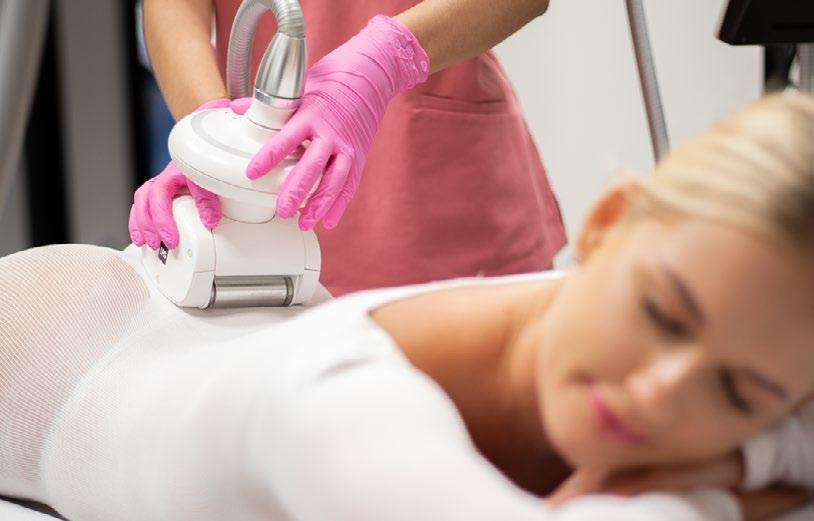
Elektrownia Powiśle’s Beauty Hall provides all kinds of incredible beauty and rejuvenating treatments – from head to toe!
By this point, you’re well aware of how jam-packed Warsaw is. From little cafes to walking paths, to Old Town (p.40), park (p.58) and center city (p.30) sightseeing. But sometimes you just need to take a break from all the exploring and relax, and Warsaw is the place for that, too!
In fact, we think it’s better than many other cities in this department for a number of reasons. A big one is variety. Warsaw spas and beauty centers use different concepts to bring you a relaxing, fun experience that you cannot find anywhere else.
Elektrownia Powiśle’s Beauty Hall is an oasis of beauty and relaxation in the heart of Warsaw. The one-ofa-kind concept offers the comfort of holistic beauty in a lovely space. Take advantage of a wide range of face and body treatments in the Beauty Skin clinic, massages and holistic rituals in Balance & Beauty by Marta Bem, and barber and beauty services offered by experienced specialists at the Warsaw House of Lords salon. It is an ideal destination for both a quick treatment during the day and a longer regeneration after work or on the weekend. The Beauty Hall zone is found on level +2 in Elektrownia PowiśleQH/I‑6, ul. Dobra 42 (Elektrownia Powiśle), MCentrum Nauki Kopernik, tel. (+48) 22 128 56 00, www.beautyhall.pl Open 08:00 20:00; Sun 10:00 19:00.
What do you get when you combine a love of fine wines and beers, a passion for relaxation, and a beautiful spot for health and well-being? Of course the answer is the Beer and Wine Spa!
Here you can enjoy high-quality spa treatments like goat milk baths, massages and more, along with some of the tastiest beverages you can find in the city. In fact, the two are so intertwined, that you can even get facial treatments from the beer and grape cosmetics line which give your skin deep rejuvination. Or book a whole beer/wine spa package and sip a glass of bubbly while you enjoy top-notch spa treatments.
This is really a true symbol of comfort and relaxation, with the concept based on the idea that good feelings and good well-being go hand-in-hand. Plus, you can enjoy 20% off all treatments during a current promotion! Perfect for couples, singles, friend groups and more.QG 7, plac Powstańców Warszawy 2a, MŚwiętokrzyska, tel. (+48) 662 380 090, www.beerandwinespa.pl. Open 12:00 20:00.
Enel Med
With 30 years of top-tier dental care, Enel Med offers up a whole range of services, like dentistry, specialized treatment (like implantology, prosthetics, orthodontics, oral surgery, periodontology and more), and even cosmetic dentistry and oral hygiene. Plus, if you have a toothache or other oral emergency, you can contact EnelMed - Emergency Service. The team includes over 300 dentists and 150 assistants and hygienists, in clinics located all around Poland (seven in total!) If you’re looking to get some cosmetic or dentistry procedure done while you’re traveling around Poland, this is the place. There are 20 branches around Warsaw, and the hours differ, so make sure to check the website before you go. But generally, the hours are Mon-Fri, 8:00-20:00; Sat, 9:00-15:00; or Mon-Fri, 8:00-21:00; Sat, 8:00-14:00.Qul. Gilarska 86 C, MZacisze, tel. (+48) 660 307 007, www. enel.pl. Open 8:00 20:00; Sat 8:00 15:00; closed Sun.
Estell Clinic
This spot offers a multitude of different beauty options, from body shaping and dermatology, to even dental prosthetics. This is where you come for some top-notch beauty treatments. Some of their most popular offers are skin consultations, body shaping, a whole host of dentistry offerings, eye area treatments and more. Suffering from migranes? They can help. Tired of loose skin from weight loss? Here too. Wrinkles, scar removal, dry facial skin... The list goes on (and on and on). These are world-class services at unbeatable prices. If you want a little beautification amid your stay in Warsaw, this is undoubtedly the place for it. Two other locations at Okopowa 58/72 and ul. Burakowska 14, with earlier hours. QF‑5, ul. Bielańska 2. MRateusz Arsenał, tel. (+48) 22 431 36 66, www.estell.pl. Open 9:00 21:00; Sat 9:00 18:00.
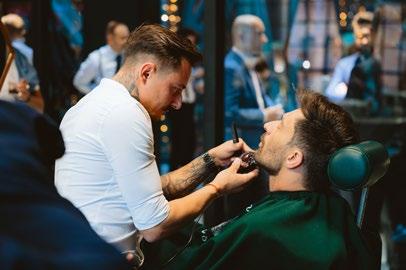
From haircuts to makeup, there's a plethora of offers at Beauty Hall Elektrownia Powiśle.

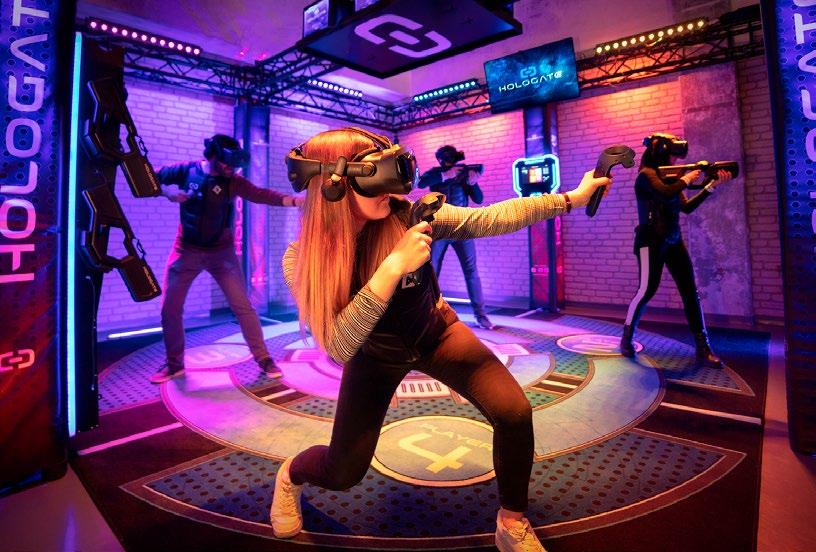
While Warsaw has plenty of wonders, not every cultural site is going to be engaging for young visitors. The first step to having a successful family vacation is probably to just accept that what you and your kids want to do are not going to be one and the same. That said, there’s common ground to be found in some of Warsaw’s most popular attractions.
Wandering the Old Town (p.40) or Łazienki (p.58) will likely please everyone, as will a walk along the Vistula Boulevards (p.55) - a great outing with plenty of diversions, most obvious of which is the stimulating and educational Copernicus Science Centre (p.56) and Multimedia Fountain Park further north. You’ll also find playgrounds along the river, and in the high season you can take a ferry to the wild side of Wisła and enjoy one of the city’s wild beaches
Although it may sound more like punishment, kids really respond to the interactive exhibits of the highly modern Warsaw Rising Museum (p.81), which features areas designed specifically for young visitors. Some of Warsaw’s more niche museums like the National Ethnographic Museum, Museum of Dollhouses and Photoplasticon are also good choices for families. Of course, Warsaw has plenty of action-packed indoor attractions, too so don’t miss the rainy day recommendations on the previous pages.
This museum is a kid's dream come true! One of the most popular chocolatiers in the country, Wedel, has a large exhibit that lets you discover the secrets of chocolate production and delicacies through a thematic exhibition, interactive displays and workshops for adults and children alike. There are also classes that combine learning and fun for organized groups of children and teenagers. There are three levels in the museum, which teach kids about how chocolate is made -- from picking the beans to storing them -- as well as the techniques for making chocolate. Think Willy Wonka's Chocolate Factory come to life!
And of course, what would a chocolate museum be without tastings? There's plenty of that, as well as a great opportunity for kids to design their own boxes for the popular Ptasie Mleczko Wedel chocolate confection!Qaleja Emila Wedla 5, MStadion Narodowy, www.fabrykaczekolady.pl. Open 10:00 20:00. 70/55zł.
Hidden in a darkened pre-war tenement near the train station, a visit here really is a trip back in time. A popular form of entertainment in the pre-cinema era, a ‘photoplasticon’ is basically a 3D peep show (no, not the saucy kind) where visitors sit in front of a viewing station to see vivid photos as they slowly rotate by. Although photoplasticons were quickly made obsolete by moving pictures, this one, which has been located here since 1905, somehow stayed open, surviving the war and even serving as a meeting point for intellectuals during the communist era. Check online to see what’s loaded into the machine (does it matter?). Visiting time: 20mins. QF‑8, Al. Jerozolimskie 51, MCentrum, tel. (+48) 22 629 60 78, www.fotoplastikonwarszawski.pl. Open 10:00 18:00; closed Tue. Admission 10/6zł; Thu free.
Young families visiting Warsaw need not worry about wholesome and constructive fun for the kids! Head along to Fabryka Norblina (p.33) and you will find Smart Kids Planet - the first edutainment centre in Poland, that is, a recreational format that bridges the gap between playrooms and science centres. Divided into 9 thematic zones and with over 50 engaging activities throughout, young minds can journey through many different worlds - building construction, food and fresh produce, sports, the magic of machinery and production lines, and right out into the cosmos with their very own designs coming to life before their eyes! Made for children aged from 0-10, this is certainly not a traditional ‘educational’ environment! Online tickets: 45-95zł; tickets at reception: 49-99zł. Buy for 1-2 hours or a full day. For children aged 0-10 QD‑8, ul. Żelazna 51/53 (Fabryka Norblina), MRondo ONZ, tel. (+48) 727 77 08 80, www.smartkidsplanet.pl. Open 09:00 20:00. U
Warsaw Arcade Museum
This is one for nostalgia and fun-lovers alike! This interactive museum of video games is like a time machine back to the 80s and 90s, with tons of classic video games available to everyone, 120 vintage arcade machines and even the history of arcade games and their evolution over the years. Find arcade classics like Pac Man, Mario, Donkey Kong and much much more. Perfect for a break from the regular tourist attractions, and great for a birthday party, corporate meeting or event, the Warsaw Arcade museum is a must-visit! QAl. Jerozolimskie 200, tel. (+48) 573 999 815, www.warsawarcademuseum.com. Open 14:00 21:00; Fri 14:00 22:00; Sat 11:00 22:00; Sun 11:00 20:00. 60/40zł/1h. THE BEST ACTIVE ENTERTAINMENT IN YOUR CITY!
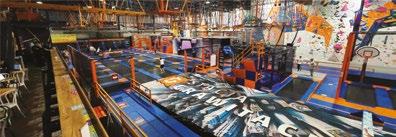
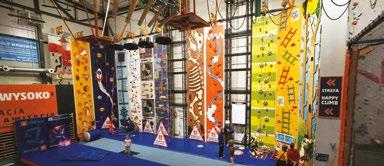

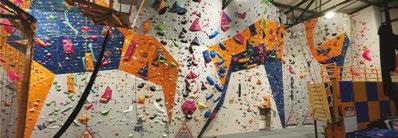


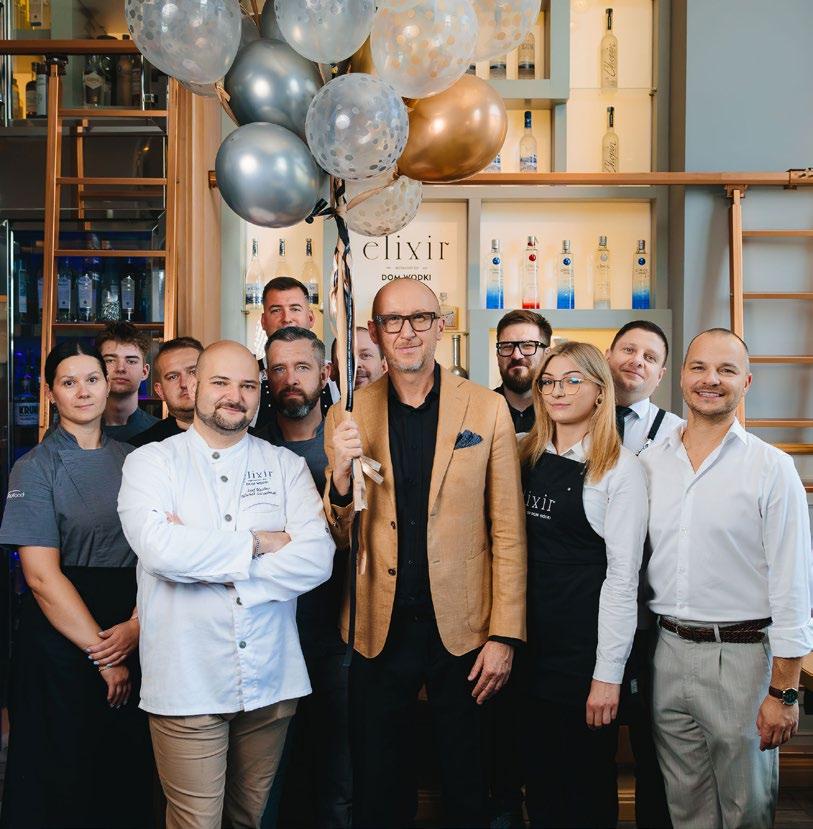
Nowhere is Warsaw’s vibrancy and diversity more apparent than in its progressive culinary scene. What follows are some of the most noteworthy dining establishments in the capital, divided into basic categories with the type of cuisine listed under the venue name; for more options visit our website. In terms of tipping, 10% is standard (easy math). Smacznego!
Elixir by Dom Wódki utensils International
At their Vodka Atelier, you can try some 800 vodkas from around Poland and the globe; the range goes from PRL era classics to Polish ‘small batch’ distillers, designer vodkas, and flavoured vodkas. Also offered are six different types of Młody Ziemniak vodka with varieties dating back several years. The label of each tells you about the vintage and what the weather and climate were like during its production. The restaurant itself features stunningly presented, contemporary, takes on Polish classics with a unique food and vodka pairing system, which recommends specific vodkas to complement the ingredients and flavors of each dish! Such a system is unrivaled anywhere in Poland and the world at large, and it's no surprise that they're so popular, they're celebrating their 10-year anniversary this year!
QF‑5, ul. Wierzbowa 9/11, MRatusz Arsenał, tel. (+48) 22 828 22 11, www.restauracjaelixir.pl
Open 12:00 23:00; Fri, Sat 12:00 24:00; Sun 12:00 22:00. €€€€. T
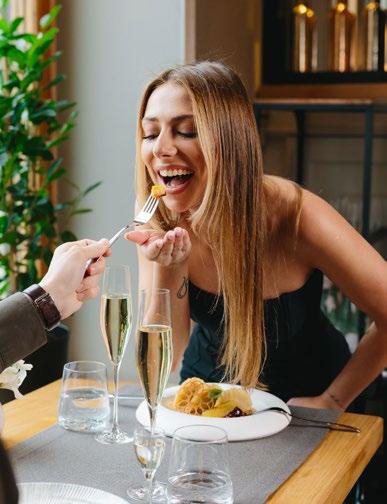
KUK Restaurant
utensils Polish
Culinary artistry gets up close and personal with the sophistication and essence of Warsaw’s history, as KUK embraces both a natural and local approach to its menu. KUK is part of the 18th-century Branicki-Szaniawski complex (p.42), endowed by the glorious Hotel Verte, Poland’s first abode in Marriott’s Autograph Collection of boutique hotels. New visionary Chef Dawid Bielecki draws inspiration from Polish cuisine, combining classic flavors with a modern approch and local ingredients. His creativity is focused on seasonal dishes based on flavors close to the earth, and he sources many of the ingredients himself to create distinctive, contemporary tastes. It's all presented in a light, fresh way that’s both contemporary and rooted in tradition. Their small plates are perfect for sharing among friends.
Qul. Miodowa 6/8, MRatusz Arsenal, tel. (+48) 511 46 46 45, www.hotelverte.com/kuk.
Open 17:00 23:00; Sat 12:00–23:00; Sun 12:00 23:00. Last order: 22:00. €€€€. XTUE6


For some the direction of the day depends on the ability to eat a good breakfast, so we’ve highlighted some of our favourite places in Warsaw that specialise in śniadania (the Polish word for breakfast). Whether you’re an early bird or a late riser, get a good first feed in the places listed here!
With two beloved, and popular, spots in Warsaw, it's hard to miss AïOLI. And why would you want to? They have some of the best food in the city, with tons of offerings that range from steaks to burgers to pasta. This cozy restaurant, located right in the heart of Warsaw, is a must-visit on your travels. The breakfasts are a must here, with offerings like traditional English breakfasts, focaccia, eggs, a bacon sandwich, and array of excellent coffee options as well as great, fresh smoothies, iced tea and bubble tea! this is really the ultimate brunch place to bring your friends, family or just go by yourself. Fresh, fun breakfast awaits! If you come midday, try the three-course lunch deal and sample some amazing coffees from a local roastery.QF‑8, ul. Chmielna 26, MCentrum, tel. (+48) 575 737 760, www.aioli.com. pl/en. Open 09:00 24:00; Fri, Sat 09:00 01:00. €€€.
Amar Beirut, an iconic Lebanese restaurant in the Norblin Factory, is the perfect place to start your day. Breakfast is served on the weekends (08:0012:00) , and features freshly baked manakish, labneh, variety of eggs, cheese, za’atar, and warm oven-fresh bread—paired with tea, fresh juices, or aromatic Lebanese coffee. Amar Beirut is the embodiment of Lebanese hospitality, with engaging décor and wonderful live music. Stick around after breakfast for the main menu, including hot baked Lebanese breads, authentic falafel, traditional tabbouleh salad, hummus, grilled dishes and desserts that are an integral part of Lebanese culinary culture.QŻelazna 51/53, MRondo ONZ, tel. (+48) 799 600 700, www.amarbeirut.pl. Open 12:00 24:00; Fri 12:00 02:00; Sat, Sun 08:00 02:00*. Breakfast is served only on the weekends (08:00 12:00). €€€.
Bułkę przez Bibułkę
A great little place that makes you feel like you’re in a small-town setting. Serving all-day-breakfasts, from bagels to soups and sandwiches, a proper Cappuccino or Americano along with it only costs you an extra 9zł. Furthermore, 0.5l wine is 24zł from 16:00-21:00 daily, and Prosecco only 8zł! Also at Żurawia 6/12 (G-8), ul. Zwycięzców 32 in Saska Kępa (M-8), and ul. Puławska 24 in Mokotów (H-13). QG‑8, ul. Zgoda 3, MCentrum, tel. (+48) 730 28 55 22, www.bulkeprzezbibulke.pl. Open 07:30 23:00; Sat 08:00 23:00; Sun 08:00 22:00. €. TB6
Located within the elegant Crowne Plaza Hotel, Nova Wola encourages a wholesome start to your day in Warsaw, with a fresh and organic breakfast selection as part of its impressive modern Polish menu offer (p.100). Served mainly for guests of the hotel, the breakfast will run you 110 zł. The breakfast menu includes favorites like omelettes with customizable add-ins, shakshouka, brioche with smoked salmon, avocado and fried egg, and oatmeal with coconut milk. Nova Wola also offers baked sweet potatoes with yogurt, berries, and granola, as well as hummus with roasted vegetables, avocado and egg.QC‑8, Rondo Daszyńskiego 2, MRondo Daszyńskiego, tel. (+48) 22 377 38 01, www.novawola.com. Open 06:30 10:30; Sat, Sun 06:30 11:00. €€€€. TU
Purr Purr
This all-day restaurant is also the ultimate cozy breakfast spot, thanks to a fluffy Cat Team and delectable food and drinks! Find a number of excellent, unique offerings here, like ruby matcha lattes that combine ruby chocolate with matcha and homemade cream cheese (or, for the purists, regular lattes and regular matcha). Warm teas like the beloved winter tea can also be found here, as can a number of excellent breakfast bites like fluffy Japanese pancakes and dango, a traditional Japanese sweet treat. Of course, don’t forget the biggest draw -- the furry kitties who will lounge and keep you company!.QD‑2, ul. Pokorna 2/U4, MDworzec Gdański, tel. (+48) 573 538 888. Open 11:00 21:00; Mon 12:00 20:00; Sat, Sun 10:00 21:00. €€. U6i
Stacja Caffe
Bounce your way on over to some tasty food as you enjoy one of Warsaw’s best activity parks! Located right in the oh-so-popular Stacja Grawitacja trampoline (and more) center is this charming cafe, which serves everything from mozzarella and pesto sandwiches, to egg breakfasts, gnocchi meals and an array of smoothies! It’s the perfect break after

With perfect portions of flavorful, and uber-traditional Lebanese food, Amar Beirut really shines.
a fun day (and a workout!) jumping around the activity center, which includes a trampoline park, a climbing wall, a ropes course, and way more. Fuel up at the cafe and head back out for more fun!Qal. Bohaterów Września 12, tel. (+48) 726 13 06 66, www. stacjagrawitacja.pl/warszawa/bistro/menu stacja caffe/. Open 10:00 22:00; Sat, Sun 10:00 21:00. €. T6i
One of our favorites, The Cool Cat is part Asian-fusion bistro, part cocktail dive bar, all Varsovian awesome. You can get items to go but in terms of dining in, The Cool Cat specialises in ramen (of course) and serves an iconic bao donut dessert topped with matcha ice cream and caramel miso. They also have weekday lunch specials for only 36zł (12:00-16:00), exceptional coffee, wacky cocktails, craft beer and natural wines. 2nd location at ul. Marszałkowska 8 (H-12).QI‑7, ul. Solec 38, MCentrum Nauki Kopernik, tel. (+48) 574 81 18 16. Open 10:00 22:00; Sat 09:30 22:00; Sun 09:30 21:00. €€. T6
Escape just beyond the medieval confines of the Old Town walls to find this charmingly twee cafe specialising in coffee, cakes, quiche and delicious fruit crumbles. If you enjoy Kraków’s cosy cafe culture, this spot is right up that alley, as opposed to the capital’s overabundance of postindustrial spaces. When it comes to indulging in aromatic coffee and rich cakes, we’ll take the former. Breakfast is served all day, as well as wraps, lots of matcha products, and some savoury snacks. The name translates to ‘I like this’ and indeed we do.QF‑3, ul. Freta 8, MRatusz Arsenał, tel. (+48) 22 635 90 23, www.tolubie.pl. Open 09:00 22:00; Mon 10:00 22:00. €. 6
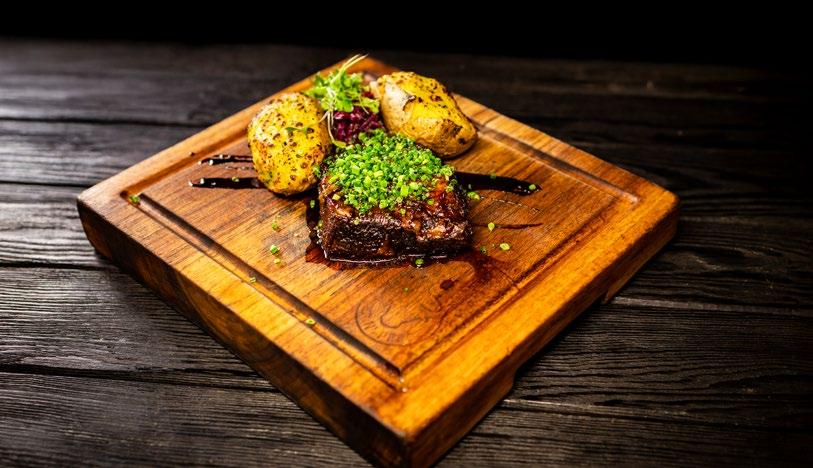
Sometimes you just need a casual and convenient place to relax, enjoy good food, vibes and hospitality. The following venues deliver in that regard. While our listed opening hours seem self-explanatory, be aware that some venues close their doors if business is slow, while others stay open after the kitchen has closed. In such cases, the hours we list are for the kitchen.
AïOLI Cantine Bar Cafe Deli
utensils International
Dominated by two large circular bars - one around the kitchen hung with colanders and racks of prosciutto, the other an actual drink bar ringed with wine glasses, wooden furnishings dressed with fresh herbs do much to dispel the brick and concrete, while excellent service further elevates the atmosphere. The exciting, modern menu extends from light tapas and seafood to pasta and more -and don’t miss their famous homemade aioli sauce. This place absolutely buzzes, aided by breakfast and lunch specials, affordable prices and a kitchen that stays open late. 2nd location at ul. Chmielna 26 (F-8).
QF‑7, ul. Świętokrzyska 18, MŚwiętokrzyska, tel. (+48) 518 81 93 02, www.aioli.com.pl/en/home spot. Open 09:00 24:00; Fri, Sat 09:00 01:00. €€€. TUB6
utensils Category of Cuisine E Live music
utensils Balkan
Head here for monstrous portions of the best Balkan food in town. This central spot, open for nearly 22 years is described by the owners as a “lively, tough grandmother with tattoos, good style and a smile."Choose from all kinds of amazing Balkan food like juicy, well-seasoned meats, stuffed peppers with cheese, and roastbeef u rakija sljivovici (aka filled with plum rakija). Among the offerings is the legendary 20-centimeter Gurmanska Pljeskavica - a large, traditionally Balkan beef patty. And don’t just come here for the food -- the experience itself is great, too!
QF‑7, ul. Szkolna 2/4, MŚwiętokrzyska, tel. (+48) 22 828 10 60, www.banjaluka.pl. Open 16:00 00:00; Mon 16:00–23:00; Fri 16:00 01:00; Sat 12:00 01:00; Sun 12:00 22:00. €€€. TE6
C-1 Map Coordinate N Credit cards not accepted
M Metro o Year-round garden
T Child-friendly X Smoking room available
U Facilities for the disabled 6 Animal friendly
€ most mains under 35zł
€€ most mains 35–55zł
€€€ most mains 55–80zł
€€€€ most mains 80–120zł
€€€€€ most mains over 120zł
utensils Steak
Hidden away in a small alleyway alongside the famous Roma Theatre, the exterior may look like you’re about to enter a 1970’s Texas shopping mall, but inside it’s a smart, urban steakhouse and bar. The quality of the cuts here is excellent (28 days wet-aged or 30 days dry-aged) and the fact that they use the finest local meats means the prices are surprisingly reasonable. Seafood and Louisiana Chicken Wings struggle for a look-in as beef rules. In addition to a fine wine list, the slick bar has a brilliant selection of whiskies and bourbons, and there’s live music every Tuesday from 19:00. Plus, in addition to their regular summer garden, this year they have a second garden on ul. Nowogrodzka with a view of the Palace of Culture and Science. Don’t miss their new Sundays with the kids, where kids can participate in hands-on activities! QF‑9, ul. Nowogrodzka 47A, MCentrum, tel. (+48) 785 02 50 25, www.beefandpepper.pl. Open 12:00 24:00. €€€€.
Bliski Wschód Vege Street Food & Cocktail Bar
utensils Vegetarian & Vegan
If you’re one to think flavor only comes from dishes with meat, let Bliski Wschód dispell that notion right now. This all-vegetarian restaurant packs a flavor punch with meals inspired by cuisines of Lebanon, Turkey, Israel, Tunisia and Egypt. And while you dine on a savory halloumi burger or a crispy bite of falafel, you can admire the gorgeous interior, with delightful design elements that add to the overall atmosphere of the Middle Eastern space. Plus, there are two levels and VIP rooms for smaller parties, so you can plan events or hold get-togethers here! If you like to have shisha, this is also the spot, as it has an extensive sisha menu done in an unusual way. A seasonal garden (now open) tops this place off as a must-visit.
QF‑8, ul. Złota 11, MCentrum, tel. (+48) 668 01 69 79.
Open 12:00 22:00; Mon 12:00 21:00; Fri, Sat 12:00 23:00; Sun 12:00 21:00. €€. XTUB6
BursztyNova Restaurant
utensils International
Tucked right into the heart of Warsaw’s bustling center city, this place belongs to one of the largest dairies in Poland, which produces long-aged cheeses like Bursztyn, Szafir and Rubin (the first long-ripened cheeses in the country). The offerings don’t stop at these delicious cheeses. This restaurant aims to give you the full cheese experience, meaning they have excellent pairings of wine, preserved jams, delicate honeys, and bitter or sweet chocolate. The menu goes on to include recipes that combine cheese
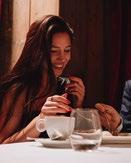


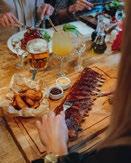
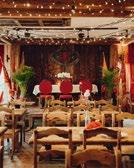
“Czerwony Wieprz” was recommended by The New York Times as the best Polish cuisine restaurant and included in a list of 10 reasons to visit Warsaw.

Czerwony Wieprz Restaurant
68 Żelazna Street, Warsaw
Booking: +48 22 850 31 44
is a unique restaurant in the heart of Warsaw, created by SPOMLEK - the Polish Dairy. Welcome to a culinary journey with the best Polish long maturing cheeses. Discover their rich taste in exquisite dishes, original desserts and unique combinations that will delight every gourmet!
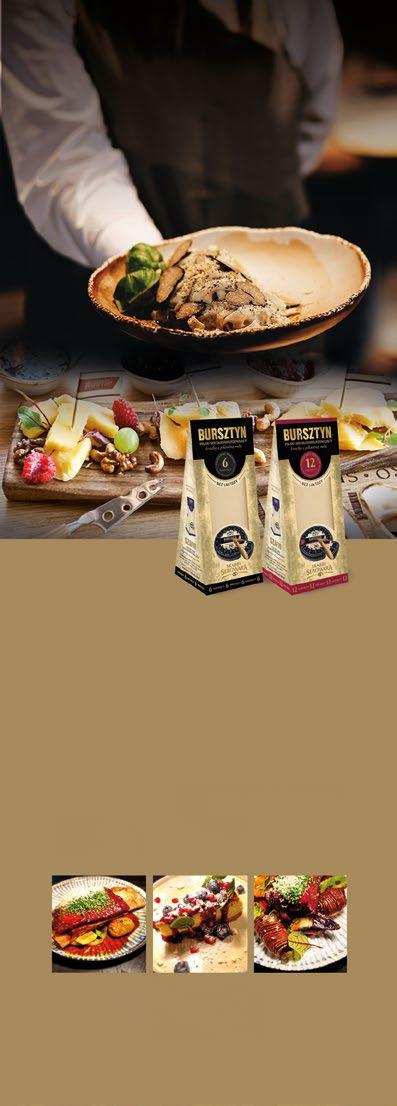
BursztyNova Restaurant Warsaw, Królewska 16 (+48) 519 310 110

in hot dishes, pastas, sauces, appetizers and more. Taste a jucy fall-off-the-bone cut of meat topped with lightly grated cheese, or a bed of perfectly roasted vegetables topped with a light mozzarella. It’s all here! Visit not just for flavors that will linger on your tongue, but also information you can take away with you! Employees can tell you the difference between aged cheeses, what the crystals mean in mature cheeses, how to shell cheese (and why it’s better than slicing) and more.QE‑6, ul. Królewska 16, MŚwiętokrzyska, tel. (+48) 519 310 110, www. bursztynovarestauracja.pl. Open 12:00 22:00; Fri, Sat 12:00 23:00. €€€.
UBE6
utensils Italian
Located a short distance away from the Old Town Square (p.44), Ciao Napoli succeeds in bringing a little piece of Naples to the centre of Warsaw. Offering a selection of antipasti, salads, piadina, panuozzo and desserts, it’s the Neapolitan pizzas, with their fantastic thin and crispy dough, which really distinguish this small family-run franchise. The friendly atmosphere and cosiness of the restaurant also makes an impact, despite its popularity and the fact that its at the heart of one of the capital’s biggest tourist hotspots. That being said, you will leave satisfied, especially when you realise how reasonably priced the whole experience is! Their second location at ul. Piwna 40/42 (F-4) has weekday lunch specials from 12:00-16:00.QF‑4, ul. Wąski Dunaj 4/6/8, MRatusz Arsenał, tel. (+48) 508 69 43 52, www. ciaonapoli.pl. Open 12:00 22:00; Fri, Sat 12:00 23:00.
€€. TB6
utensils Italian
Ciucina Mia is both a story and a celebration of Italian cuisine and culture, with excellent, traditional dishes. Taste a wide range of flavors like Amalfi lemons, Umbriaco cheese soaked in red wine, earthy black truffles, salty and savory ham, and fresh mussles and red prawns straight off a Sicilian fishing boat. In short, the food here is the real Italian deal. The restaurant has even reintroduced a 300-year-old recipe created in a small Italian town. Plus, the flavors are complemented by top-shelf wines and exquisite, rich desserts.
And it’s all created by experienced chef Deniele Pampagnin, who boasts an impressive resume that includes restaurants in Mykonos, Ibiza and London, along with Michelin-recognized Chef Lorenzo Robustelli. QH‑9, ul. Prusa 2 (Sheraton Grand Warsaw), MCentrum, tel. (+48) 22 450 61 00, www.cucinamia.pl Open 08:00 24:00. €€€. UBE
Czerwony Wieprz
utensils Polish
Workers of the world unite around a large choice of well-presented Socialist Bloc cuisine. Deriving its name from a former meeting place for members of the early communist movement, legend has it that even Lenin paid this place a visit in 1909. The interior is based on the style favoured by the 1950’s -1960’s party elite, and the walls are bedecked with memorabilia of the era. Somehow the owners have managed to carefully side swerve tackiness and the whole experience has a lovely, faded and nostalgic glam to it. Immensely popular with locals and tourists alike.QC‑7, ul. Żelazna 68, MRondo ONZ, tel. (+48) 22 850 31 44, www.czerwonywieprz.pl. Open 12:00 23:00; Sun 12:00 22:00. €€€. TUB
Daebak
utensils Asian
The ultimate place for grab-and-go, authentic Korean food that really lives up to its name (Daebak means “wow” in Korean!) This spot, located near the University of Warsaw Library serves up authentic Korean bento boxes -- essentially a tradtional packed lunch, separated into different parts. Each box contains rice, 4 banchan (side dishes), one main course and fruit for dessert. Plus, you get to customize your own, with a choice of four main courses (1 vegetarian), sides and more. Order off the self-service screen and come back in two days for whole-new offerings! Perfect for students on the go or anyone wanting to grab some lunch.Q
Dobra 53, MCentrum Nauki Kopernik, tel. (+48) 880 87 58 88, www.instagram.com/daebak.wawa 12:00 21:00. €€. B6
utensils Polish
You can’t visit the capital of Poland without trying some traditional Polish food, right? Gościniec has just that - hearty soups, plump dumplings, potato pancakes and various cutlets - all prepared ‘as they should be’ and at very reasonable prices. You can’t go wrong with pierogi, but we’d personally recommend the pork chops or cabbage rolls stuffed with meat (known locally as gołąbki: go-womp-ki). The drinks on offer are quite funky (cold/hot options), and it’s all served up by friendly staff wearing folk attire. It may feel very kitsch inside, but the food hits the mark and the portions are immense. Additional locations at ul. Nowy Świat 43 (G-7), and deep in the Old Town at ul. Podwale 19 and ul. Piwna 14 (F-4).Q

Looking for the coziest spot in Warsaw? Visit the Cat Zone, where MeiMei, Kohi and the rest of the Cat Team will keep you company!
The Sphinx sisters and Korean-Japanese snacks are waiting for you at Pokorna 2/U4!
Krakowskie Przedmieście 29, MRatusz Arsenał, tel. (+48) 22 273 69 36, www.gosciniec.waw.pl 11:00 22:00; Fri, Sat 11:00 23:30. €€. TB6 M Direct Metro 1 stop: Dworzec Gdański Psst...Find our menu on Instagram! Purr Purr Restaurant | Pokorna 2/U4 12+ notforkids agelimit

Gospoda pod Zygmuntem utensils Polish
With locations on the happening Nowy Świat street and another near the Old Town Square, this veteran Polish restaurant is as simple and traditional as it gets. A good option for tourists, families and anyone looking for their first foray into Polish cuisine, the modestly-priced, bilingual menu includes photos of almost every dish. There is a lot to choice, from classics like pierogi, potato pancakes with goulash and mushroom soup served in a bread bowl, to old school staples that have dropped off most modern menus like tripe soup and chicken livers with fried onions and baked apples. Also at ul.Świętojańska 15QG‑7, ul. Nowy Świat 41, MNowy Świat Uniwersytet, tel. (+48) 22 428 39 43, www.gospoda.waw.pl. Open 11:00 22:00; Fri, Sat 11:00 23:30. €€. TB6
utensils Japanese
Located right in the impressive Food Town at Fabryka Norblina, this stand offers incredible, cloud-like fluffy Japanese pancakes with a souffle consistency that will remind you of eating a marshmallow. But they don't just stop at breakfast, of course! This happening spot offers food all day long with both savory and sweet pancakes, Taiyaki (fish-shaped cakes), matcha-based drinks and coffee. Dango (Japanese dumplings) and Sando (popular Japanese sandwiches) will be offered soon. For some of the best Japanese street food around this is the spot! QI‑7, ul. Solec 24 (Muzeum of Asia and Pacific), MCentrum Nauki Kopernik, https://www.facebook. com/kumotoyaki.wawa/. Open 10:00 18:00; closed Monday. €€. 6iU
Nar Restaurant utensils Mediterranean
The bold flavors really stand out here: light and flavorful mezze dishes with yogurt and marinated eggplant, juicy bites of grilled lamb and vegetables, perfectly seasoned slices of grilled beef. Lunches are served here from Monday through Friday between 12:00 and 16:00, and the weekend breakfasts (between 10:00 and 14:00 on Sat and Sun, between 9:00-12:00 on Mon-Fri) are amazing and unlike most other breakfast offerings in the city. Additionally, there are special events on Saturday nights from 19:30, when you can enjoy a special Raki menu alongside some live music which will transport you straight to Turkey. And don’t miss their daily happy hours from 12:00-20:00!QF‑9, ul. Żurawia 47/49, MCentrum, tel. (+48) 451 012 922, www. narrestaurant.pl. Open 12:00 23:00; Sat, Sun 10:00 23:00. €€€. B6i
PaTaThai
utensils Thai
At this popular Powiśle restaurant, each dish is a story that’s inspired by every corner of Thailand, from the mountains in the north, to busy city streets, to the idyllic beaches. And the flavors of these exquisite dishes will transport you to each place.
Try some juicy duck or savory and flavorful curry. Seafood, tofu, chicken and more are all here and all bursting with authentic Thai flavors. Bonus, this spot in Elektrownia Powiśle is a family-friendly place with a separate menu for kids, so you’ll easily find something for everyone. You can even visit with your dog! So for all the dog parents out on a walk and looking to stop for a bite, this is your place.Qul. Zajęcza 2b, MCentrum Nauki Kopernik, tel. (+48) 574 118 104, www.patathai.pl/lokale/powisle/. Open 12:00 22:00; Thu 12:00 23:00; Fri, Sat 12:00 01:00. €€. 6
PierOgarnia
utensils Polish
Located right in the heart of Warsaw, these are authentic, handmade pierogi done really well. You’ll find all the classic flavors here, from cheese and potato, to mushroom and cabbage, to meat and of course, spinach. The thing that sets this place apart is the flavor and the locally sourced ingredients. If you’re looking for good, authentic pierogi on your adventures around the city, this is the place to go. QF‑8, ul. Złota 11, MCentrum, tel. (+48) 668 01 69 80, www.instagram.com/pierogarniazlota11. Open 12:00–20:00. €€. TB6
utensils Mediterranean
An original take on Mediterranean cuisine, with a focus on simplicity that lets the high quality ingredients and expert preparation shine. Plus, the biggest Primitivo wine collection means you can experience the top-shelf wine as you enjoy your meal. The dishes themselves as well as many ingredients come from the Mediterranean basin and other ingredients are locally sourced. Chefs focus on 3-ingredient dishes that allow them to highlight the expert preparation and quality food. The restaurant design itself is also a huge attraction. With muted, earthy tones and wood, stone, ceramic and glass elements in the design, Primitivo is reminiscent not only of the earth and the natural world, but also of some of the most sought-after dining experiences around the globe. A must-visit!QD‑7, ul. Waliców 13, MRondo ONZ, tel. (+48) 606 444 462, www.primitivo. com.pl. Open 12:00 22:00; Thu, Fri, Sat 12:00 23:00. €€€. TUB6
Purr Purr
utensils Asian
Have you ever wanted to see adorable cats roaming around, taking naps and just being cute while you enjoy a mug of matcha or a bite of bibimbap at one of the coziest spots in the city? Well, then you’re in luck! This adorable cat cafe and restaurant is home to all of those things, but the real draw, of course, is cuteness! There are no reservations so make sure to get here early and grab a mug of tea or matcha, or a bite of onigiri as you sink into a comfy armchair and watch the cats roaming around! They ask that visitors be 12 and older, and remember that the Cat Team have a rest day on Monday! While they’re away, Purr Purr features an 8% discount on menu items to brighten your day Q D‑2, ul. Pokorna 2/U4, M Dworzec Gdański, tel. (+48) 573 538 888, www.instagram. com/purrpurr.wawa . Open 11:00 21:00; Mon 12:00 20:00; Sat, Sun 10:00 21:00. €€. U6i
Setki Powodów
utensils International



A fantastic neighbor of Warsaw’s Polish Vodka Museum, Setki Powodów (Hundreds of Reasons) guarantees live music and an impressive food menu, with plenty of things to nosh on as you listen and enjoy a drink. Setki Powodów offers international cuisine in a comfy street-food style with amazing burgers, pastrami sandwiches and seafood. Relax as you taste delectable dishes and listen to live music. Consume as you wish, and enjoy the small-but-punchy live music stage in the corner.QK‑2/3, Pl. Konesera 1 (Centrum Praskie Koneser), MDworzec Wileński, tel. (+48) 22 419 31 54, www.setkipowodow.pl. Open Tue, Wed 12:00 22:00; Thu 12:00 24:00; Fri, Sat 12:00 01:00; Sun 12:00 21:00; closed Mon. €€. UE
U Barssa
utensils Polish
The Old Town is packed with places to eat, but this is one of the few truly great. As you walk from the market square into the elegant dining room, you will discover a world of luxury, craft and privilege. The signature duck baked with beetroot, fried apples and cranberry sauce, and the Angus steak with green pepper are just two of the winning dishes on the menu, and we have to mention the outstanding wine list. In the winter (until mid-Feb) they have a stand in the main square of the Old Town with mulled honey, sausages, pajdy with lard, oscypki (smoked cheese) with cranberry, and warm drinks. QF‑4, Rynek Starego Miasta 12/14, MRatusz Arsenał, tel. (+48) 22 635 24 76, www.ubarssa.pl. Open 11:00 22:00; Fri, Sat 11:00 23:00. €€€€. XTE6
Złota 11 Street, Warsaw +48 668 016 980 | ogarniapier@gmail com

the bigest vegetarian restaurant
Złota 11 Street, Warsaw bliskiwschodvege@gmail co + 48 668 016 979


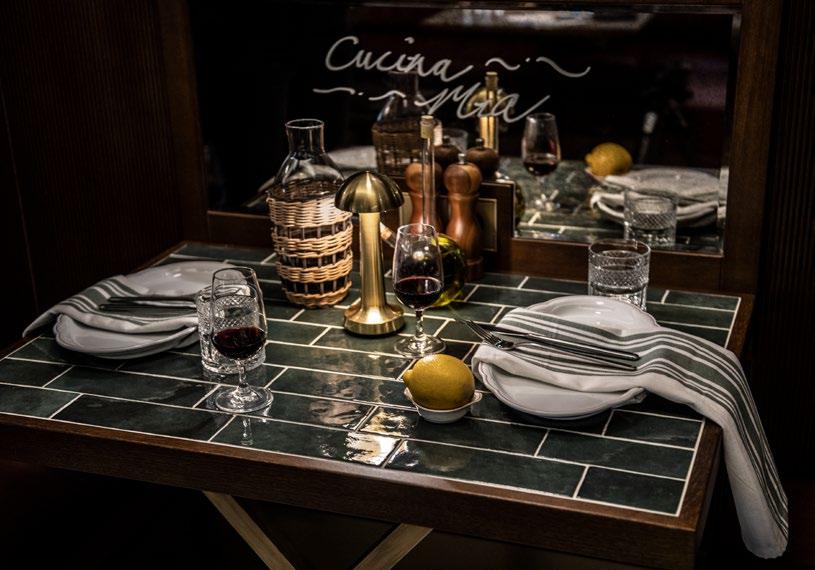
If you want to splash out on some of Warsaw's finest cuisine, we definitely have you covered - testing the food was our pleasure. Whether you're looking for the right venue to impress a potential client, romantic partner or celebrate any kind of special moment, the following pages will keep you right. Bear in mind that reservations are almost essential in any of these venues.
Amar Beirut utensils Lebanese
This iconic Lebanese restaurant in the Norblin Factory is known for its incredible interior and even more incredible culinary offering. The restaurant’s menu kicks off with breakfast served from 8:00 a.m. to noon every weekend, followed by a business lunch offer, Of course, dinner is a treat, too! Try all kinds of authentic Lebanese food, like falafel, traditional tabbouleh salad, hummus, juicy grilled meat dishes and more.On Thursday through Saturday, the restaurant really comes alive, with live entertainment in the evenings and a captivating dance performance on Saturday nights. Plus, the restaurant bar, located on the rooftop terrace, is sure to amaze with award-winning bartenders and epic center city views.QC‑8, Żelazna 51/53, MRondo ONZ, tel. (+48) 799 600 700, www.amarbeirut.pl/. Open 12:00 24:00; Fri 12:00 02:00; Sat, Sun 08:00 02:00. €€€€. BE6i
utensils Polish
Located inside the ‘New Orangery’ in the middle of Łazienki Park, Belvedere is one of Warsaw’s most prestigious and romantic restaurants. Essentially a mid-19th century greenhouse, this spectacular venue features floor-to-ceiling windows and is filled with tropical plants. Elegant, intimate table settings are placed amongst the indoor foliage, as well as outside, where peacocks wander the grounds. The food lives up to the first-rate atmosphere, with a concise menu of fresh seafood, meats and seasonal dishes, and a brunch menu is served Sundays. Consistently listed in the Michelin guide for over a decade, a glance at the prices reveals this is hardly a place to drop in after a day in the park. It's a fancy spot!QI‑12, ul. Agrykoli 1 (New Orangery in Łazienki Park, entrance from ul. Parkowa), MPolitechnika, tel. (+48) 606 10 20 02, www.belvedere.com.pl. Open 12:00 23:00; Sun 12:00 16:30. €€€€. TBE
InAzia
utensils Asian
Take a delicious journey East with chef Marcin Sasin offering an array of dishes from throughout Asia (think Thailand to Singapore, China to Vietnam). Expect elegant dishes bursting with color and adorned with fresh herbs and spices like lemongrass and coriander, as well as an insight into the process thanks to their Omakase-style dinner. That means a special window that allows you to watch the kitchen in action and chat with the chefs, for a perfectly tailored menu. Sleek interiors abound, as do fantastic tasting menus. For 6 courses expect to pay 450 zł per person or for 9 courses, 550 zł per person (along with a 10% service charge). QH‑9, ul. Prusa 2 (Sheraton Grand Warsaw), MCentrum, tel. (+48) 22 450 67 06, www.restauracja inazia.pl. Open 17:00 23:00; closed Mon, Sun. €€€€. U
Klonn
utensils International
Nature, food and art intersect at this lovely restaurant enviably located metres from Ujazdowski Castle. The owners have brought their knack for design to the artsy, elegant interiors, while the outside seating envelops a 200-year-old tree. Head chef Michał Gniadek, awarded by Michelin and Gault & Millau, creates exquisite dishes out of fresh, seasonal ingredients, many of which are designed for sharing. The octopus is particularly buttery and delicious, there are dishes for children, and the wine list is truly excellent. Honestly, a visit here is so rewarding, it makes a trip to the nearby museums and parks that much more enticing. Don’t miss it.QH‑11, ul. Jazdów 1B, MPolitechnika, tel. (+48) 22 100 63 63, www.klonn. pl. Open 13:00–22:00; Sun 13:00–19:00; closed Mon. €€€. TBE6
Koneser Grill
utensils International

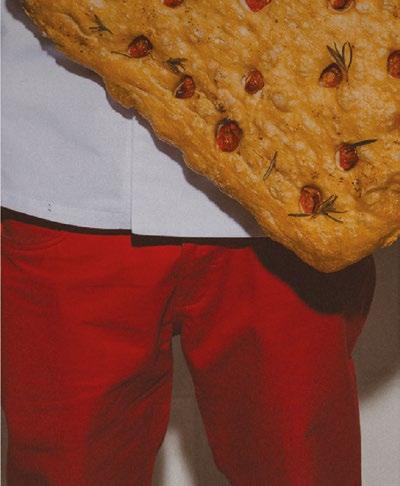
A truly beautiful spot in the heart of Praskie Koneser, this restaurant is rife with good food, good atmosphere and all around good vibes. Working with smoke, aroma and top-quality meats, the expert chefs at this grill use Polish seasoned oak and alder wood to cook up some delicious dishes. Here, you can taste a whole host of different cuts of steak, from rib eye to T-bone (and plenty more), along with nonsteak dishes like pasta and delicious appetizers (a cool, refreshing gazpacho is perfect for the summer). All served in a gorgeous spot with low lighting, exposed brick, a fireplace, high ceilings and an all-around elegance at every turn. This is definitely a spot that shines - especially when it comes to steak. QUl. Ząbkowska 29, tel. (+48) 798 185 692, www.konesergrillwarszawa.pl. Open 12:00 22:00; Sun 12:00 20:00; closed Mon.
ul. Waliców 13 +48 606 44 44 62
rezerwacje@primitivo.com.pl


utensils Polish
Garnering the Grand Award (that is, 5 forks) from the prestigious gastronomic list of Poland 100 Best Restaurants, Nova Wola encapsulates the spirit of central-west Warsaw’s restlessly developing, trendsetting Wola district, and absolutely nails the concept of ‘premium casual’ dining. Residing within the luxury Crowne Plaza Hotel (part of the ‘Warsaw- The HUB’ complex), complete with an industrial chic interior of polished concrete, dark woods, gold furnishings, lots of glass and big city views, it is here that Nova Wola delivers a decidedly modern take on Polish cuisine. Under Executive Chef Paweł Suchenek’s direction, the menu emphasizes simple plates made with high-quality ingredients sourced from local Polish suppliers and foraged in the wild. Local culinary traditions with contemporary flair offer you a choice of rich soups, premium Polish seasoned beef steaks, fish, and amongst others, a special seasonal menu, with many of the entrees and even soups available in larger portions ideal for sharing. This upscale approach with a relaxed, sociable atmosphere makes Nova Wola ideal for business, dating or get-togethers. Na zdrowie! Read about Nova Wola’s breakfast on p.91 QC‑8, Rondo Daszyńskiego 2, MRondo Daszyńskiego, tel. (+48) 22 377 38 01, www.novawola.com. Lunch 12:30 16:00; Dinner 17:00 22:30 p.m. Breakfast Mon Fri 6:30 10:30; Sat, Sun and holidays 6:30 11:00. €€€. TU
utensils International
One of best restaurants in the city, Moonsfera’s head chef, and owner, is Jarosław Uściński, the President of the Polish Association of chefs and bakers. So it’s safe to say he takes cuisine fairly seriously.
The menu is filled with a mix of Polish/International dishes made with the chef’s own personal touch, both modern and elegant, and it shows as soon as you stare wide eyed at your plate as it’s placed in front of you. Imagine fried duck breast over mashed potatoes with a pepper and orange sauce, or slow roasted lamb with a gravy mint demi glace. Baked sea bream, creamy roasted leek. Their pasta is also a must-try, with offerings like rich carbonara and black tagliatelle. The delicious list goes on! A great place to eat and relax, but also somewhere you can also take part in cooking classes. We like that, making the experience inclusive. Here, here.QE‑2, ul. Bonifraterska 17, MDworzec Gdański, tel. (+48) 22 560 37 33, www.moonsfera.pl. Open 12:00 22:00; Fri, Sat 12:00 23:00; Sun 12:00 21:00. €€€. TUE6
Rozbrat 20
utensils International
For all intents and purposes, faultless. A fine dining experience of the old school, though the food has a contemporary twist and packs a seriously sophisticated punch. The menu is seasonal and changes regularly. Choose from a set menu with items like foie gras and bluefish tuna, or indulge in a delicate and gorgeous tasting menu. As for the wine list, it needs no introduction: it is one of the best in all of Poland, and the knowledgeable staff will help you choose the best complement to your meal.
An indulgence worth going for.QI‑9, ul. Rozbrat 20, MPolitechnika, tel. (+48) 690 12 52 70, www. rozbrat20.com.pl. Open 17:00 22:00; Fri, Sat 16:00 22:00; closed Mon, Sun. €€€€. T6
U Fukiera
utensils Polish
Warsaw’s oldest and most famous restaurant, with a tradition going all the way back to the 16th century, is truly a must-see. Run under the star stewardship of Magda Gessler (of Polish MasterChef fame), this enchanting establishment’s interior is a work of art, bedecked with oil paintings and ornate antiques, creating a fantastic ambience. The menu itself is simultaneously classy, traditional and modern, with dishes like chanterelles in a cream sauce, beetroot carpaccio with dill, sirloin with potato dumplings and a pepper sauce, and much much more. Right on the Old Town Square, enjoy the delicious, gorgeously presented food and soak up the regal atmosphere that has made this spot so beloved (and famous). QF‑4, Rynek Starego Miasta 27, MRatusz Arsenał, tel. (+48) 600 99 99 33, www.ufukiera.pl. Open 12:00 23:00. €€€€. T6
Wabu Sushi & Japanese Tapas
utensils Japanese
Sometimes stiff formality and pretence go hand in hand with fine dining, and though the food may be great, the overall experience can be a bit awkward or even, ugh...tiring. As such, it’s nice to experience exclusive dining in the Japanese Izakaya style (informal eating). Wabu is very much a place for all types of people, from businessmen to couples to tourists and even families, so relax and enjoy. The interior is a minimal and elegantly unfussy gem, that blends in nicely with its modern surroundings on Plac Europejski. The menu is extensive and diverse, and includes a special menu for kids, and 3 lunch offers (Sushi with miso as well as meat and veg) Mon-Fri 12:00-15:00. Q C‑7, Plac Europejski 2, M Rondo Daszyńskiego, tel. (+48) 668 92 59 59, www.wabu.pl . Open 12:00 23:00. €€€€. TU6

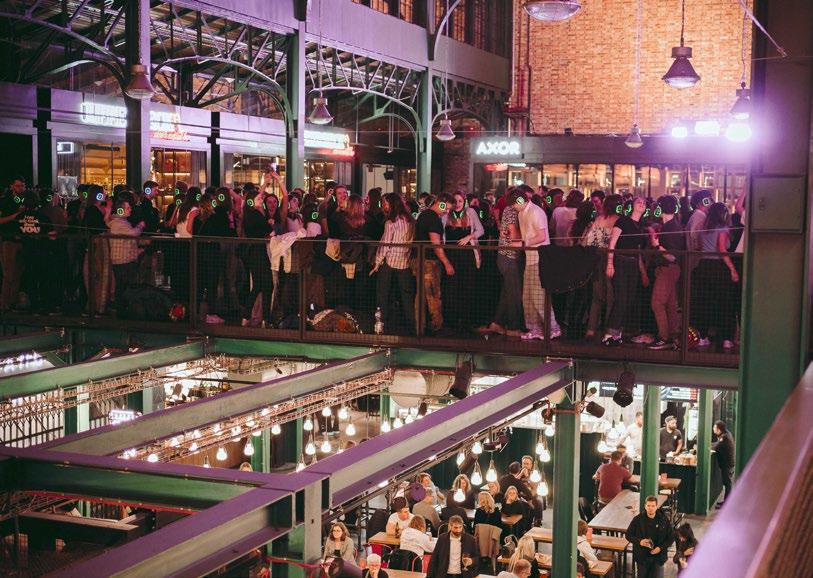
The popularity of street food and fast gastro concepts has led to an explosion of food markets and indoor dining halls in Warsaw, offering dozens of diverse eating options. Not only a place to slay your hunger, these modern food markets are also trendsetting urban social spaces, featuring bars and hosting events.
From the outside, it’s obvious that this former power station (p.56) has been given a new boost of energy following a major overhaul. Elektrownia also contains a whole host of gastro eateries, bars and event spaces. This central food court allows you to choose anything from fries, hot dogs, dim sum dumplings, kebabs, pizza, sushi, curries, Vietnamese, potatoes, fancy pancakes and San Francisco street food. Additionally, there are several more restaurants in the office buildings opposite! You’re spoilt for choice, so let your mood and budget decide (not easy!). Once you’re done dining, check out their five bars, and also keep a regular eye on their events calendar so you don’t miss hip foodie happenings like their ‘Eko Targ’ (Eco Market), selling GMO-free locally-grown produce. QH‑6, ul. Dobra 42, MCentrum Nauki Kopernik, tel. (+48) 22 128 56 00, www.elektrowniapowisle.com
Open 12:00 23:00; Fri 12:00 24:00; Sat 11:00 24:00; Sun 11:00 23:00. U6
Occupying a large, brick-walled space in the historic Brewery Cellars, this impressive food hall is arguably the social centre of the Browary Warszawskie district (p.32). With 13 different world cuisines to choose from - ranging from Tuk Tuk's authentic Thai cuisine to Octo, which offer pasta, pizza, seafood and more. there are plenty of enticing options, including special lunch offers.
The focal points are the impressively long Central Bar - well-stocked with beer, fine wine, and cool cocktails courtesy of legendary local bartender Karim Bibars, and the small stage which hosts DJs, bands and a range of thematic events. Grab a seat at a communal table, a plate of good food, and get socialising. From food to great conversation, drinks and music. This spot has it all. QC‑7, ul. Haberbuscha i Schielego 2 (Browary Warszawskie), MRondo Daszyńskiego, www. foodhallbrowary.pl. Open 12:00 22:00; Wed, Thu, 12:00 24:00; Fri, Sat 12:00 2:00. 6T
Inspired by architectural and culinary trends from all over the world, FOOD TOWN in Fabryka Norblina is ideally situated across five picturesque historic halls, spanning a total area of 3,200 sqm. This unique place, characterised by its stunning period architecture, comes together with a soundtrack of live music and an incredible gastronomic offer that will rouse the palate of every guest that passes through. Food Town at the Norblin Factory is the largest catering zone of its kind in Warsaw, with 24 gastrononomic concepts, taking you on a culinary journey through Europe, the Middle East, Asia and the Americas. Stepping aside from the wild gastronomic offer, you'll also discover tantalising alcoholic and non-alcoholic beverages served in five thematic bars. There's also a stunning ambiance with low lighting, indoor and outdoor options and plenty more. The fifth hall of Fabryka Norblina that coexists alongside Food Hall is dedicated to entertainment and cultural events, taking place across the week – live music, stand-ups and exhibitions. Everything is truly going on here, especially if you want to have a perfect night out!.
QC/D‑8, ul. Żelazna 51/53, MRondo Daszyńskiego, www.foodtown.pl. Open Mon, Tue 08:00 22:00; Wed, Thu 08:00 23:00; Fri 08:00 01:00; Sat 09:00 01:00; Sun 09:00 22:00. Bars are open one hour longer. TU6
This historic Art Nouveau market hall originally opened in 1906, but was renovated, redeveloped into a modern mixed-use facility full of bars, restaurants, bookstores and designer boutiques, and reopened in 2016. Smashingly popular, drop in to the ground floor dining area to choose from dozens of diverse options, ranging from top-class independent bistros - like Sobremesa Tapas Bar, Port Royal and Zachodni Brzeg - to some of Warsaw’s top name gastro brands, like Ćma and Warszawski Sen. If you want a variety of casual, tasty food, this is the place to go, with everything from fries to burgers to gelato. But there are fancier options to choose from, too (oysters and pizza are easily found and they are a must). This is one of THE places to be seen in the capital - easily accomplished thanks to the open floor plan - sometimes the place is so packed that mere availability and access dictate which places inside that you’re able to patronage. Even if you can’t find a table at any of the cool eateries and bars, we urge you to spend some time taking in this stunning market hall, which also features shops downstairs and space for cultural events upstairs. Beautiful details abound! QF‑10, ul. Koszykowa 63, MPolitechnika, www.koszyki.com. Open 08:00 01:00. XTU6
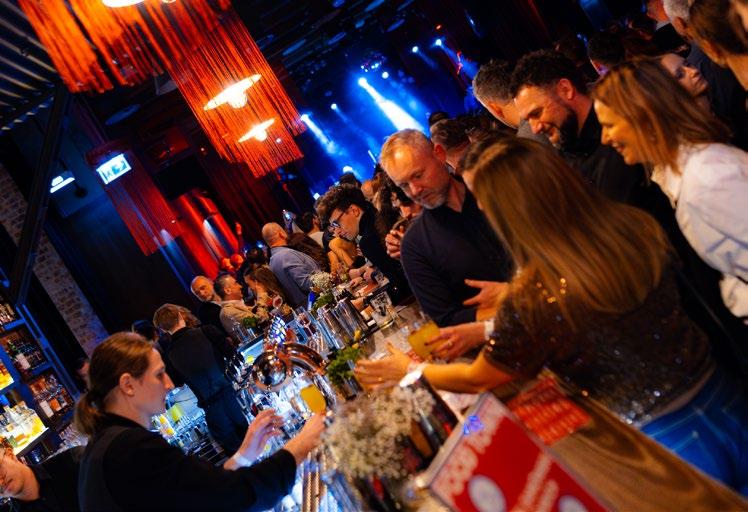

In Warsaw you’re never far from a great night out. If the weather’s warm, simply head to the river. Elsewhere skint students patronise the dive bars of The Pavilions (G-7, courtyards of ul. Nowy Świat 22/28); for a more mature alternative crowd seek out the artsy bars across the river in Praga (p.64); for a lark with the lads, hit the party strip on ul. Mazowiecka (F-6/7). In practice, bars will stay open well past their given hours if business is good, but also bolt the doors early if not. Visit our website to refine your search and see more reviews. Na zdrowie (cheers!)!
Club & Cocktail Bar
Located right in Fabryka Norblina, this spot effortlessly blends lovely piano music with fresh cocktails, great food and quiet conversation. The historic building that houses the Piano Bar has been adapted to provide unforgettable musical experiences in every corner. Whether you immerse yourself in the atmosphere on the ground floor, enjoy the sounds on the first-floor mezzanine, or discover a secluded spot, you will experience the full range of musical sensations.Signature cocktails take mixology to a whole new level with top-tier ingredients and unique tastes. The wine list is, similarly excellent with a wide range of glasses from all over the world. When it comes to the food menu, you’ll find dishes also from around the world. Many are perfect for sharing in a group while you listen to music, or enjoying as a snack by yourself.
Qul. Żelazna 51/53, MRondo ONZ, tel. +48 533 44 48 88, www.pianobar.com.pl.
Open 17:30 01:00; Fri, Sat 17:30 04:00; Sun 17:00 00:00; closed Mon. €€. BE
Club & Restaurant
MOXO is a unique concept right in the center of Warsaw at Fabryka Norblina. And it all beats to the rythym of Nikkei, a type of culture that melds the cuisine, music and drinks of Japan and Peru that resulted from a long history of immigration from Japan to Peru. Find traditional Peruvian drinks like Pisco sours alongside delicious cocktails that use wasabi and sake. In the restaurant, find sushi alongside traditional Peruvian ceviche. With Poland’s largest LED screen, a cutting-edge sound system and amazing musical events, MOXO offers a night you won’t forget. Friday nights are Dance Nights in which every week has a different DJ. On Wednesdays through Thursdays, you’ll find “Dinner Beats” On Saturdays, enjoy Rouge dinner show and party, which is Warsaw’s first acrobatic show for adults (inspired by Cirque du Soleil).
Qul. Żelazna 51/53 (Fabryka Norblina), MRondo ONZ
tel. (+48) 726 627 627, www.moxo.pl
Open 12:00 01:00; Fri 12:00 03:00; Sat 16:00–03:00; closed Mon, Sun. €€€. XUBE
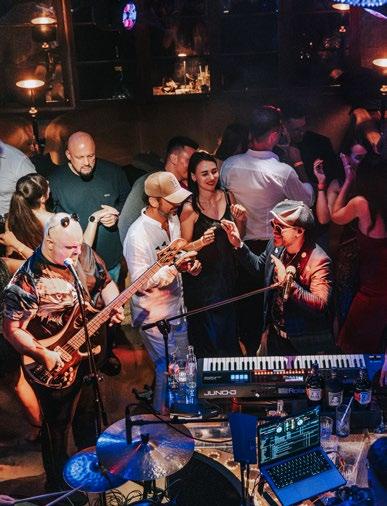


With consistently delicious food, delightful drinks, and music, Food Hall Elektrownia (p.102) serves up fun all week long.
Cocktail Bar
If you’re eager to experience Polish vodka the right way (sip, don’t shoot!), go straight to the source. Located on the 3rd floor of the Polish Vodka Museum (p.65), this spectacular bar makes dozens of their own artisanal alcohol infusions - raspberry with rosemary, horseradish, or mango lassi are just a few of their surprising and constantly changing flavours. The current concept is based on the sense of touch and sight, fabrics, colours and texture. The lovely seasonal terrace offers great views of the heart of Praga and you can also try a premium whisky tasting from The Secret Speyside Collection. Na zdrowie!QK‑2/3, Pl. Konesera 1 (Centrum Praskie Koneser), MDworzec Wileński, tel. (+48) 22 419 31 52, www.koneserbar.pl. Open 16:00 23:00; Fri, Sat 15:00 01:00; Sun 15:00 23:00; closed Mon. Subject to change. €€. UB6
C-1 Map Coordinate
Rooftop Cocktail Bar
Amar Beirut, the incredible Lebanese restaurant offering delicious dishes and incredible atmosphere, also offers another big selling point: a stellar rooftop bar. Unwind in the afternoon sun and see the switch from morning cocktails to evening drinks. Try some signature cocktails made by top-tier, award-winning bartenders. Or, try some excellent shisha with a variety of flavors. Of course, there’s plenty of live entertainment here too.
If you’re hungry, don’t forget to check out their incredible food offering with dishes like hot, locally baked Lebanese breads, authentic falafel, traditional tabbouleh salad, hummus, grilled dishes and desserts that are an integral part of Lebanese culinary culture. QŻelazna 51/53, MRondo ONZ, tel. (+48) 799 600 700, www.amarbeirut.pl. Open 12:00 24:00; Fri 12:00 02:00; Sat, Sun 08:00 02:00. €€.BE6
Wine Bar
This is the ultimate wine and cheese spot, with tons of cheese and classes of delicious, velvety wine that complement the superb flavors.
Opening in October, Figa z Makiem (Fig with Poppies) Cheese Box Bar offers an array of delectable snacks from all over the world, with a special focus on cheese (and the best wine to pair with it), including sheep, goat, cow, Italian, Spanish and French. And, for the real wine lovers, there’s even a cheese with a red wine base. If you dont want to try the wine and cheese there, you can grab an elegant take-out box that includes cheese (of course), a bottle of wine and a card! The take out option is great for presents and the dining in option means you can have an intimate moment with friends (or by yourself) over a glass of wine and some of the best snacks around! QK‑2/3, Plac Konesera 2, MDworzec Wileński, tel. (+48) 538 359 777. Open 11:00 20:00; Sat 12:00 22:00; Sun 12:00 20:00; closed Mon. €€. BS6
Rooftop Cocktail Bar
Located atop the highest building in the EU, and the tallest skyscraper in Poland, right in the heart of the city, is HighGarden Rooftop Lounge, a bar with soul and flavors and excellent cocktails right in the middle of the sky. Known as the highest cocktail bar in the EU, this place is found on the 49th floor of the VARSO Tower and offers some spectacular views as you sip your drinks. The ambiance is top-notch: a green oasis of plants, and a real garden suspended in the clouds with direct access to an observation deck. This spot is known for signature cocktails and a wide range of mocktails along with a menu of great snacks inpsired by local flavors. It’s truly elegant and considered “a nightlife spot with a soul.” Come to celebrate, eat, drink, have good conversation and gaze at the skyline. A must after a long day of wandering around the city! See p.16 for more details). QE‑8, Varso Tower, Chmielna 69, MRondo ONZ, www.highlinewarsaw.com. Open 10:00 22:00. €€. GUBE
A unique, boutique club with a range of house music and an intimate vibe? Sign us up! Club MOON has a very cool offering, with every Saturday - for a select number of 400 club members - major names in the DJ scene will play house music, deep house, afro house, melodic house, disco house, organic and tech house. This is the spot to be with all kinds of wellknown artists playing here, including HOT SINCE 82, Damian Lazarus, Catz ‘N Dogz, Claptone, Adam Ten,

Carlita, Salome Le Chat, SAMM, Yulia Niko, Francis Mercier, Nick Morgan, Jimmy Jules, LP Giobbi, Krystal Klear and many more. Every Saturday night, starting at 11 p.m. -- seriously, don’t miss this place!QJ‑8, Wioślarska 6, MCentrum Nauki Kopernik, tel. (+48) 533 53 32 23, www.moonwarsaw.pl/. Open Sat 23:00 06:00. €€€. E
Cocktail Bar
Making its presence known in the Polish capital’s urban jungle, the anomaly that is Pepper Events adds an exotic flair to the higher-class venues of Warsaw. The unique, sophisticated space includes both a euphoric club scene and a restaurant with an indulgent food menu. That’s all amplified with a stunning year-round garden and cocktail bar of the highest calibre, making it an ideal space for an intimate business meeting, a banquet, a product presentation, a large corporate event or even bachelor/bachelorette parties.QF‑9, ul. Nowogrodzka 47A, MCentrum, tel. (+48) 730 06 80 68, www. pepperevents.pl. Open 12:00 24:00. €€€. XBE6
If you’ve come to SEN (PL for ‘dream’) to enjoy the restaurant (18:00-01:00), we give you a humble nod for making a solid choice, but if you’ve decided to stay and sup on the awesome cocktails, we salute you - you won’t be disappointed. Although not huge, the panoramic backdrop pairs up perfectly with the lounge vibe. There is a door selection, so dress to impress, and don’t be put off - the staff do their best to maintain the unique and positive character inside, which just adds to your enjoyment. The music’s great and the bar is well stocked, what’s not to enjoy? If you stay until the end, you may very well agree with the venue’s tag line: it was all a dream.QJ‑7, ul. Wioślarska 6, MCentrum Nauki Kopernika, tel. (+48) 883 02 50 25, www.senwarsaw.pl. Open 19:00 06:00; closed Mon, Tue, Wed, Thu, Sun. Open Fri & Sat 19:00 06:00 only. €€€. XE
Teatr Sabat
Cocktail Bar
Move aside, New York and Las Vegas! Warsaw has a venue that rivals those in the cities most famous for their theater! Teatr Sabat, the only variety theater in Poland was created on the model of Warsaw musical theaters with cabaret, musicals, and more. Incredibly talented performances from singers, Polish actors and ballet companies all take center stage here. Plus, the classic auditorium concept (a la movie theaters) is gone here -- instead you have
elegant tables and chances to grab a drink while you watch the show. All created by Małgorzata Potocka, a successful dancer, choreographer and director who has specialized in promoting Polish culture around the world -- this is the space to be for anyone who loves the stage!Qul. Foksal 16,, MNowy Świat Uniwersytet, tel. +48 (22) 826 23 55, www.teatr sabat. pl/en/contact. Open Mon 11:00 16:00*; Tue, Wed 10:00 16:00; Thu, Fri 12:00 20:00; Sat 13:00 20:00; closed Sun. ticket office opening hours. €€.
Rooftop Cocktail Bar
The Roof offers a captivating setting for enjoying drinks, live music, a delightful dinner, and gathering with friends. A truly sky-high experience, the stunning vistas of the city are perfectly complemented by the bar offer, which invites visitors to explore the exciting and diverse selection of cocktails, and unique concoctions that have been curated to reflect the extraordinary essence of Warsaw’s skyline and capture the spirit of the city in every sip. In line with the Crowne Plaza Hotel, the prestigious name that looks after this magical nest, The Roof floor boasts stylish interiors that contribute to its wonderfully sophisticated atmosphere. The sights are further enhanced by a range of acoustic performances and intimate cultural events that are hosted here.QC‑8, ul. Rondo Daszyńskiego 2, MRondo Daszyńskiego, tel. +48 881 97 41 44, www. theroofskybar.com. Open 18:00–24:00; Thu, Fri, Sat 18:00 01:00. €€€. UE
Cocktail Bar
The ROOTS has secured a very special place in the hearts of serious cocktail devotees, both local and international. For starters, the bar is a shrine to the noble art of being a barman/mixologist, and you should definitely check out their intriguing collection of vintage and antique ‘tools of the trade’ – the collection of mixers alone already stands at nearly 100 items! Add to this a library of antiquarian books on the subject of bartending/cocktail mixing and you know you are dealing with some hardcore mixologists. The ROOTS is so well-versed in the art of making cocktails, they have enough tricks for two great menus - one featuring classics of the trade and another which presents signature drinks based on seasonal regional flavours. Food is also available in the form of a Polish fusion menu, which is intriguing enough to at least take a peak at.QF‑5, ul. Wierzbowa 11, MRatusz Arsenał, tel. (+48) 660 333 983, www. theroots.pl. Open 17:00 24:00; Fri 17:00 02:00; Sat 14:00 02:00; closed Mon, Sun. €€. 6
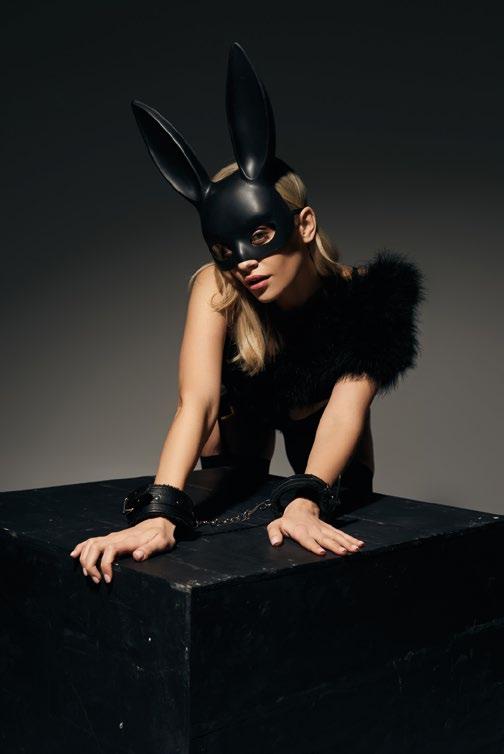

Warsaw offers a wide diversity of shopping experiences, from old school markets to luxury boutiques (primarily along ul. Nowy Świat and ul. Mokotowska: G-7, H-8/9) to some of Central Europe’s most modern shopping malls. For visitors, it’s an opportunity to shop exclusive designer brands, catch bargains on known commodities or find forgotten treasures. Happy hunting!
Amber Art Gallery - Silver Line
This gorgeous gallery specialises in luxury handcrafted jewellery of the amber variety, but crystal, silver and gold items can be purchased here too. This is the location of the largest and oldest amber dealer in the city, a family run business going back to 1988, proudly selling amber of Polish origincertified by the International Amber Association. Amber Art Gallery - Silver Line Even heads of State and royalty have been spotted procuring presents here, from Bill Clinton to Japanese princesses (whose thank you letters you can see inside)! Choose from pieces by Polish artisans and top designers, plus high quality jewellery made with other precious stones.QF‑4, Rynek Starego Miasta 9/11/13, MRatusz Arsenał, tel. (+48) 22 831 69 61, www.warsawamber.pl. Open 10:00 19:00; Sun 10:00 17:00.
A phenomenally successful Polish jewellery chain where customers can select their own components to create a unique and personalised piece. The range continues to grow, with the original luxury charm bracelet still the biggest seller. Choose a bracelet type and any number of simple silver or gold plated charms in a variety of shapes, then have it hand-engraved with whatever or whoever means a lot to you. A ‘must-have’ item amongst local celebs and fashionistas. Also at ul. Francuska 27 (L-7), Westfield Arkadia (B/C-2), Westfield Mokotów, Sadyba Best Mall and Centrum Handlowe Janki.QH‑9, ul. Mokotowska 63, MCentrum, tel. (+48) 506 19 08 97, www.lilou.pl. Open 11:00 19:00; Sat 11:00 18:00; Sun 11:00 16:00*.
Le Szapo Hat Shop
This classy hat boutique (whose name is a Polish phonetic pronunciation of the French ‘le chapeau’) brings French flair to Warsaw, offering a range of hats from Panama to fedoras, berets, straw hats and much much more. There's plenty for the colder weather, too, like felt hats and more. The brands are primarily from Poland and Italy, but now include their own Le Szapo label headpieces designed right here in Kraków (congrats!). All with a retro urbane atmosphere and warm living room vibe created by the welcoming staff, who will gladly help you find the perfect headpiece. Plus, if you don't want to carry a hatbox around, you can always order online!QG‑11, ul. Mokotowska 8, MPolitechnika, tel. (+48) 577 285 007, www.leszapo.com. Open 11:00 20:00.
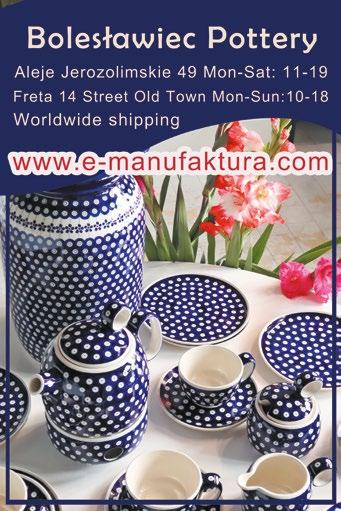
It’s sometimes hard to find that perfect gift from Poland to take back home with you. We understand the problem, and it may be the case you get home, only to regret not having bought that sweet little tea cup you had your eye on. Now this is why we whole heartedly recommend E-Manufaktura, which is not only a shop in Warsaw, but also an online shop for you to look through an extensive catalogue in the comfort of your home. From egg cups, plates, bowls, and all other kitchenware you can think of, you’ll find it here! The famous hand-painted ceramics, Bolesławiec, make up the core of what’s on offer. It doesn’t get more Polish than this. A must-use service. QF‑3, ul. Freta 14, MRatusz Arsenał, tel. (+48) 22 636 06 84, www.e manufaktura.com. Open 10:00 18:00.
Find a huge range of products that are perfect to take home for friends and family -- and oh-so-Polish! Roam into the Warsaw Old Town to find these two delightful shops, which sell gifts made in Poland and recalling Polish history and tradition. Find a huge range of products with colorful folk patterns, Polish ceramics and porcelain, even models of Polish cars,
T-shirts with fashionable prints, and all kinds of gifts sporting various Warsaw symbols. Check out their second location on ul. Freta 26/28.QF‑4, Piwna 17/19, MRatusz Arsenal. Open 10:00 20:00; Fri, Sat, Sun 10:00 22:00.
& Studio Ceramiki
Of all Polish gifts, none are as visually exciting as Bolesławiec pottery. With a mix of cups, plates, bowls and other kitchenware with various colours and designs, you can’t go wrong to buy friends, family, or even yourself one of these classic but quirky items. What’s more, at this location, not only do you get the chance to buy something of your pleasing, but you can join in some workshops (offered Thu-Sat 16:00 or 18:00) to make and paint anything you want in the studio! QF‑8, Al. Jerozolimskie 49, MCentrum, tel. (+48) 690 80 01 84, www.pomaluj.art. Open 11:00 19:00; closed Sun.
Designer Outlet Warszawa
Set inside an impressive collection of buildings evoking the Baroque style of Warsaw’s Old Town, this is a premium outlet mall, with a gorgeous interior. You’ll find discounts ranging from 30-70% off on brands like Adidas, Armani, Boss, Calvin Klein, Coccinelle, GAP, Guess, Furla, Karl Lagerfeld, Levi’s, Liu Jo, Longines, Luisa Spagnoli, Michael Kors, Nike, Pinko, Polo Ralph Lauren, Timberland, Tommy Hilfiger and more. Just 30mins from the city centre and 20mins from Chopin Airport, it’s easy to reach. Qul. Puławska 42E (Piaseczno), MWilanowska, tel. (+48) 22 737 31 15, www.designeroutletwarszawa.pl. Open 10:00 22:00; Sun 10:00 21:00*.
In its effort to get people out of shopping malls and into churches, the Polish government has imposed regulations preventing most businesses from opening their doors on Sundays. Of course, there are exceptions, including 7 special Sundays when shops are open each year, and the rules don’t apply to restaurants, bars, cafes, pharmacies, gas stations, kiosks, bakeries, open-air markets, souvenir shops and anywhere the business owner is personally working behind the counter. When you see an asterisk* after the Sunday hours in our guide, that means the venue is closed on Sundays.
Upcoming shopping Sundays: Dec 15, 22
Elektrownia Powiśle
Imagine this as a multifunctional centre, including sooped up shops completely new to Poland (nay, in Central and Eastern Europe even!) such as Urban Outfitters, True Color, Weekday, COS, Elementy, Balagan, Galilu, Chosen By (to name a few), plenty more boutiques, beauty salons, a top floor event space, as well as their awesome gastro and nightlife offer (p. 102 ). Q H/I‑6, ul. Dobra 42, M Centrum Nauki Kopernik, tel. (+48) 22 128 56 00, www.elektrowniapowisle.com . Elektrownia open Mon Sun 11:00 21:00. Beauty Hall open Mon Sat 08:00 20:00, Sun 10:00 19:00.
Save up to 70% on premium name brands like Adidas, Nike, Ecco, Medicine, Guess, Under Armour, Pepe Jeans, Converse, Vans, Puma, Tefal, Tommy Hilfiger, Smyk, 4F, RTV Euro AGD and more.The options here are nearly endless and you can find amazing premium wear for such a low price that it’s going to be hard to rationalize NOT buying everything.
Plus, you can find food and cafe options here so it’s really a spend-all-day or shop-till-you-drop kind of experience. To get there take Metro M2 from 'Świętokrzyska' to 'Bródno' and then change to tram no. 1, 3, 4 or 25 and get off at 'Toruńska' or 'Annopol'. Check jakdojade.pl for live timetables. If you want to drive (and bring your electric car), you're in luck! They have a special charging station for electric vehicles.Qul. Annopol 2 (Białołęka), tel. (+48) 22 441 90 00, www.annopol.factory.pl. Open 10:00 21:00; Sun 10:00 20:00*.
This outlet shopping mall southwest of the city centre is preoccupied with fashion, offering top brand names at 30-70% discounts over regular rack rates, all in a gorgeous, sun-drenched spot!
FACTORY Outlet Ursus Recognisable brands include Tommy Hilfiger, Marc’o Polo, BOSS, Nike, Adidas, Guess, Calvin Klein, New Balance, Calzedonia, Lindt, Haribo, Tefal, Ochnik, Wittchen, and many more. And, it needs repeating, these are all at a discount. So you can shop premium clothing, jewelry and more for way less than the normal price! One of the only such outlet centres in Europe, you can get there quickly by car via the S8 route or Nowolazurowa street. You can also reach it about 30mins by train or bus; check jakdojade.pl for accurate, up-to-theminute connections.QPl. Czerwca 1976r. 6 (Ursus), tel. (+48) 22 478 22 70, www.ursus.factory.pl. Open 10:00 21:00; Sun 10:00 20:00*.
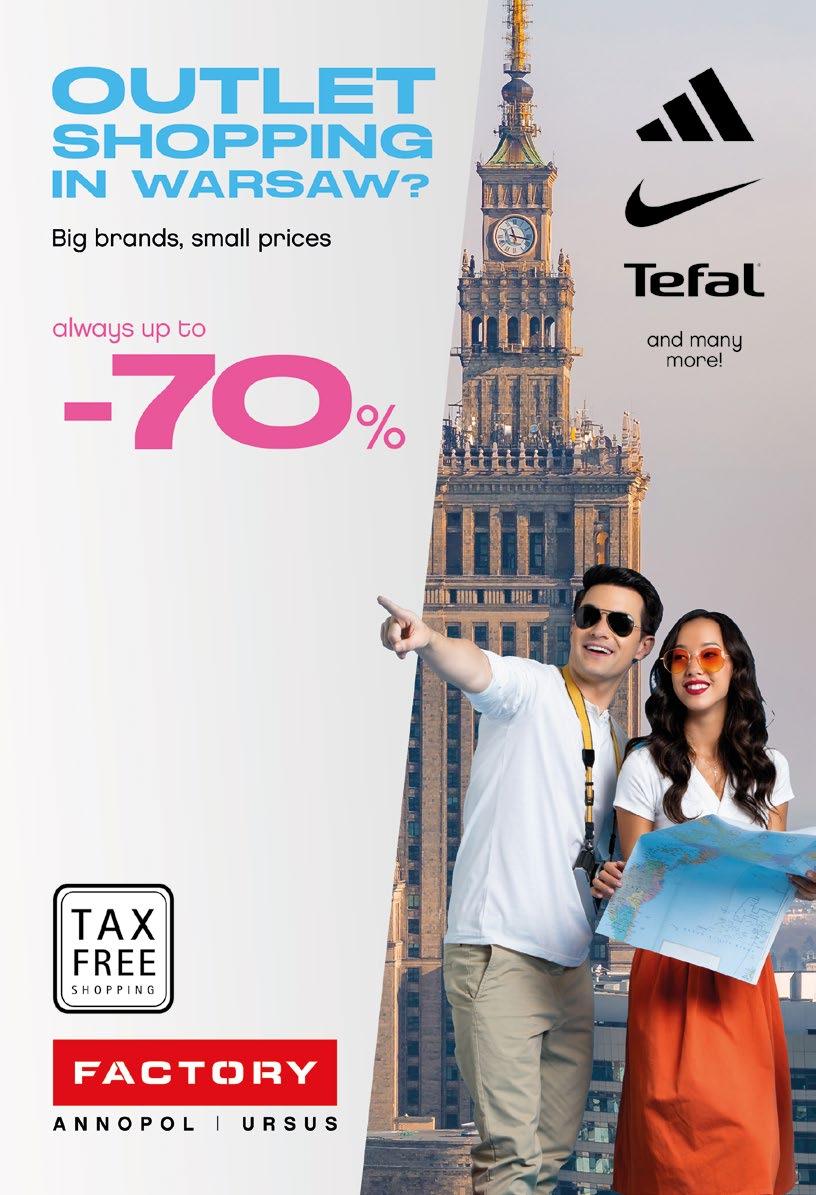
Print space is finite, but the internet is a vast, vacuous void we’ve devoted our lives to filling. If the venue you’re looking for isn’t listed here, you’ll likely find it amongst the hundreds of places in Warsaw listed on our website: warsaw.inyourpocket.com
3/4 Koneser Bar 106
Adam Mickiewicz Monument 49
Agnieszka Osiecka Monument 66
AïOLI Cantine Bar Cafe Deli 90, 92
Amar Beirut 90, 98
Amar Beirut Rooftop Bar 106
Amber Art Gallery - Silver Line 111
Anielewicz Bunker 79
Art Box Experience 83
Banjaluka 92
Beauty Hall 84
Beef n’ Pepper 93
Beer&Wine SPA 84
Belvedere 98
Belvedere Palace 59
Bliski Wschód Vege Street Food & Cocktail Bar 93
Botanical Garden 61
Branicki & Szaniawski Palaces 42
Bristol & Europejski Hotels 51
Browary Warszawskie 32
Bułkę przez Bibułkę 91
BursztyNova Restaurant 93
Centrum Praskie Koneser 65
Choose Your Adventure! 52
Chopin Benches 51
Chopin Monument 59
Ciao Napoli 94
City Sightseeing Warsaw 27
Copernicus Science Centre 56
Cucina Mia 94
Czerwony Wieprz 95
Daebak 95
Designer Outlet Warszawa 112
Elektrownia Powiśle 56, 112
Elektrownia Powiśle Food Hall 102
Elixir by Dom Wódki 89
E-Manufaktura 111
Enel Med 85
Estell Clinic 85
E. Wedel Chocolate Factory Museum 19, 86
E.Wedel Chocolate Factory Museum 74
Fabryka Norblina 33
FACTORY Outlet Annopol 112
FACTORY Outlet Ursus 112
Figa z Makiem Cheese Box Bar 107
Food Hall Browary 102
FOOD TOWN - Fabryka Norblina 103
Fryderyk Chopin Museum 54
Gnojna Góra 46
Gościniec Polskie Pierogi 95
Gospoda pod Zygmuntem 96
Hala Koszyki 21, 36, 103
HELLO! GIFT SHOP 111
HighGarden Rooftop Lounge 107
Highline Warsaw (VARSO Tower) 17, 36
Holy Cross Church 52
InAzia 99
Invisible Exhibition 76
Jan Kiliński Monument 42
Jewish Historical Institute 79
King Sigismund's Column 48
Kładka na Wiśle (Footbridge) 56
Klonn 99
Koneser Grill 99
KUK Restaurant 89
Kumo To Yaki - Fluffy Pancakes
Japoński Grill 96
Le Szapo Hat Shop 111
Lilou 111
Maria Skłodowska-Curie Museum 74
Mariensztat 57 melt museum 75
MK Bowling Entertainment Center 83 MOON 107 Moonsfera 100
MOXO Restaurant & Club
Museum of Hunting & Horsemanship 61
Museum of Life under Communism 75
Museum of Modern Art in Warsaw 76
Museum of Warsaw, Main Branch 45
Museum World of Illusion 82
Myślewicki Palace 60
Nar Restaurant 96
National Ethnographic Museum 76
Nicolaus Copernicus Monument 52
Nova Wola 91, 100
Okopowa Street Jewish Cemetery 79
Old Orangery 60
Old Town Defensive Ramparts 43
Old Town Heritage Interpretation Centre 45
Old Town Square 44
Palace of Culture & Science 29
Palace on the Isle 60
Pasaż Wiecha 35
PaTaThai Powiśle 96
Pepper Events 108
PGE National Stadium 66
Pharmacy Museum 76
Piano Bar Warsaw 105
PierOgarnia 96
Plac Defilad 34
Plac Europejski & Warsaw Spire 33
Plac Grzybowski 34
Plac Konstytucji 36
Plac Pięciu Rogów & ul. Chmielna 35
Plac Piłsudskiego 32
Plac Zamkowy 41
Plac Zbawiciela 36
POLIN Museum 79
Polish Vodka Museum 65
Pomaluj.art - Galeria Bolesławiec & Studio Ceramiki 112
Potocki Mausoleum 63
Powiśle Mermaid Statue 55
Praga Museum of Warsaw 65
Presidential Palace 50
PRIMITIVO Kuchnia i Wino 96
Purr Purr 91, 97
Royal Castle Rozbrat 20 101
Saska Kępa - Ul. Francuska
Saxon Garden SEN 108
Setki Powodów
Skaryszewski Park
Smart Kids Planet 82,
Stacja Caffe
Stacja Grawitacja
St. Anne's Church
St. Anne's Church & Tower
St. John the Baptist Cathedral
Teatr Sabat 108
The Cool Cat
The Little Insurgent Monument
The Roof 108
The ROOTS Cocktail Bar & more 108
The University of Warsaw
To Lubię
Traficar Car Share
U Barssa
U Fukiera 101
Ul. Kanonia
ul. Krakowskie Przedmieście
ul. Nowy Świat
ul. Ząbkowska
Vistula River Boulevards
Vodka Museum
Wabu Sushi & Japanese Tapas 101
Warsaw Arcade Museum 83, Warsaw Barbican

Warsaw National Museum 77
Warsaw Photoplasticon 87
Warsaw Rising Museum 81
Warsaw University Library
Rooftop Gardens 56
Warsaw University of Technology 36
Warsaw Zoo 66
WawaBus 27
Wilanów Lake & Island 63
Wilanów Palace Museum 62
Wilanów Park & Gardens 62
Zachęta National Gallery of Art 77
Złote Tarasy 34

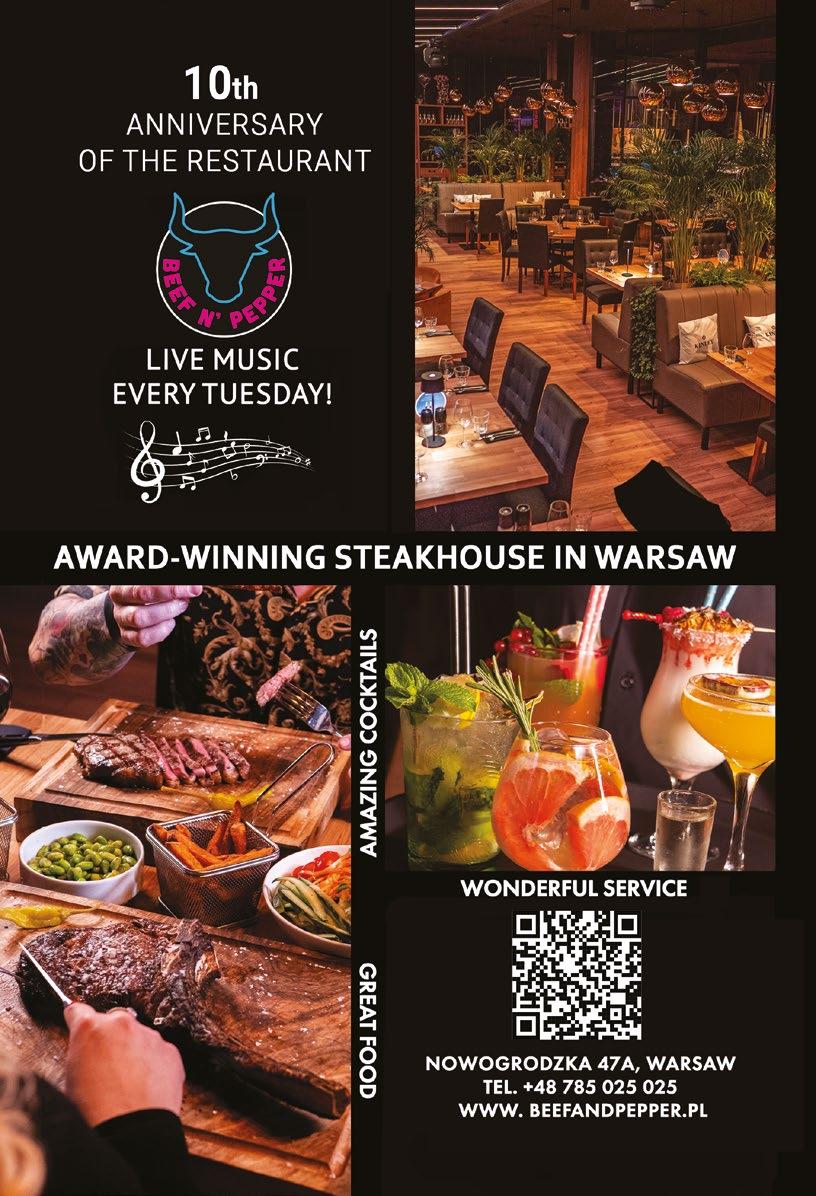

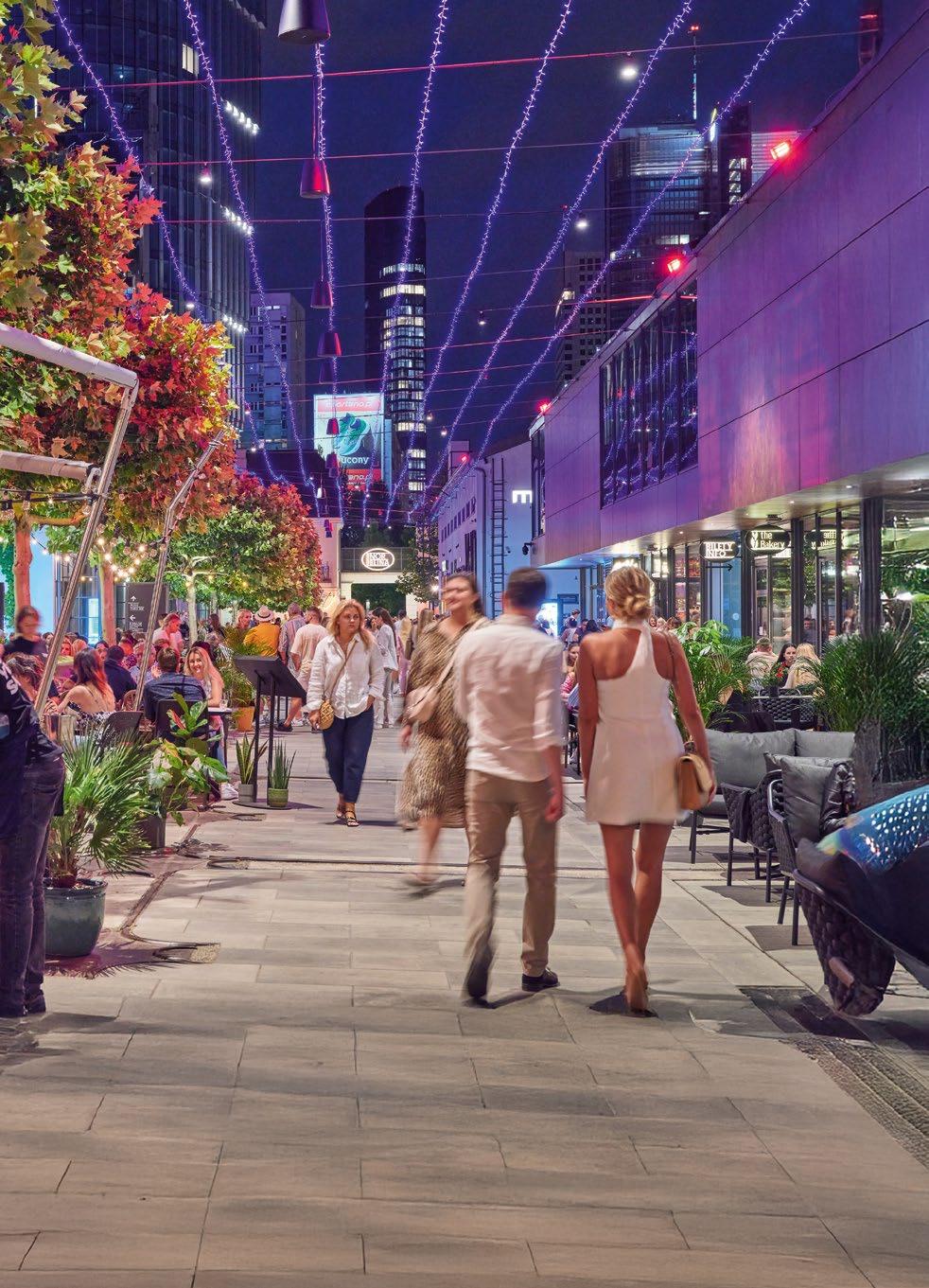
THE
ENTERTAINING
ENTERTAINING
ŻELAZNA 51/53
ŻELAZNA 51/53
